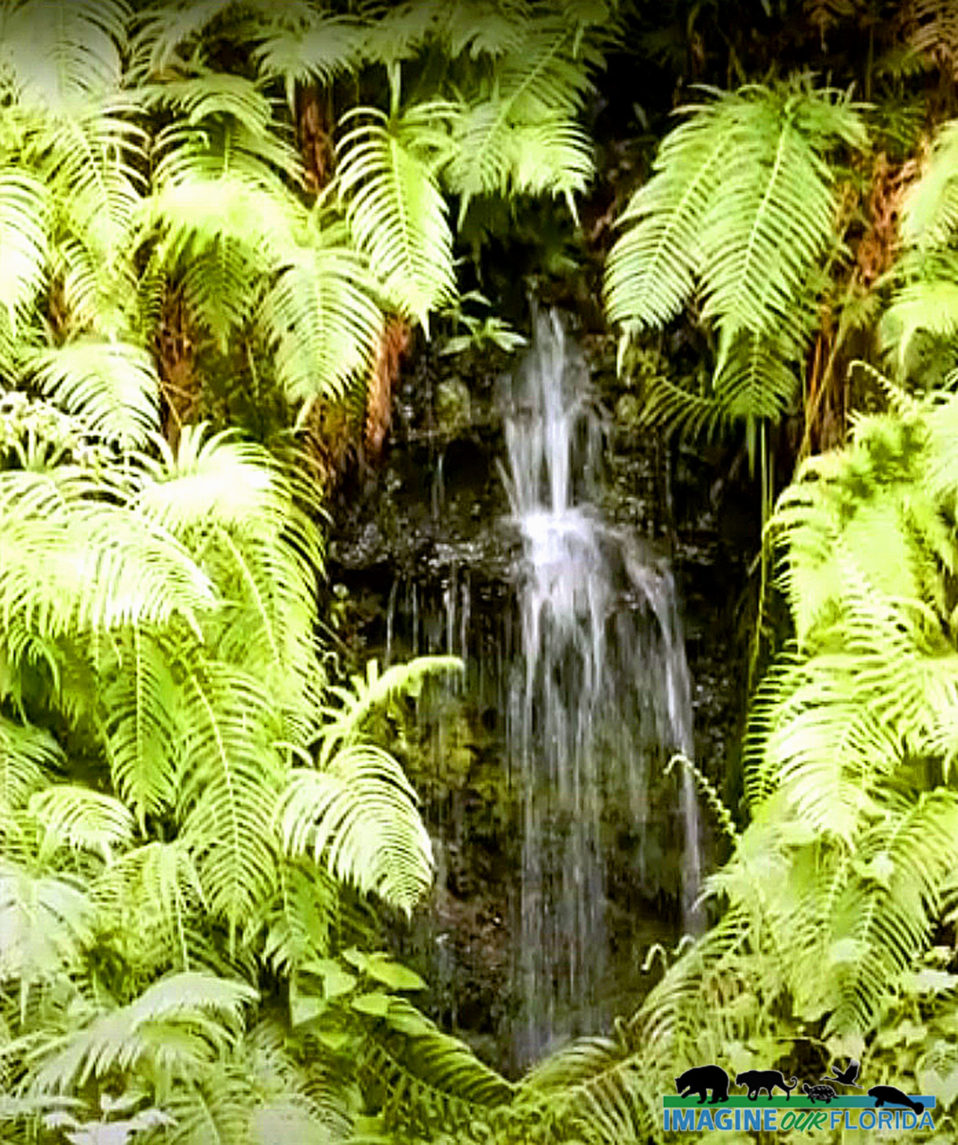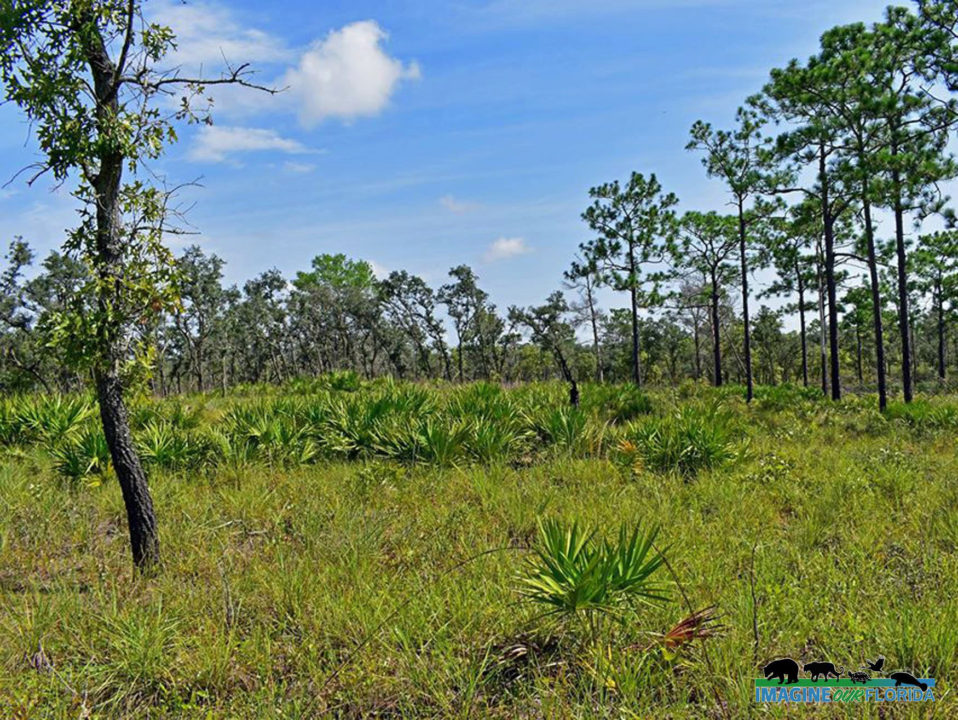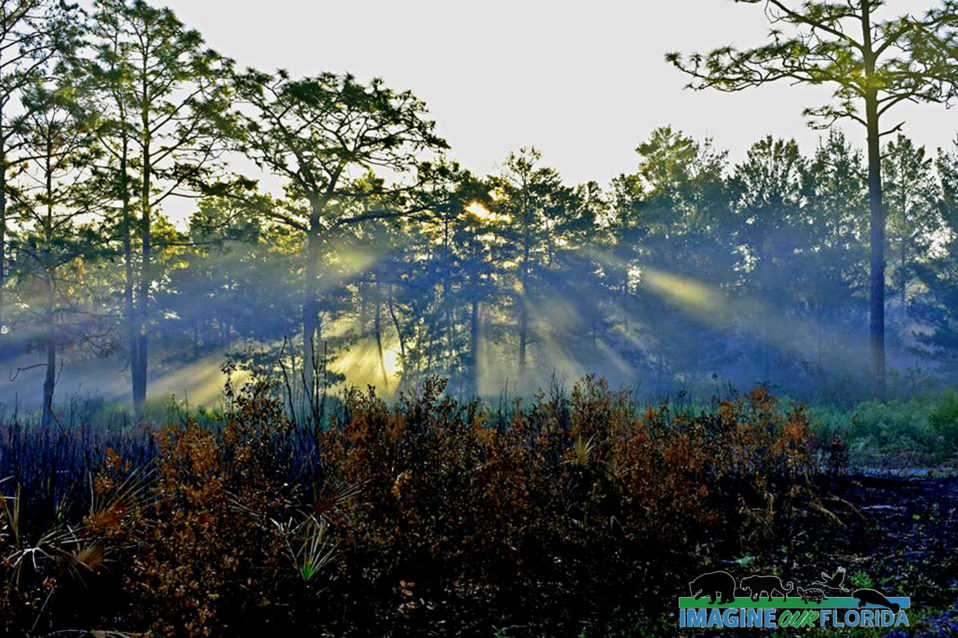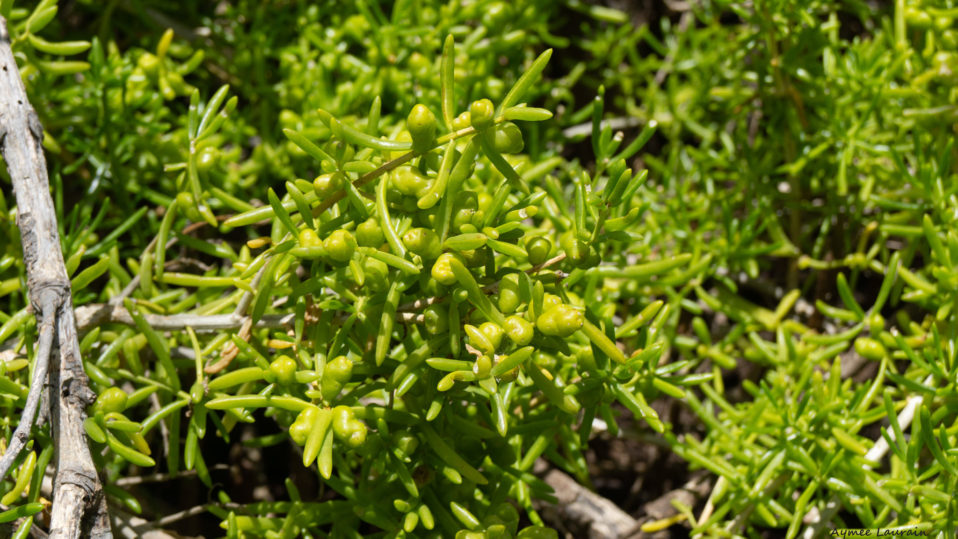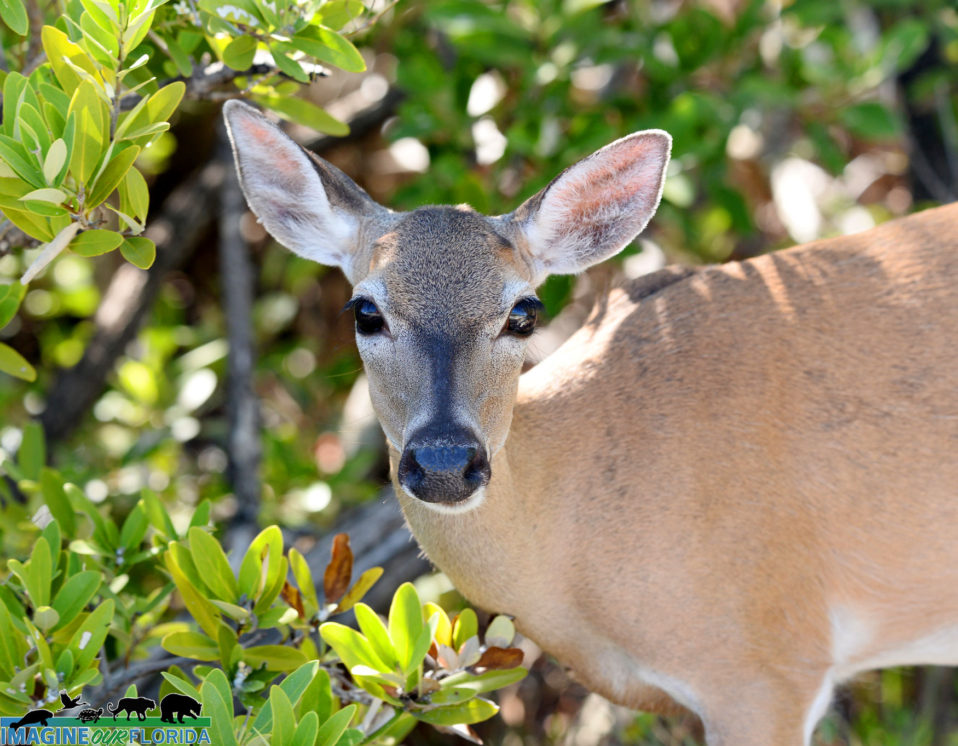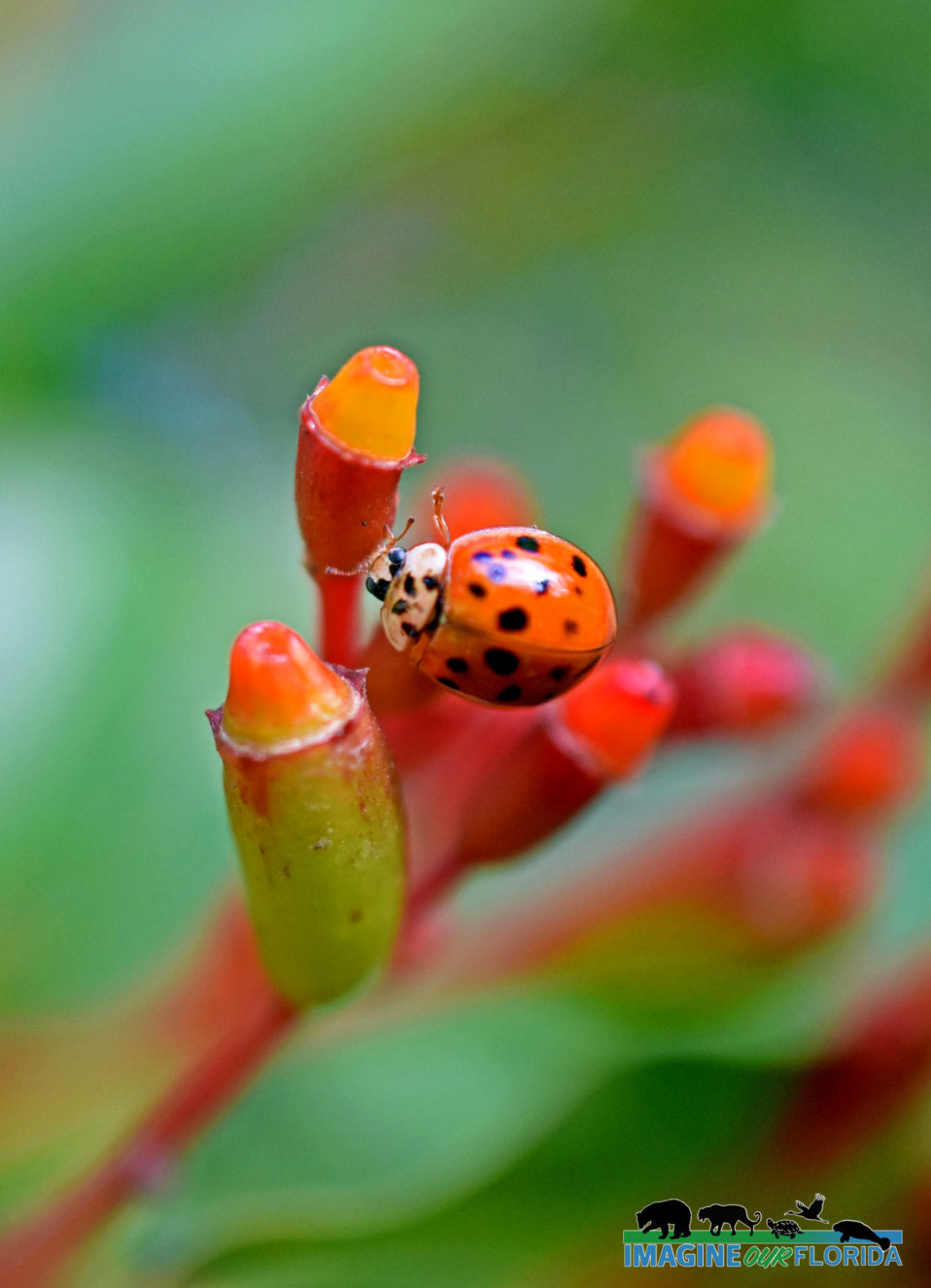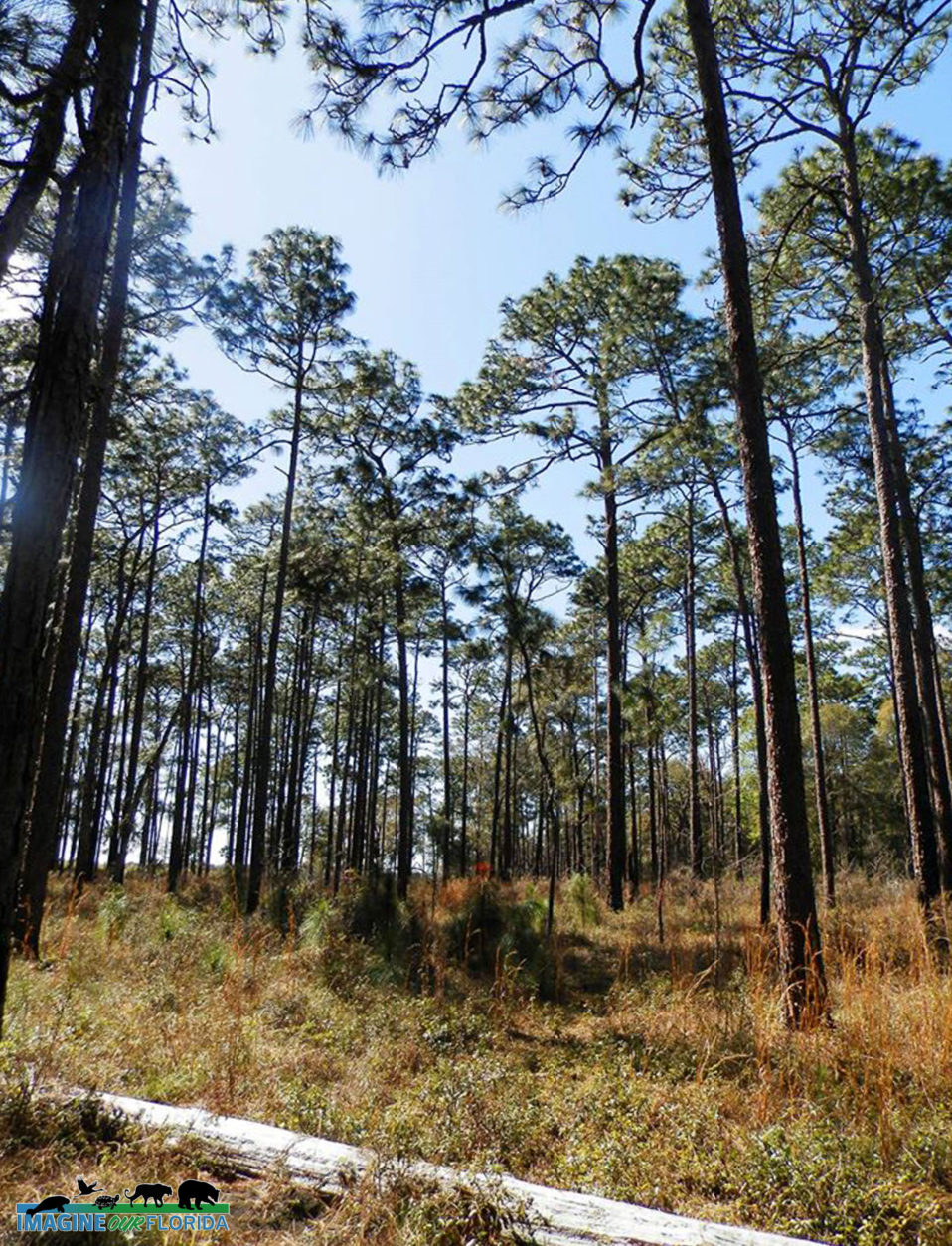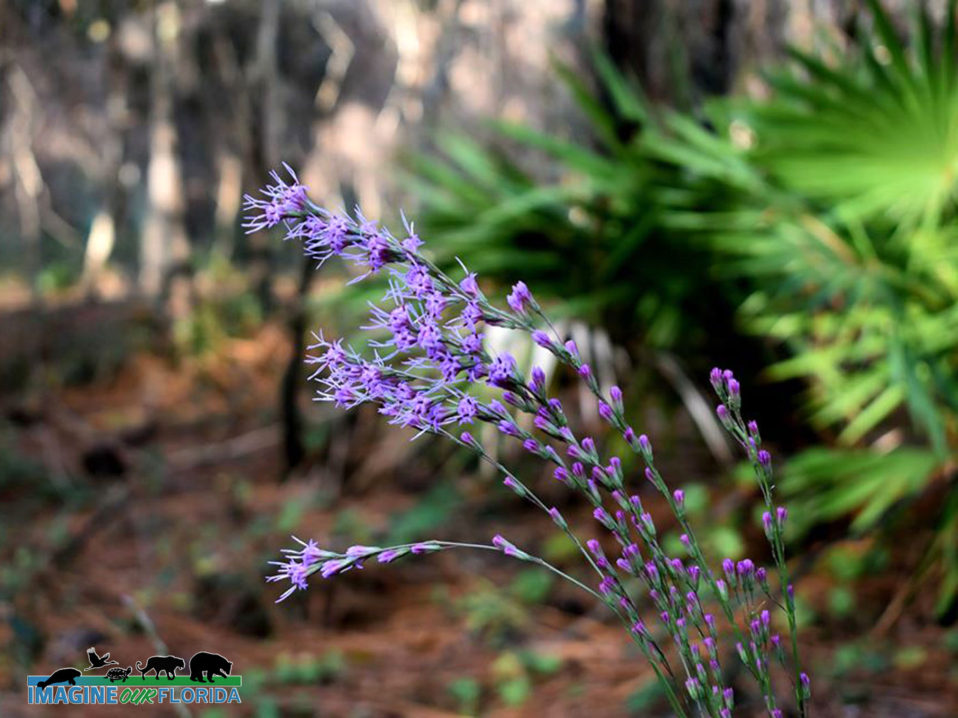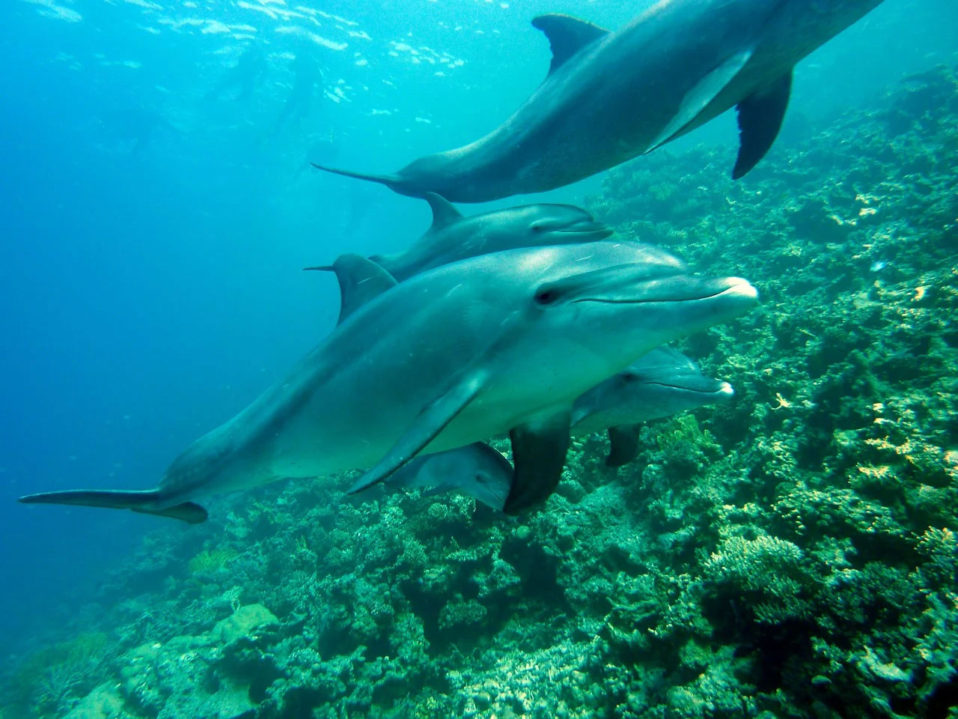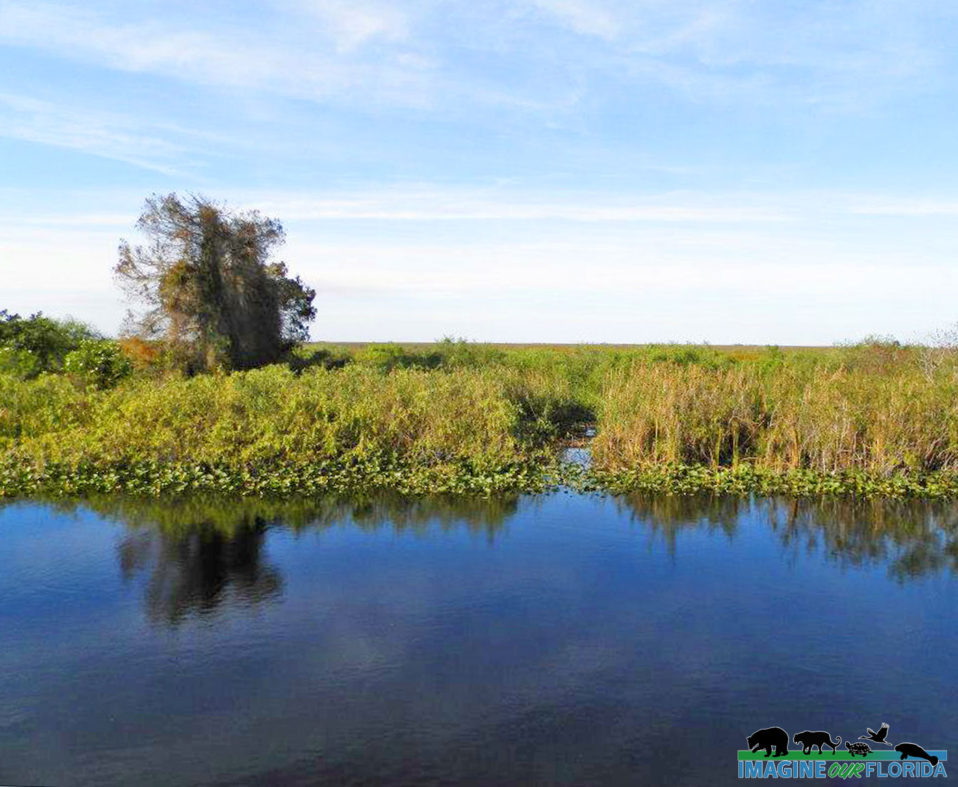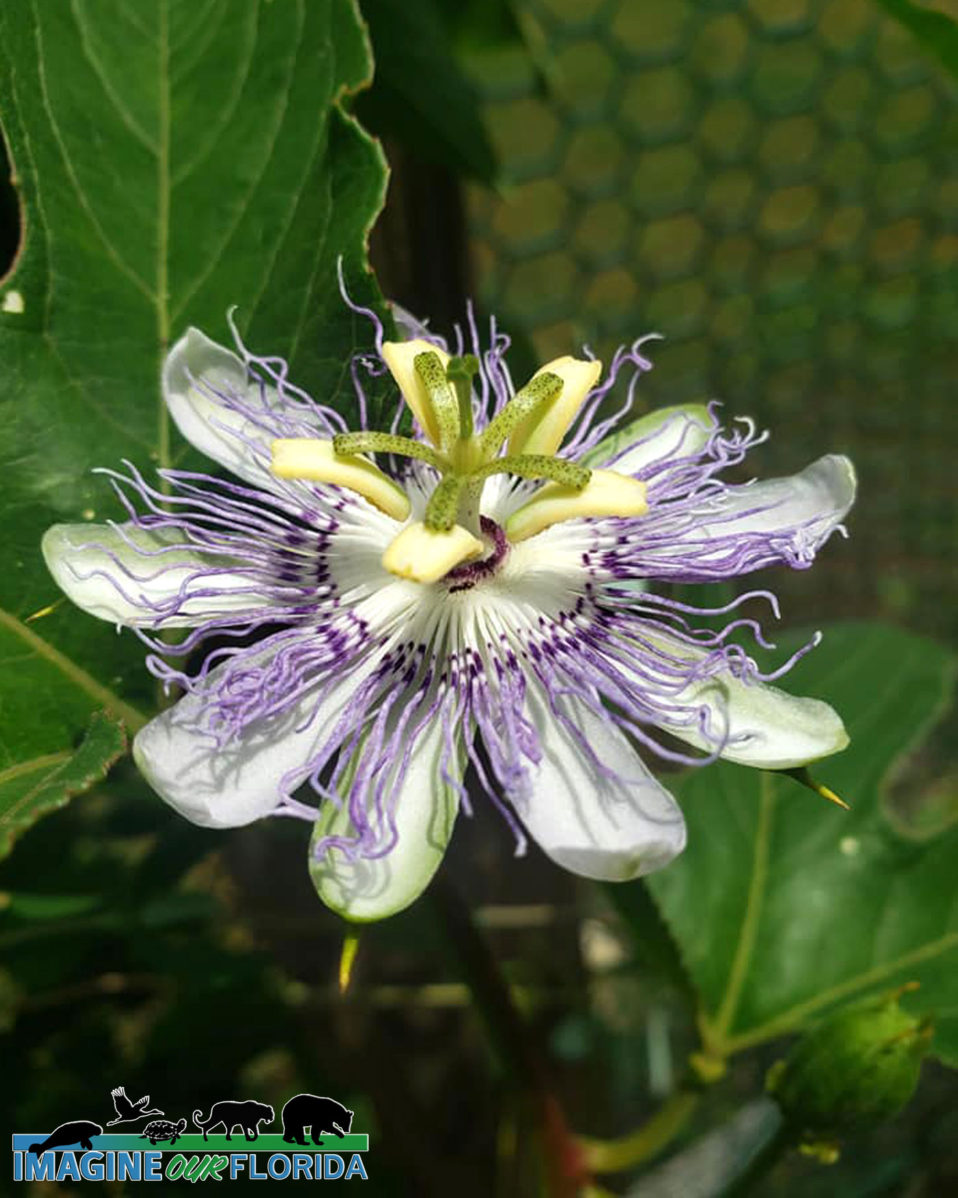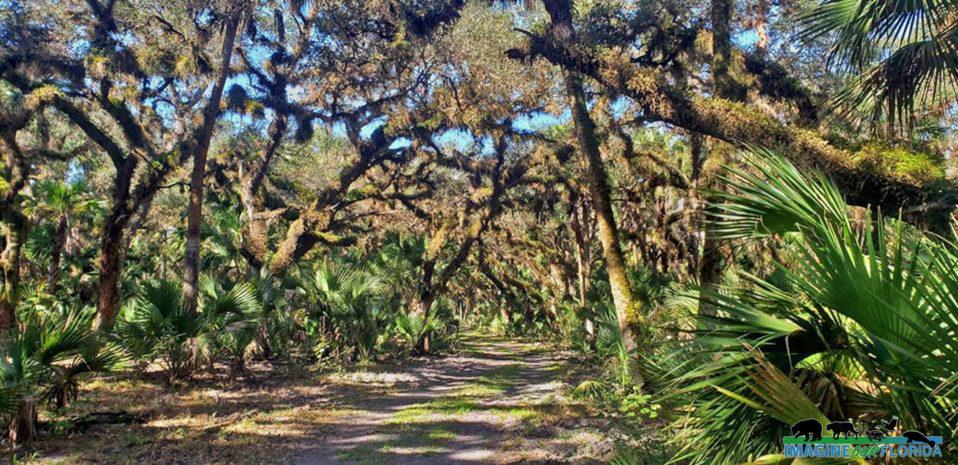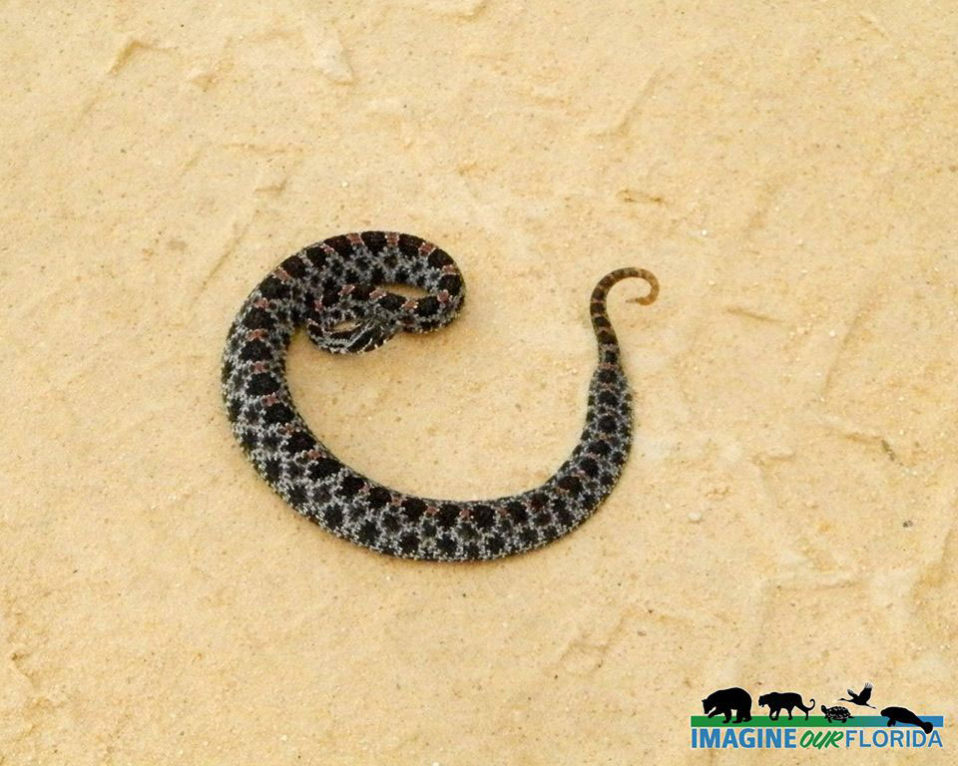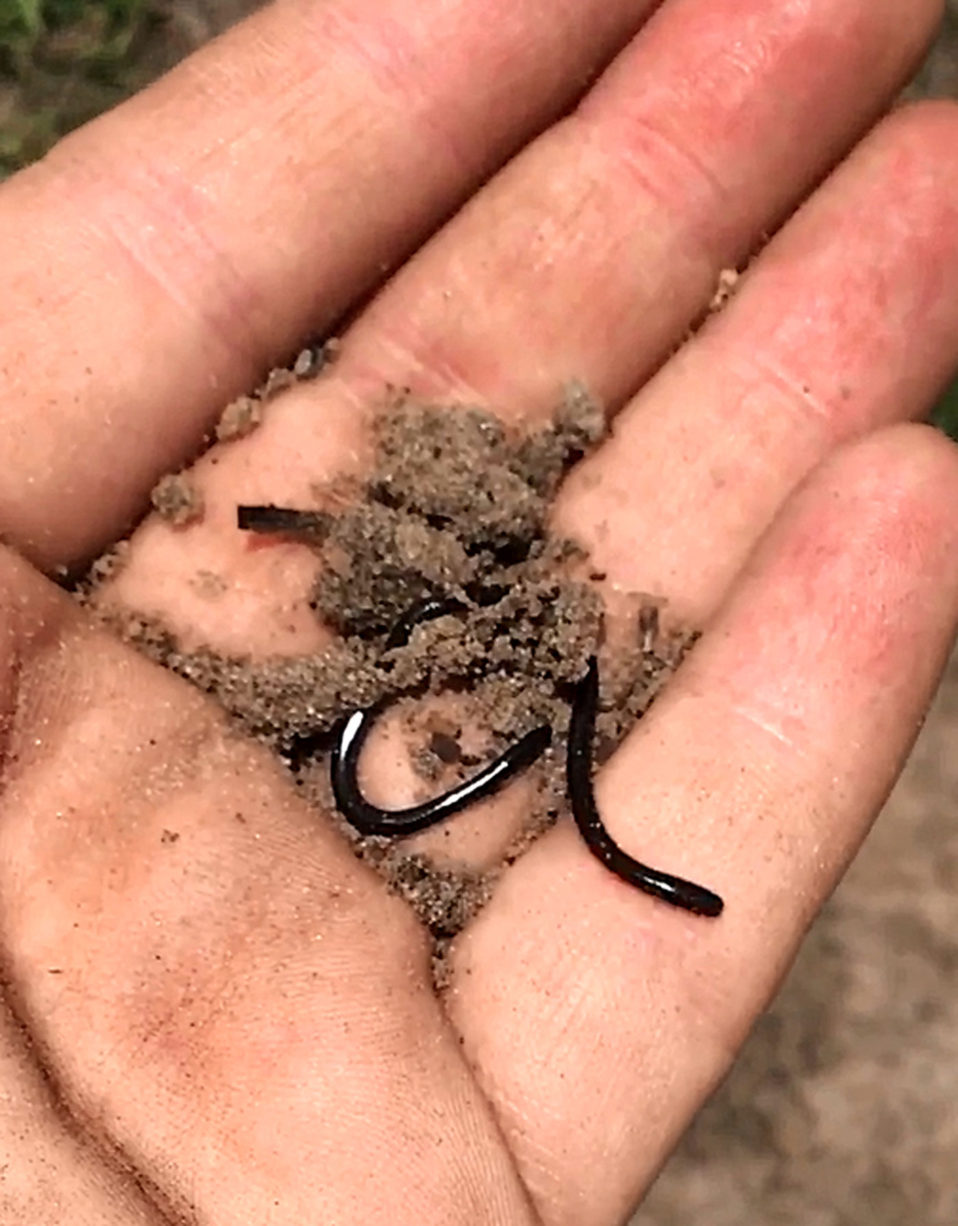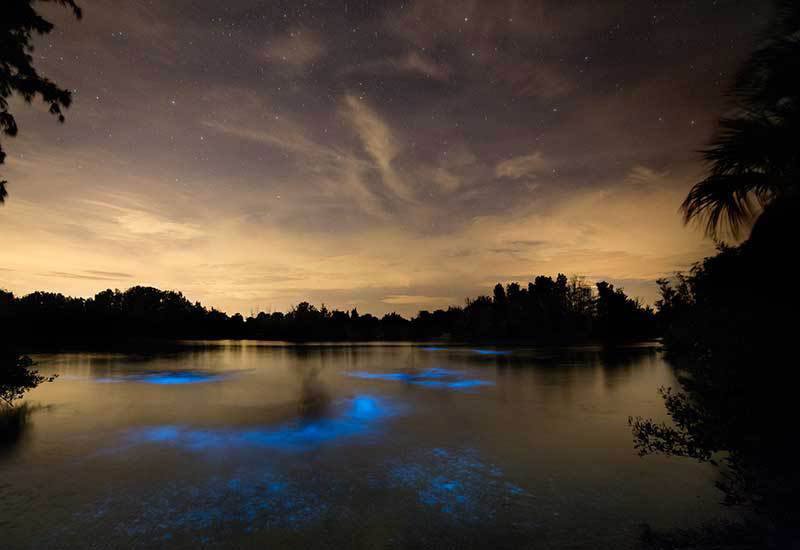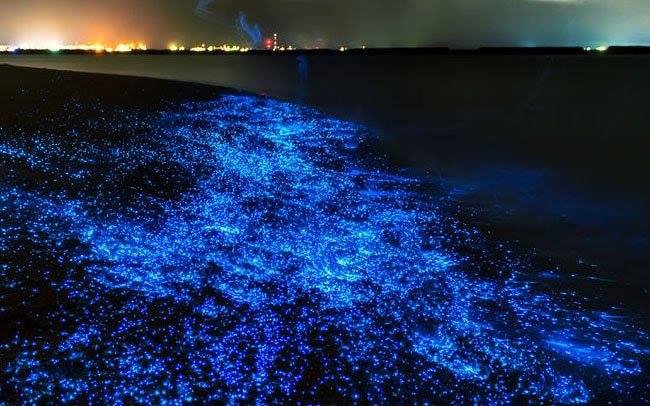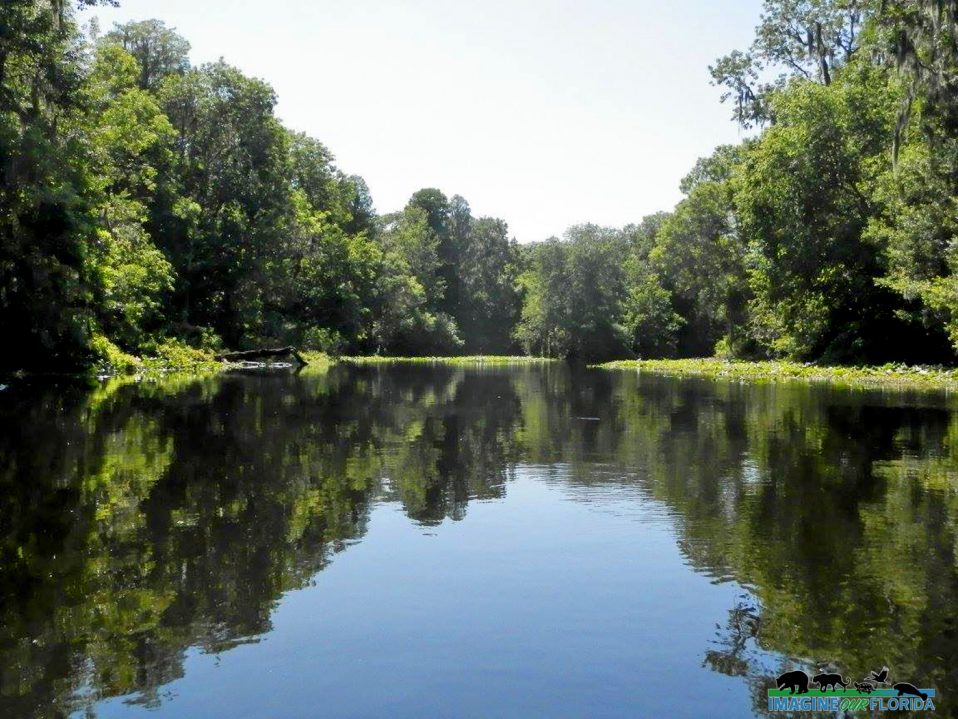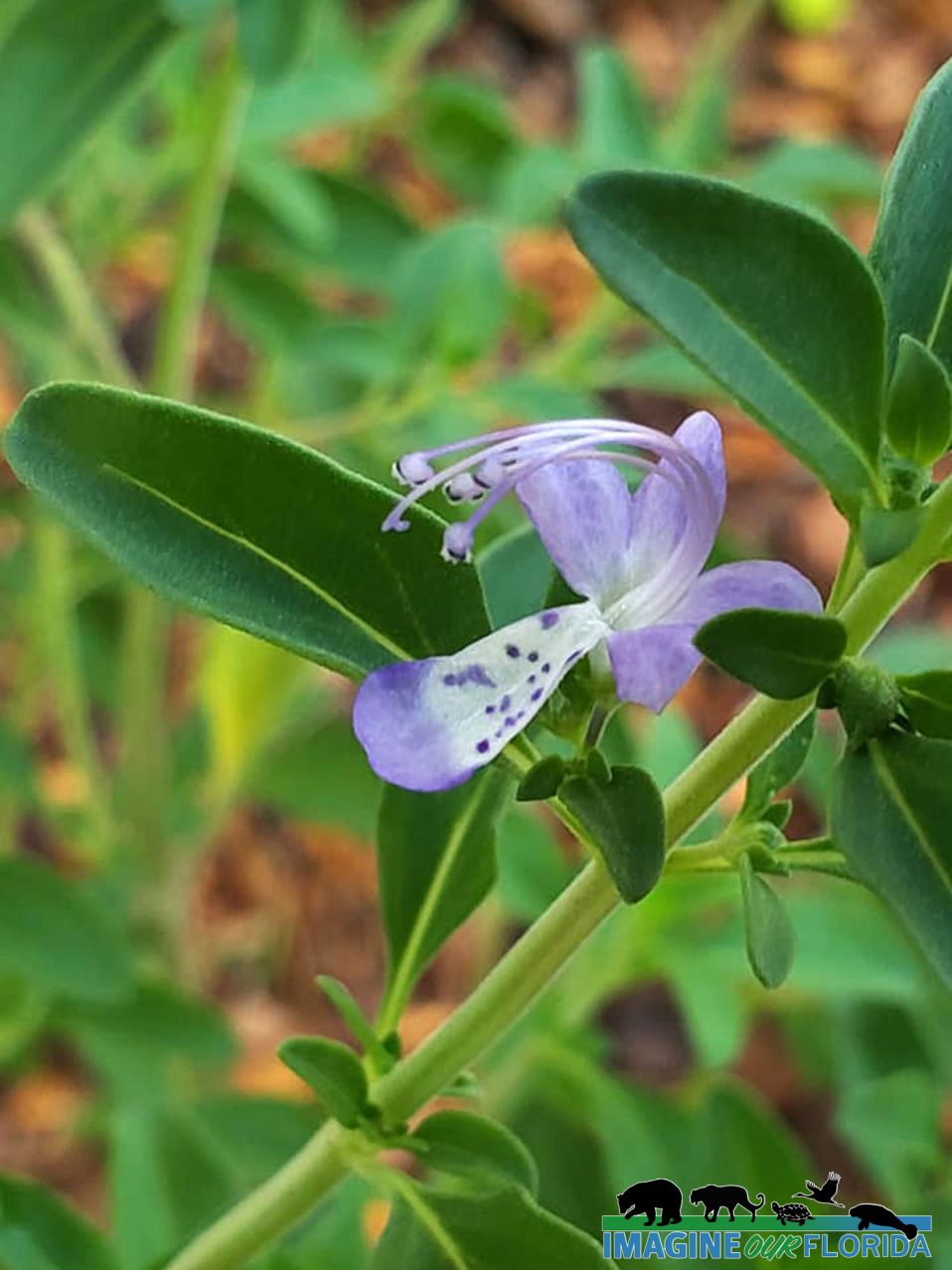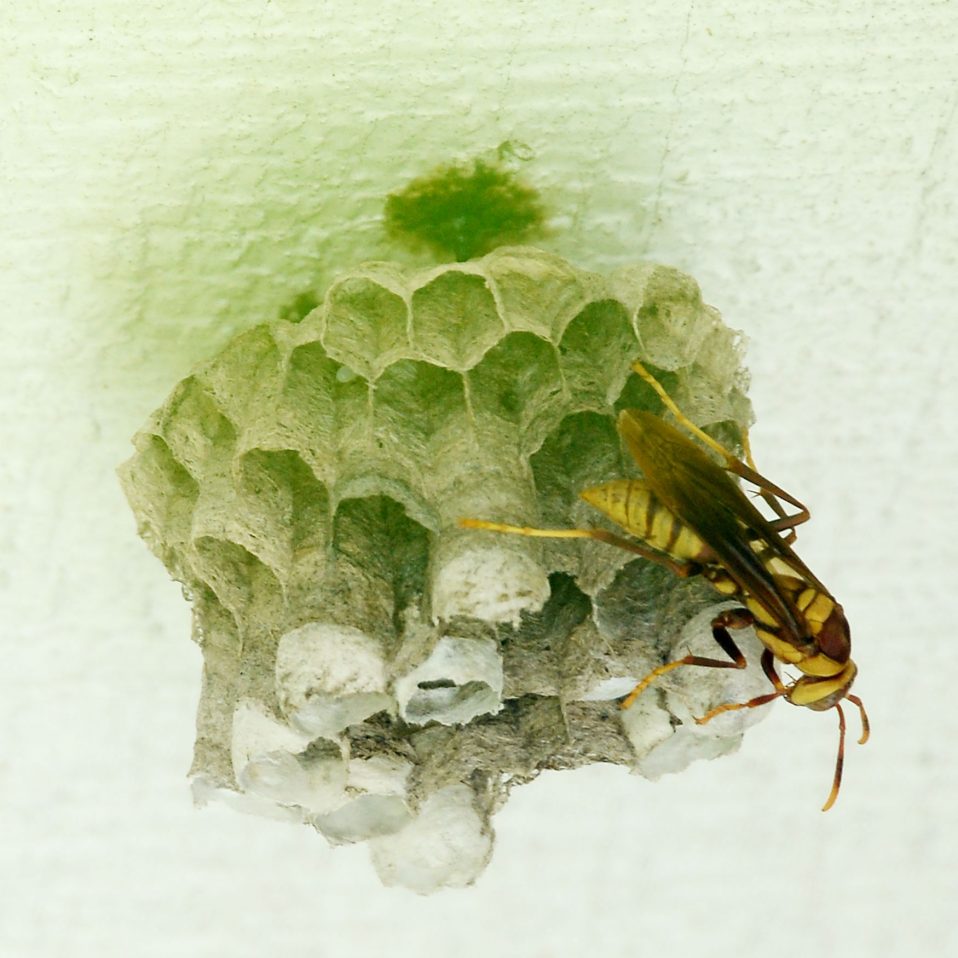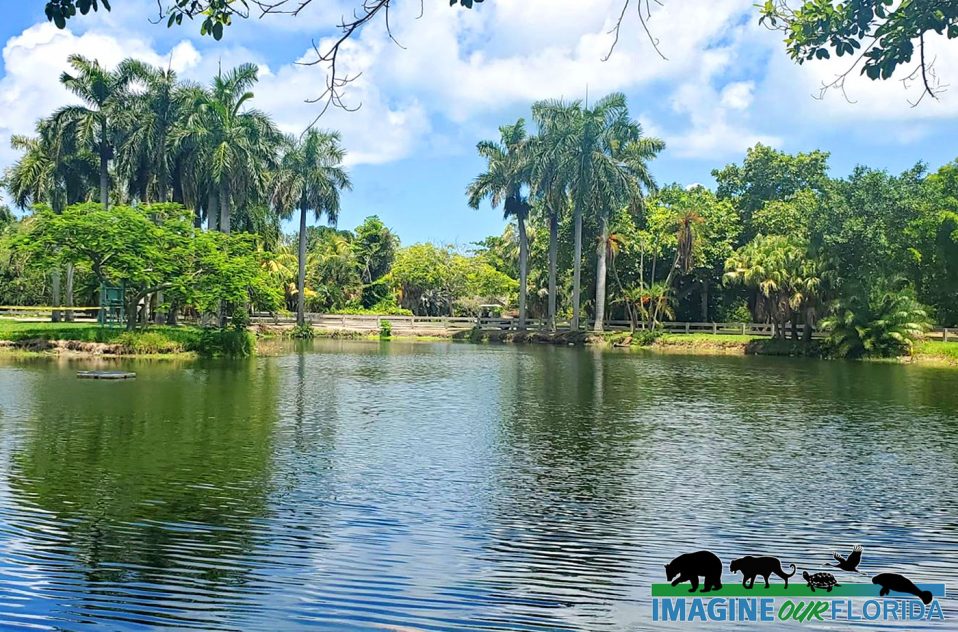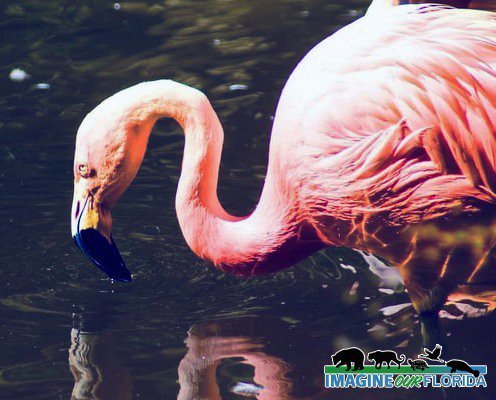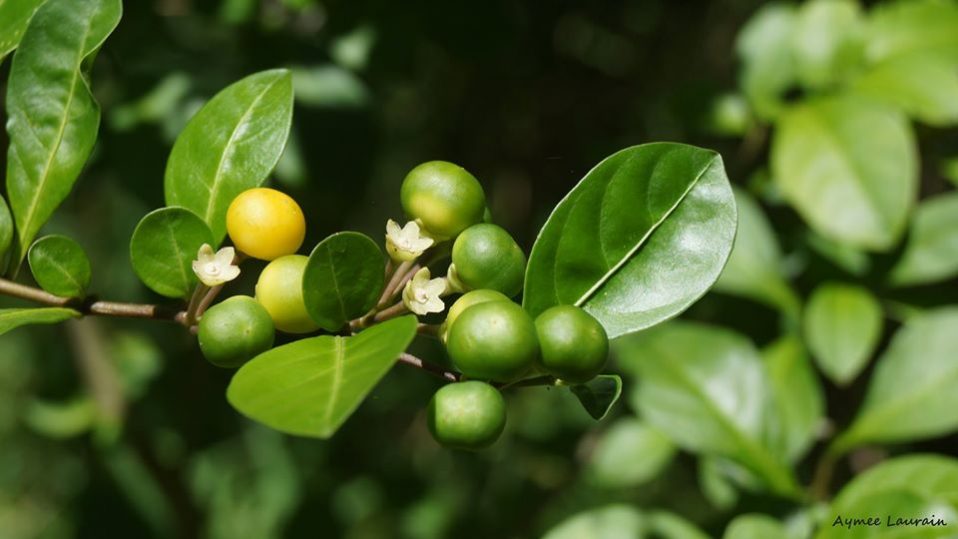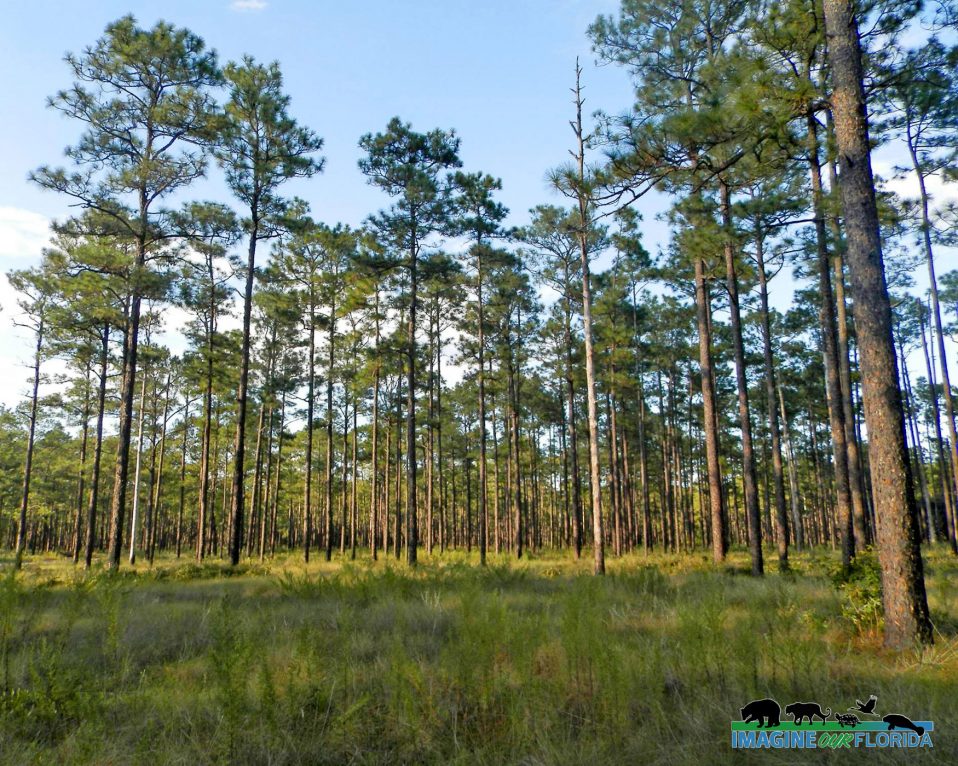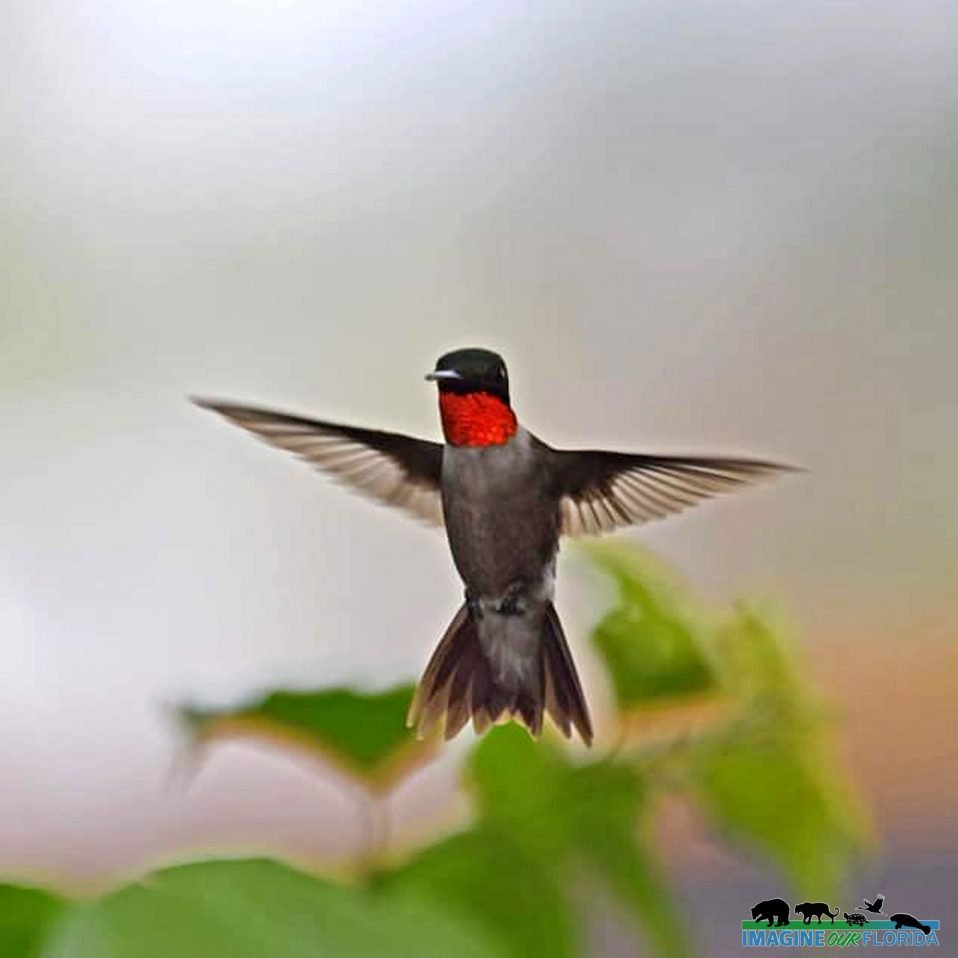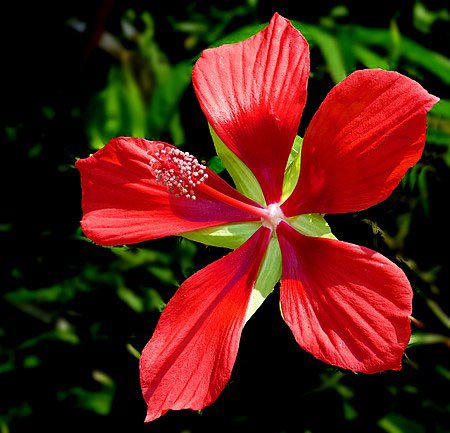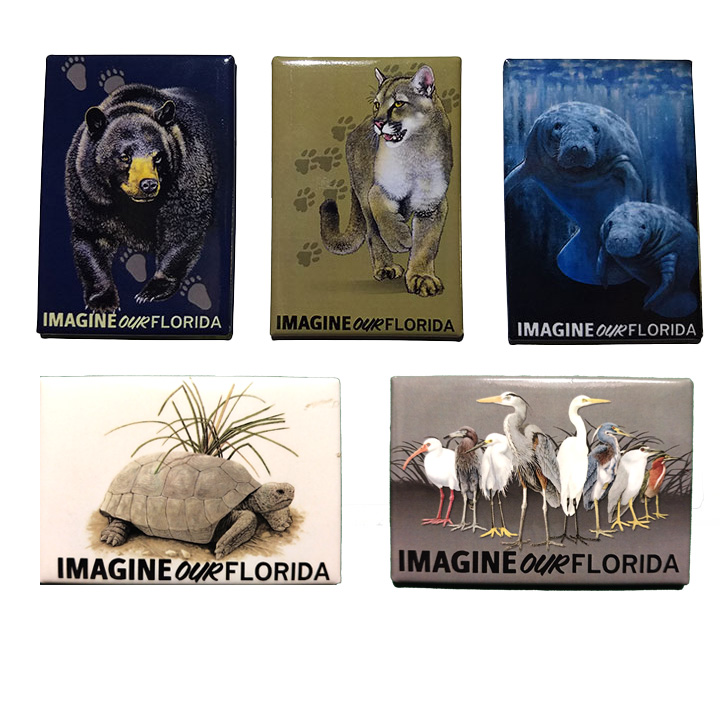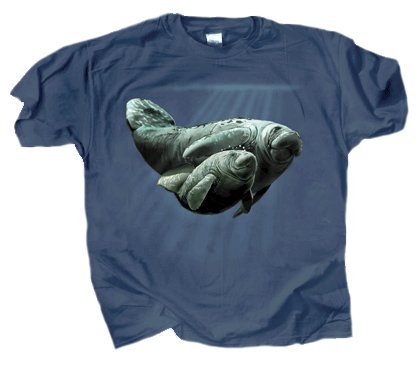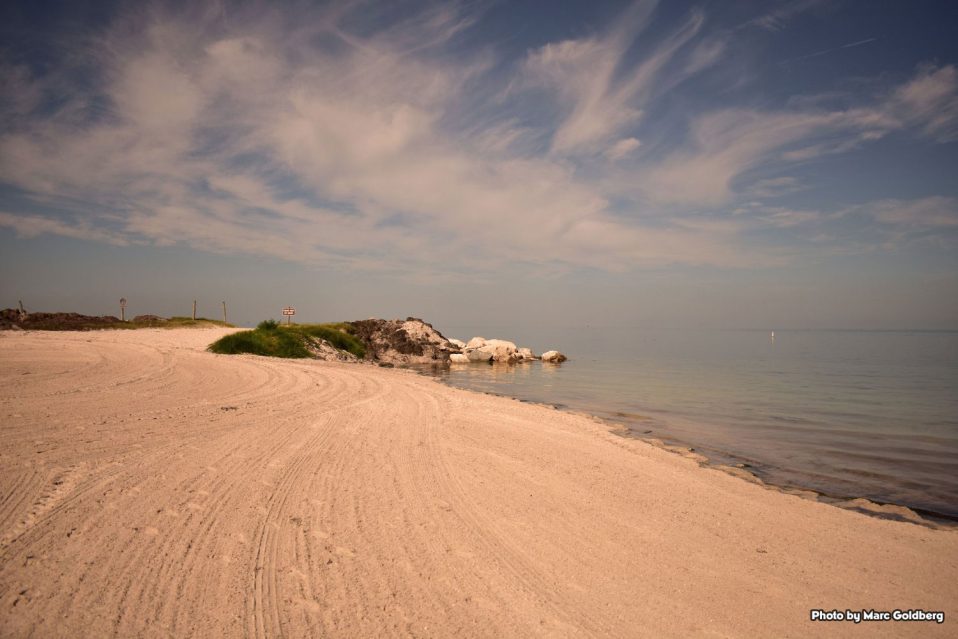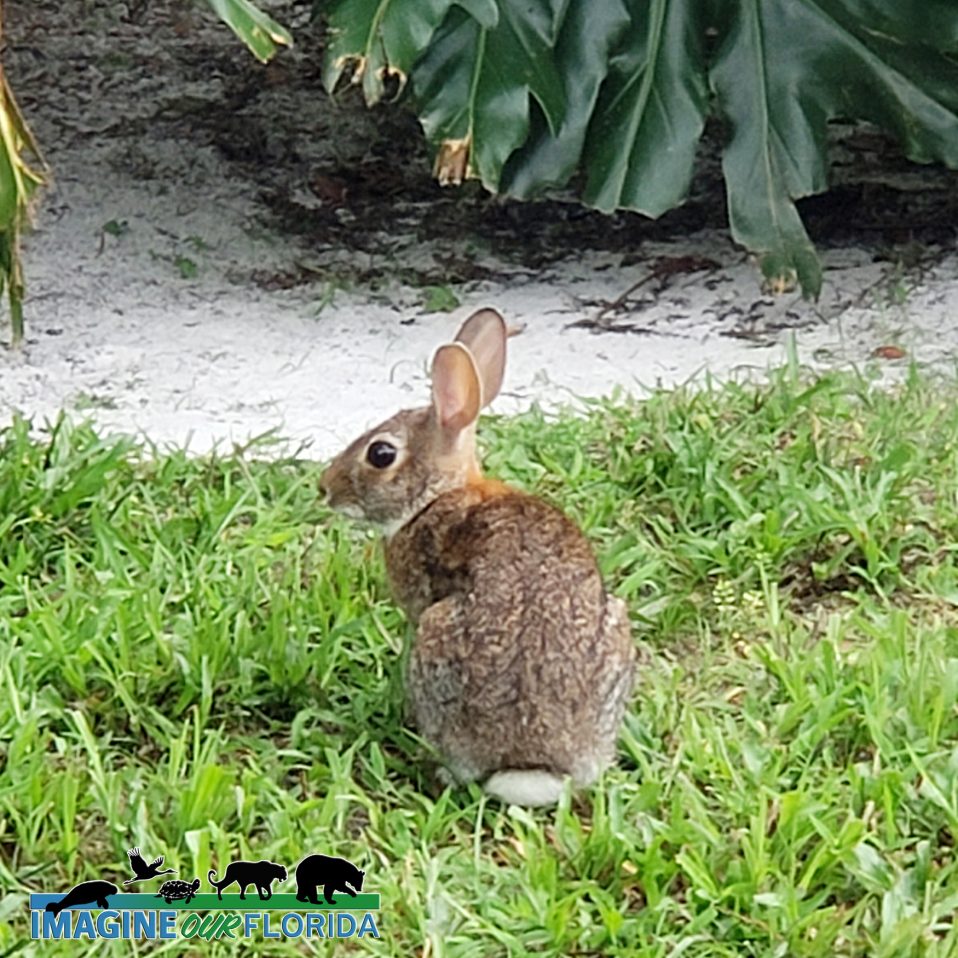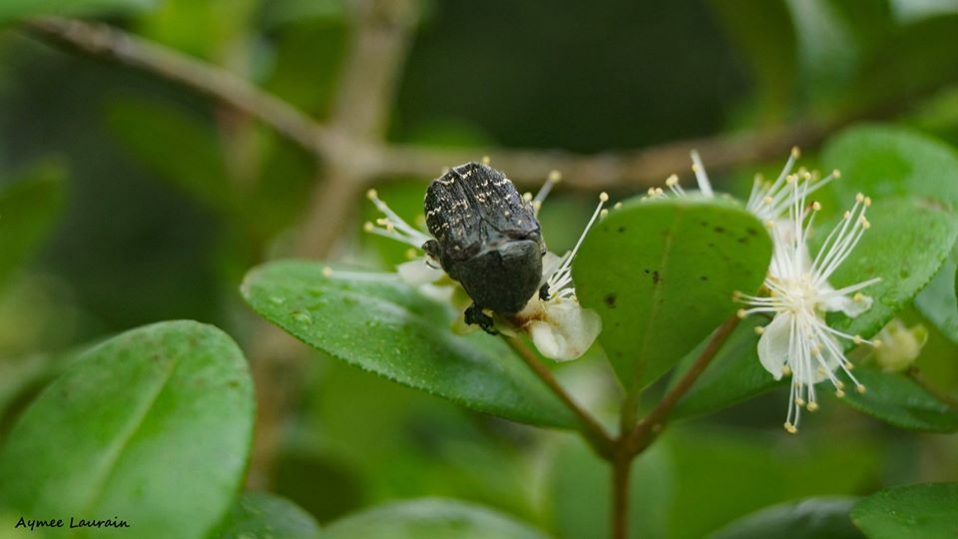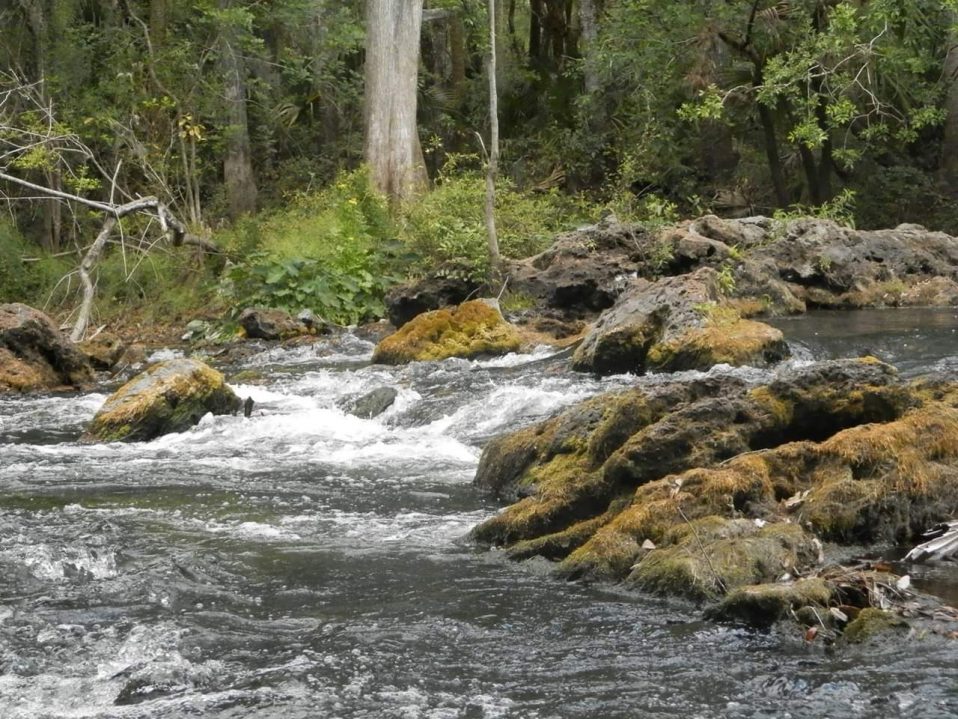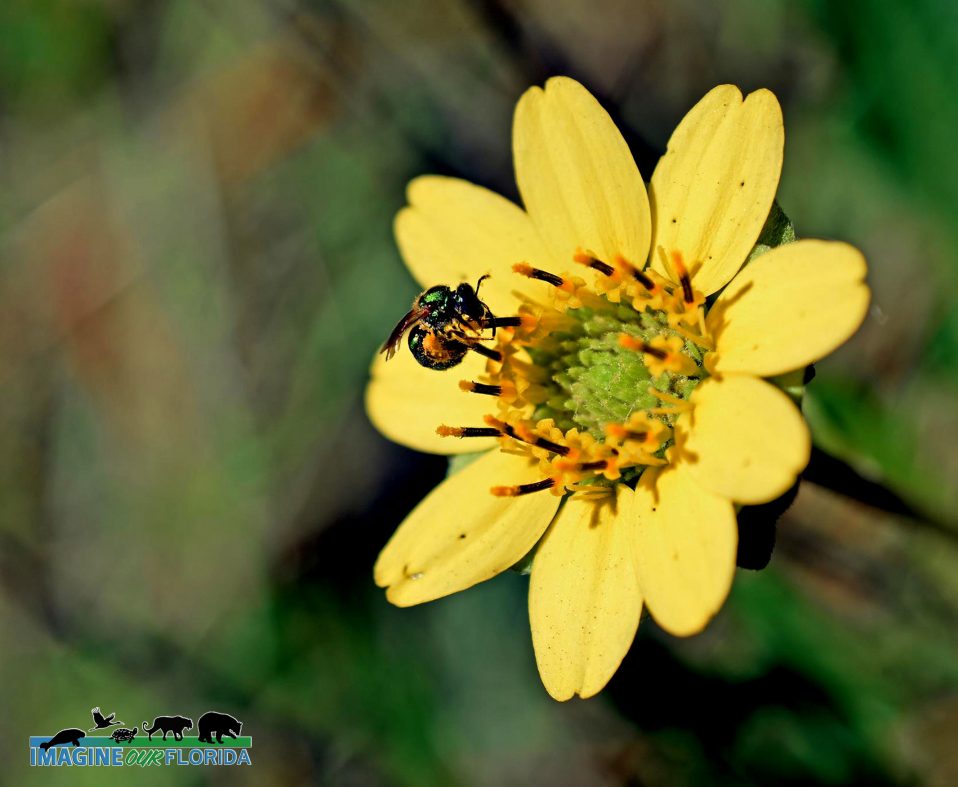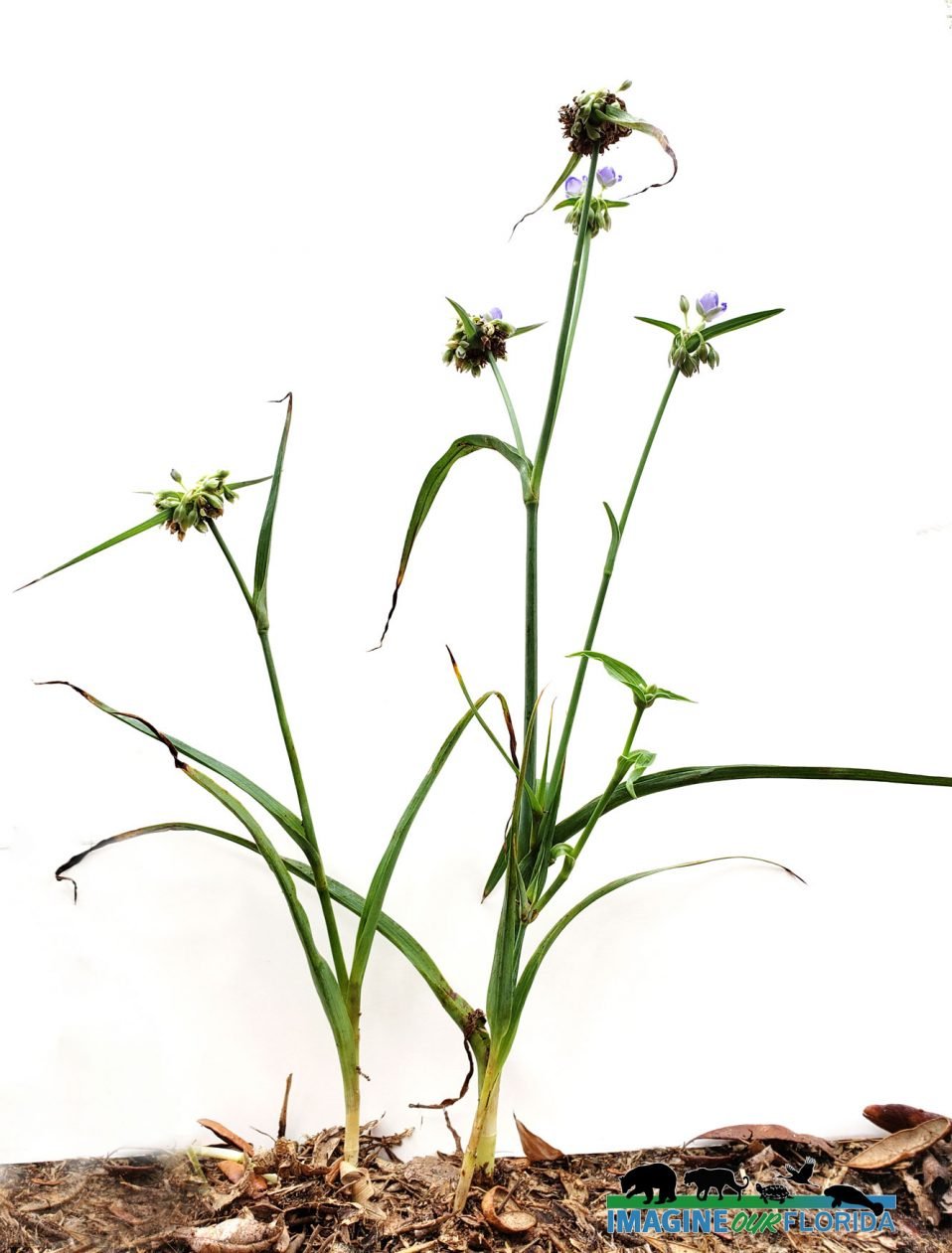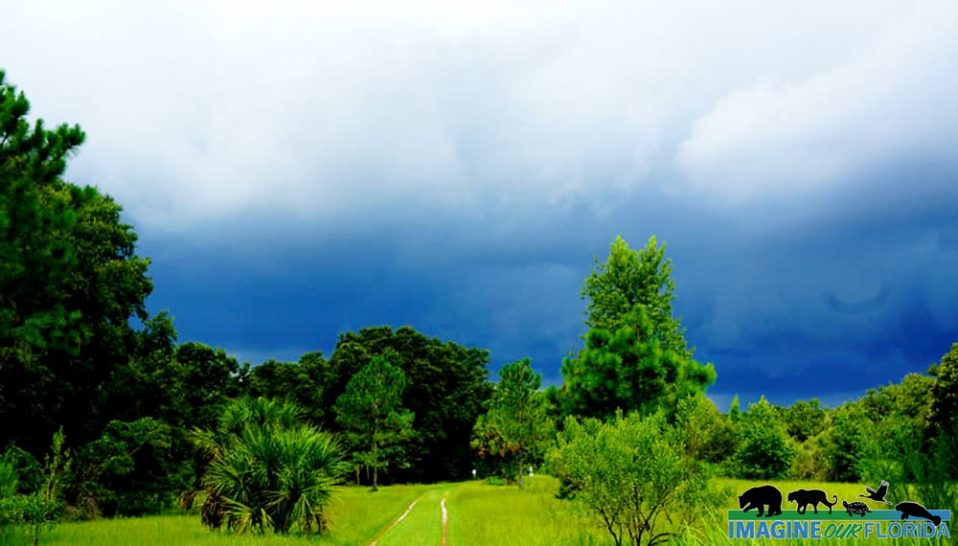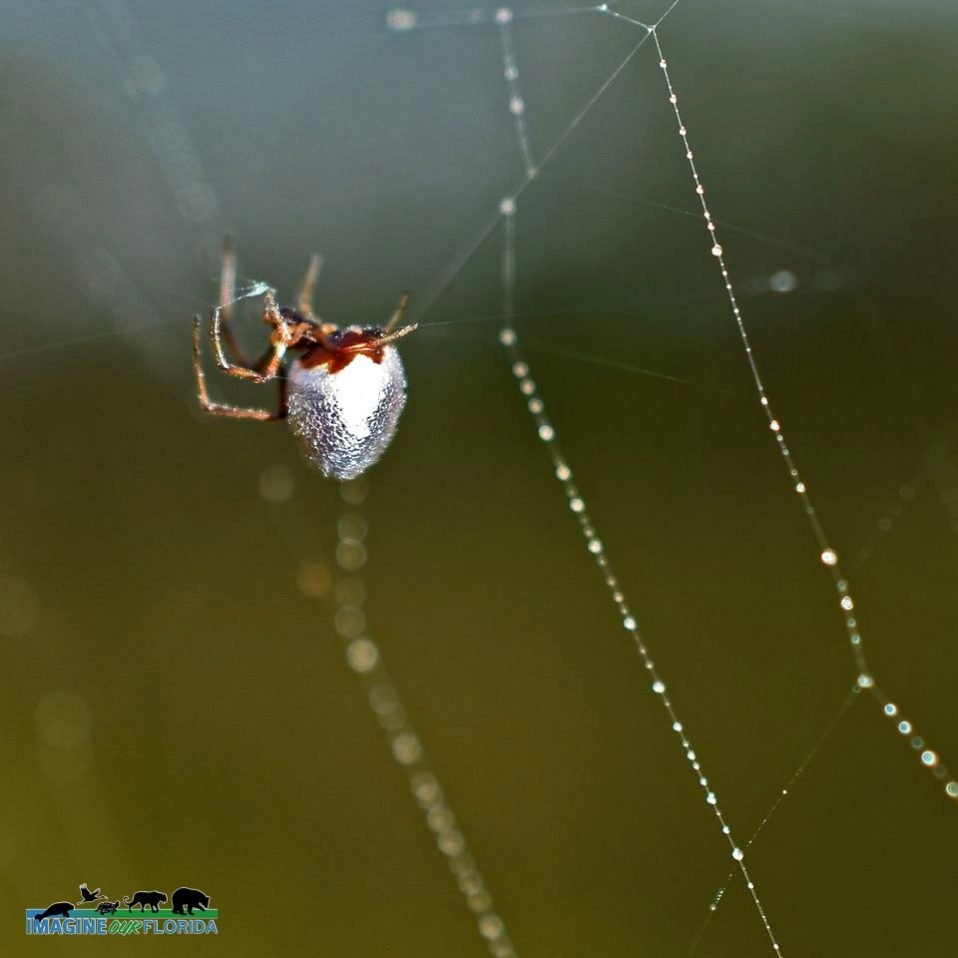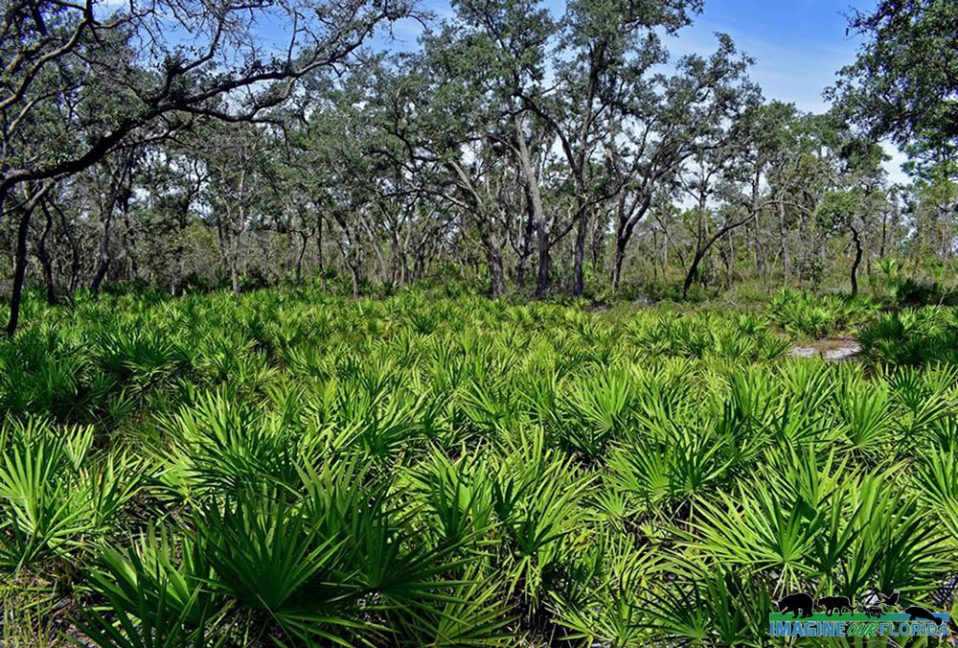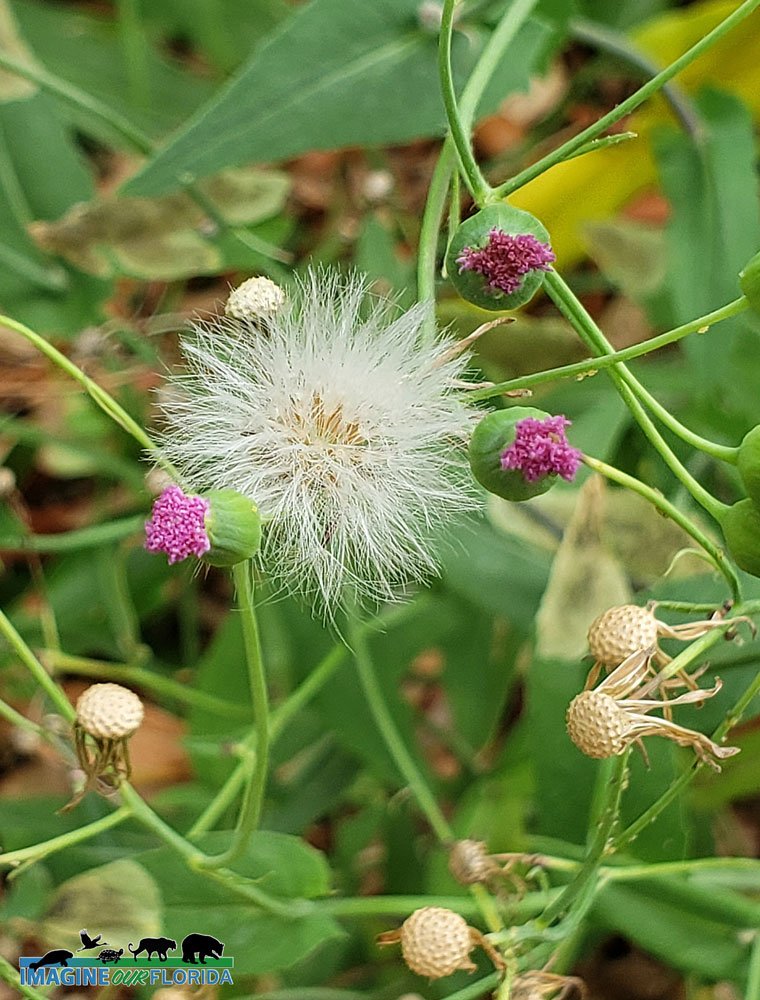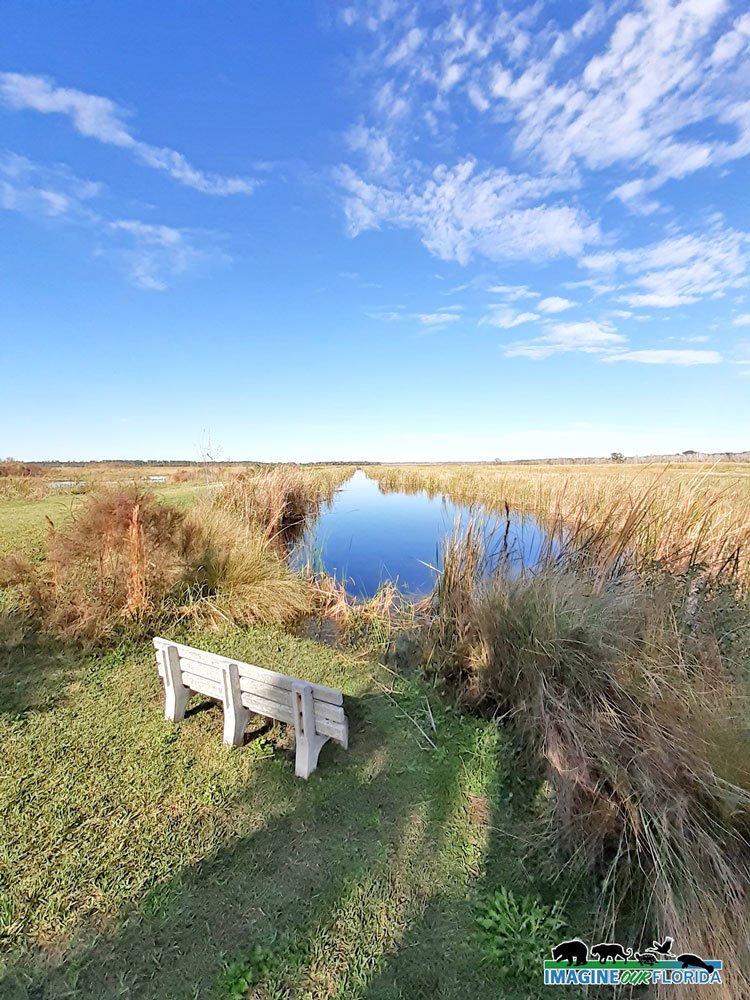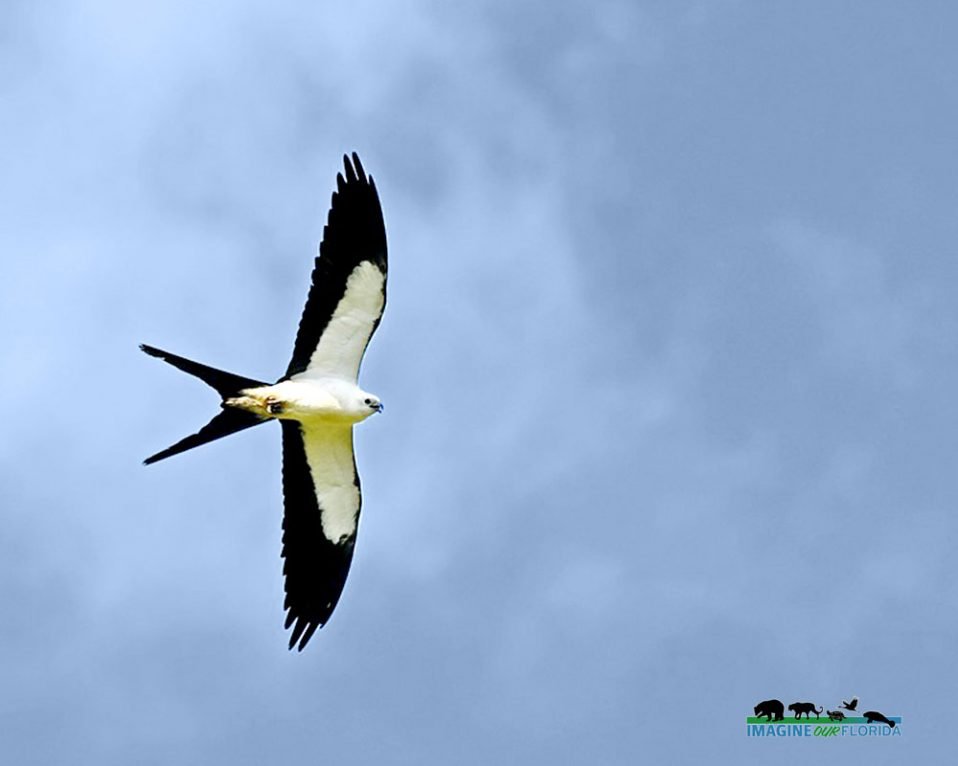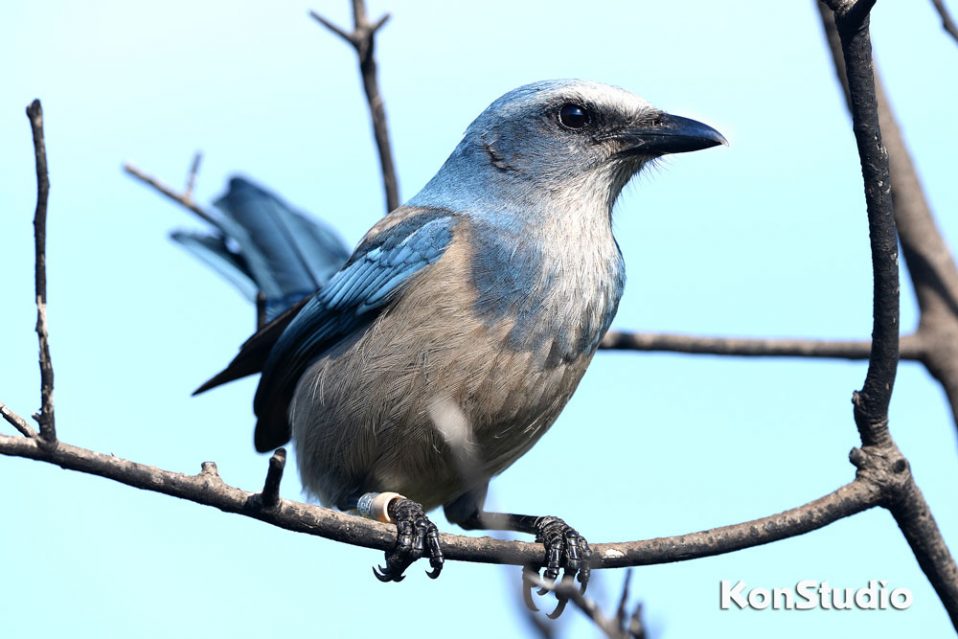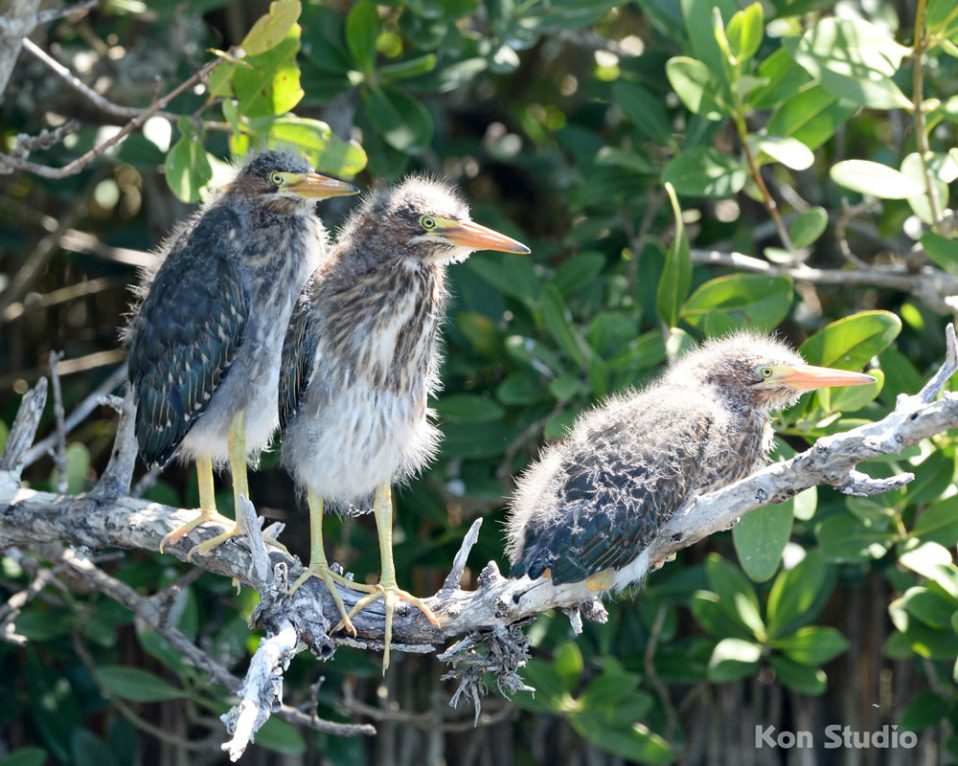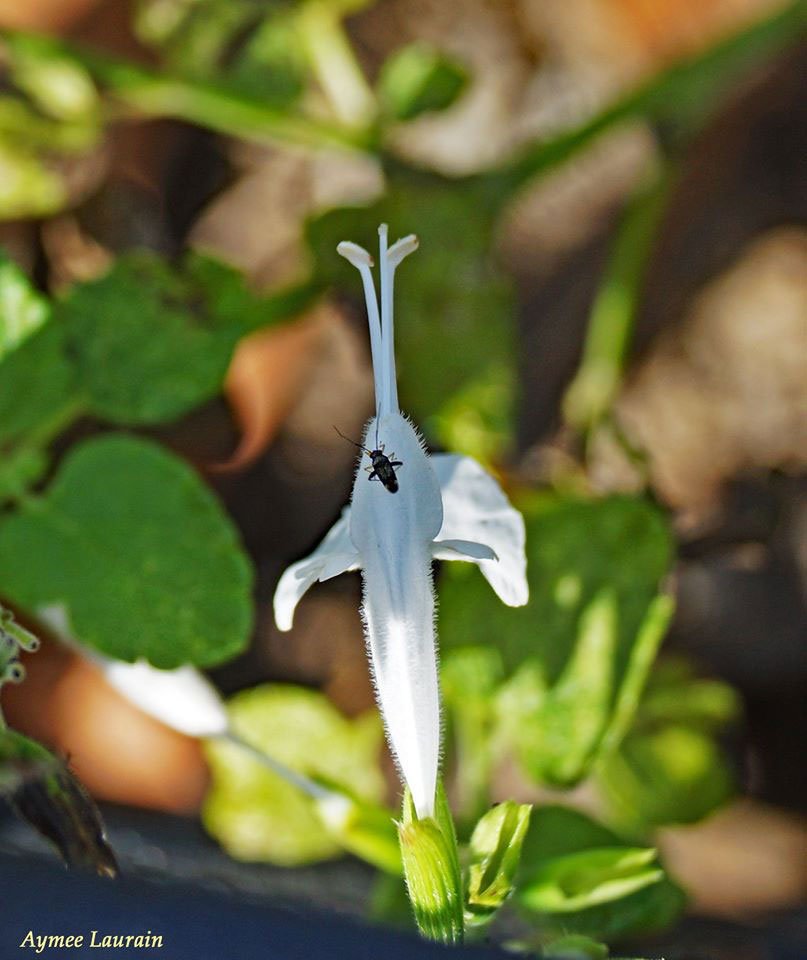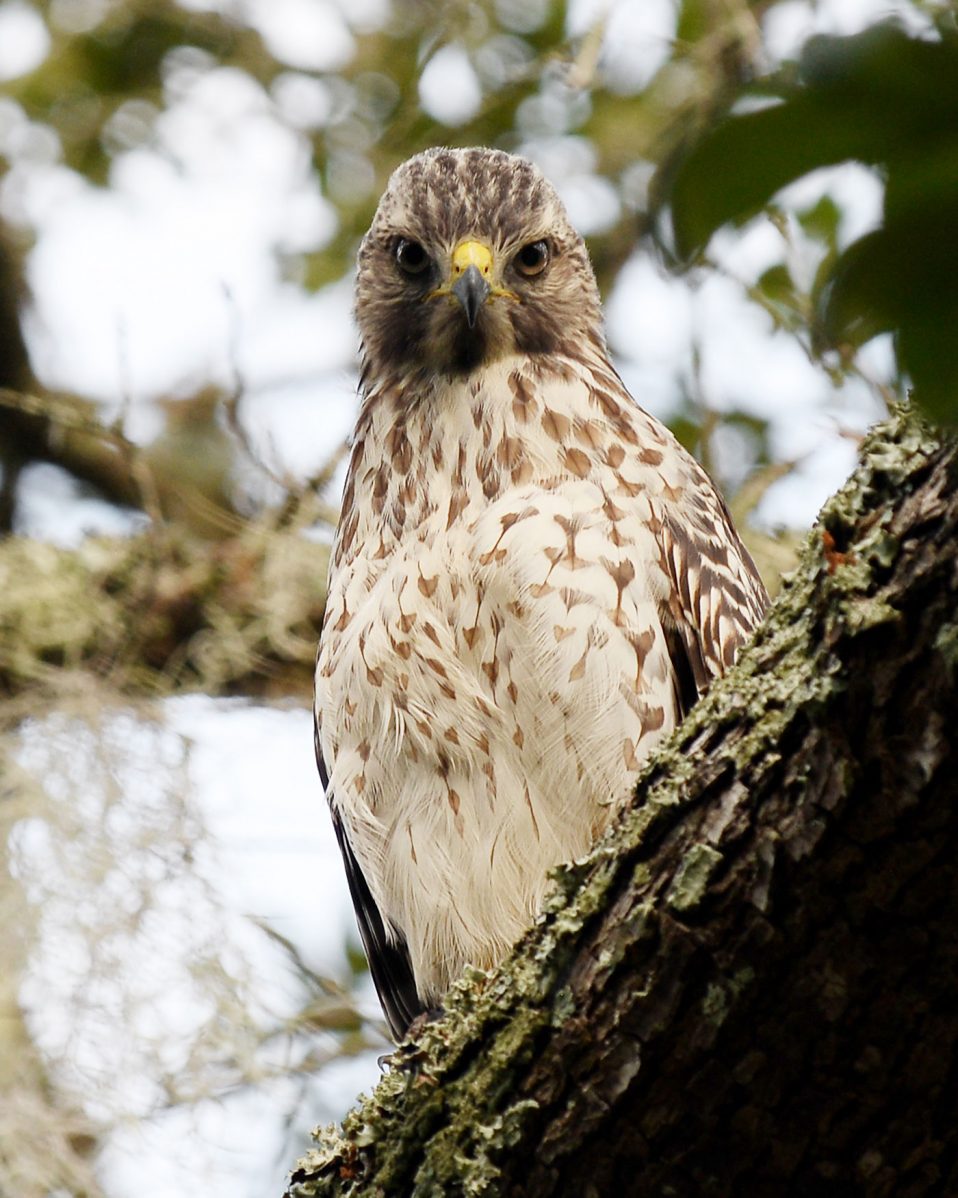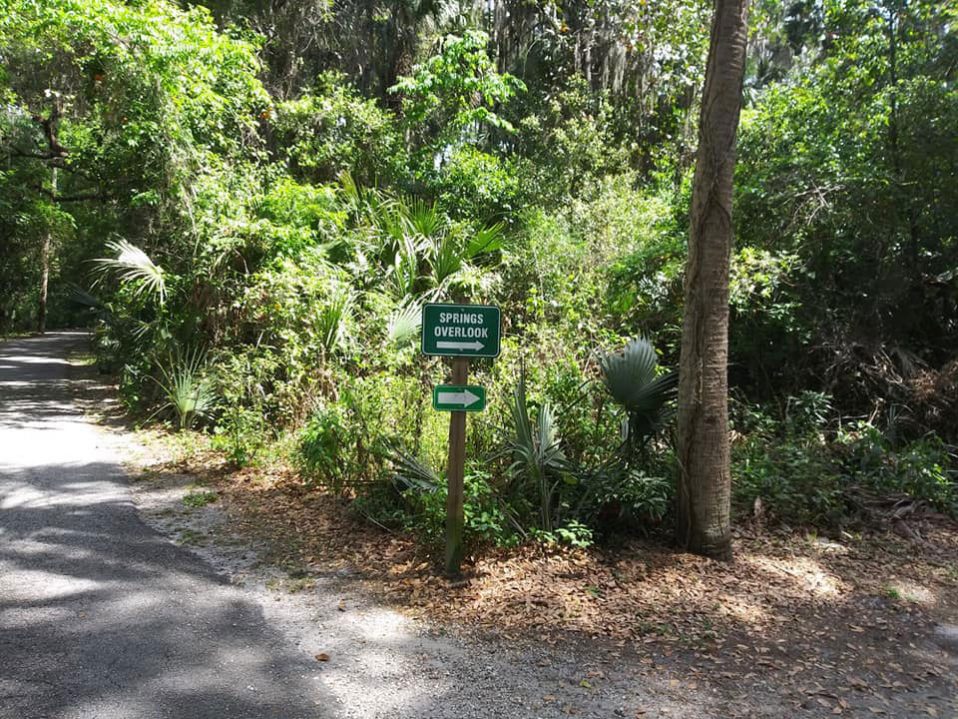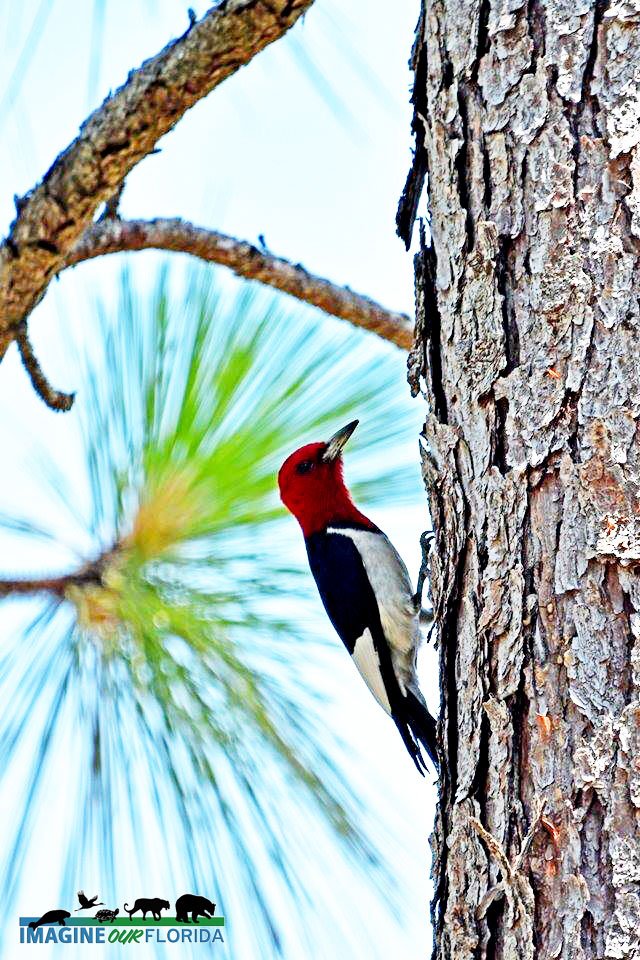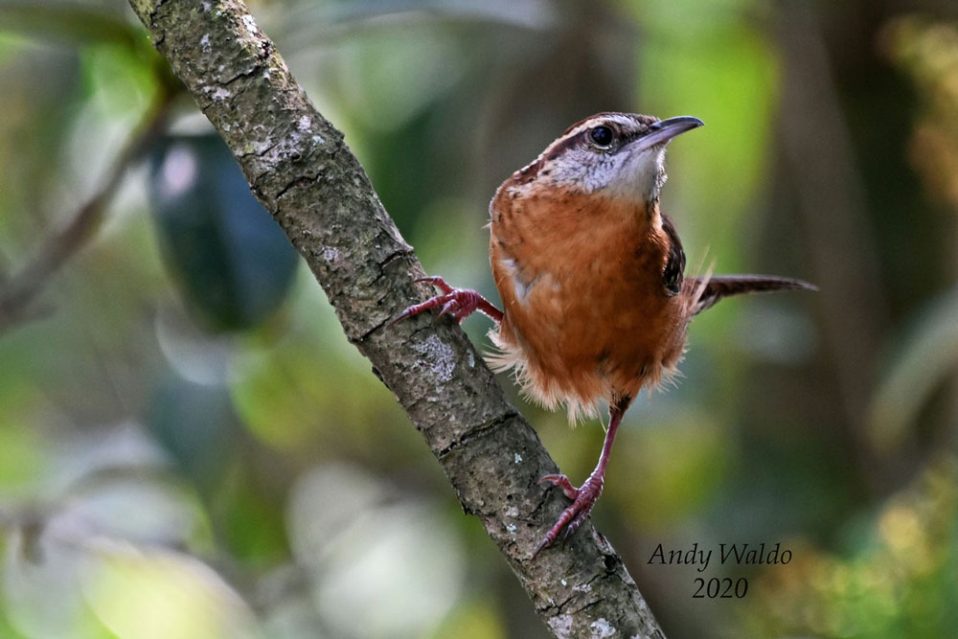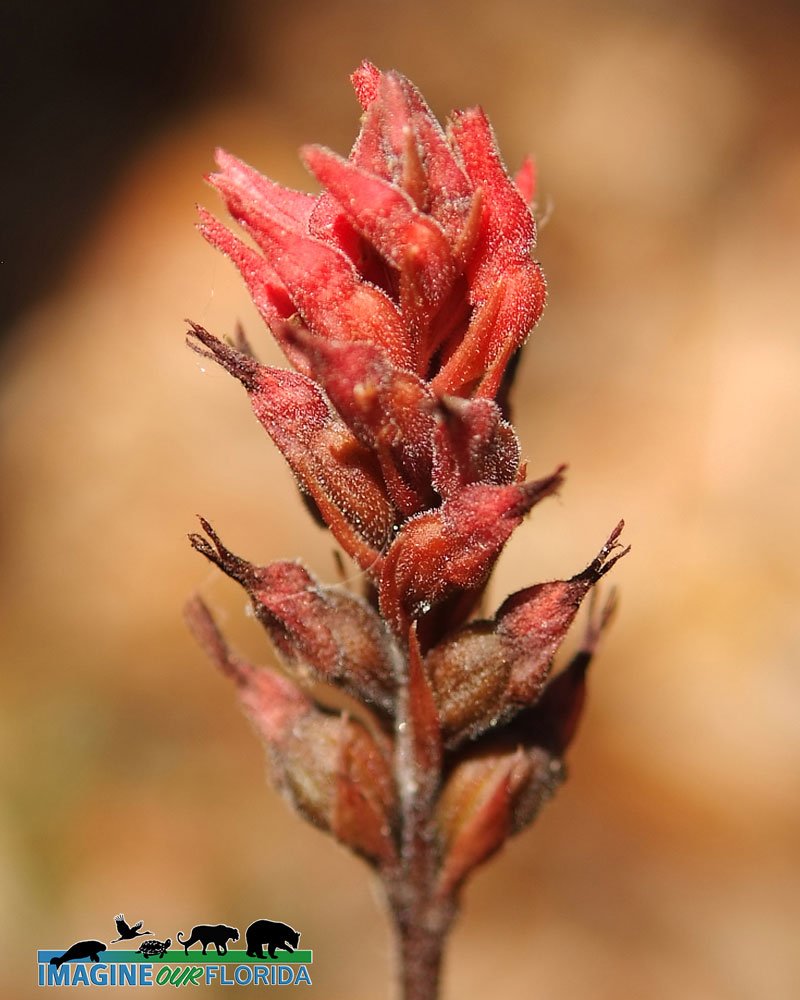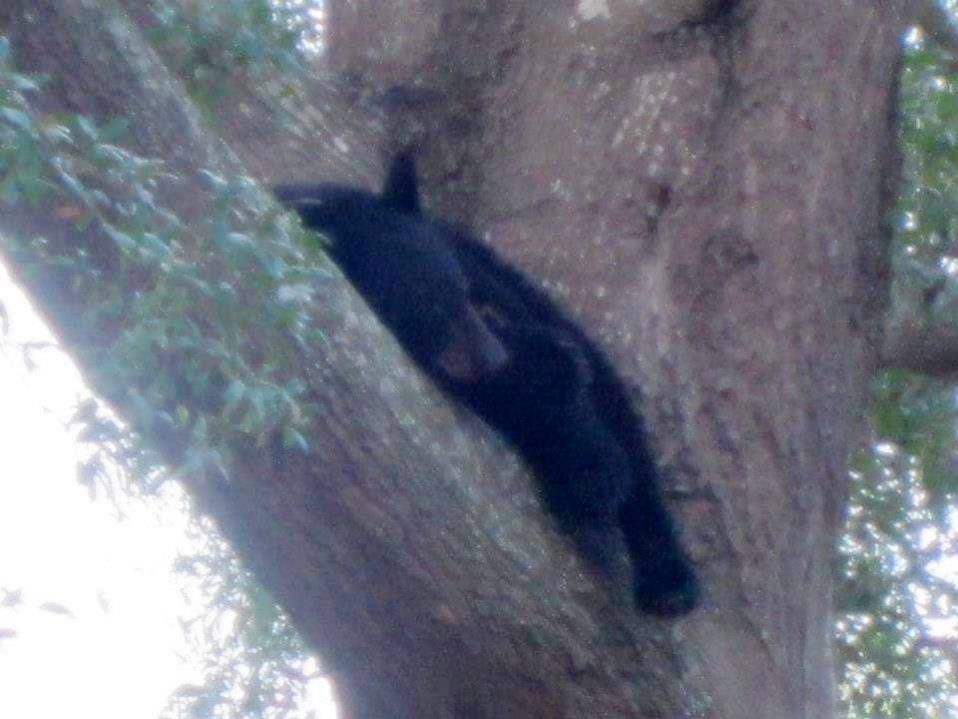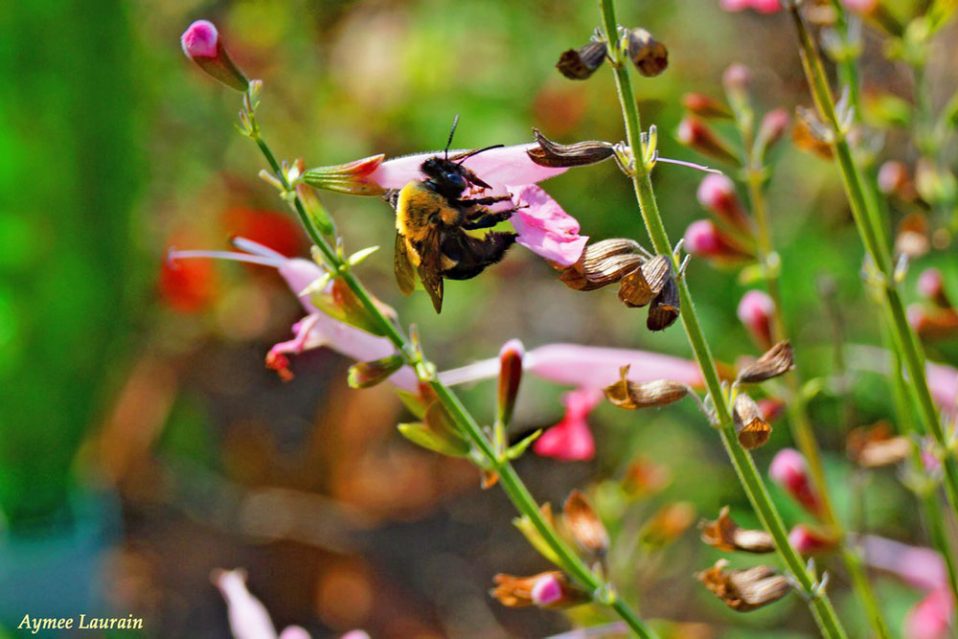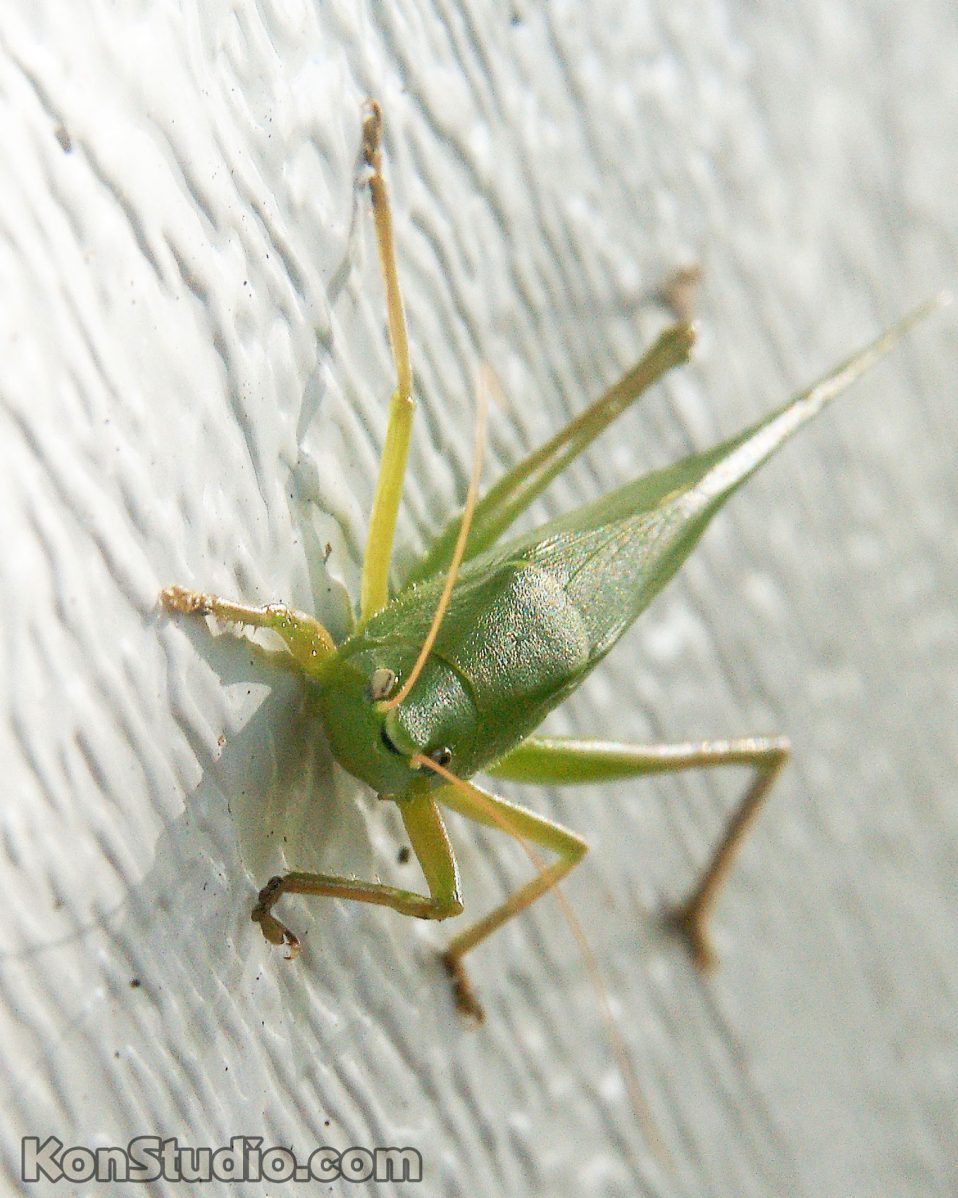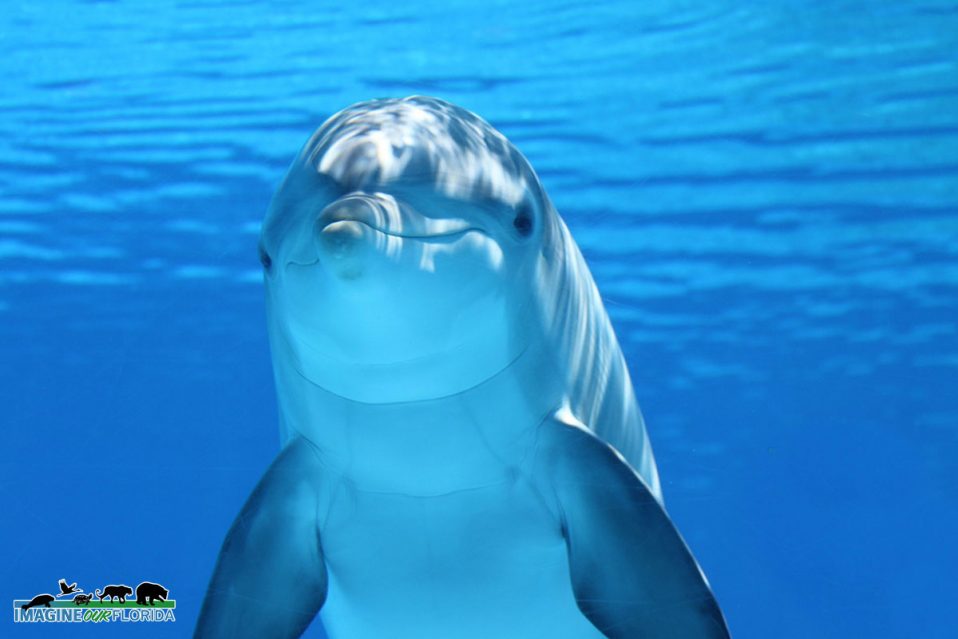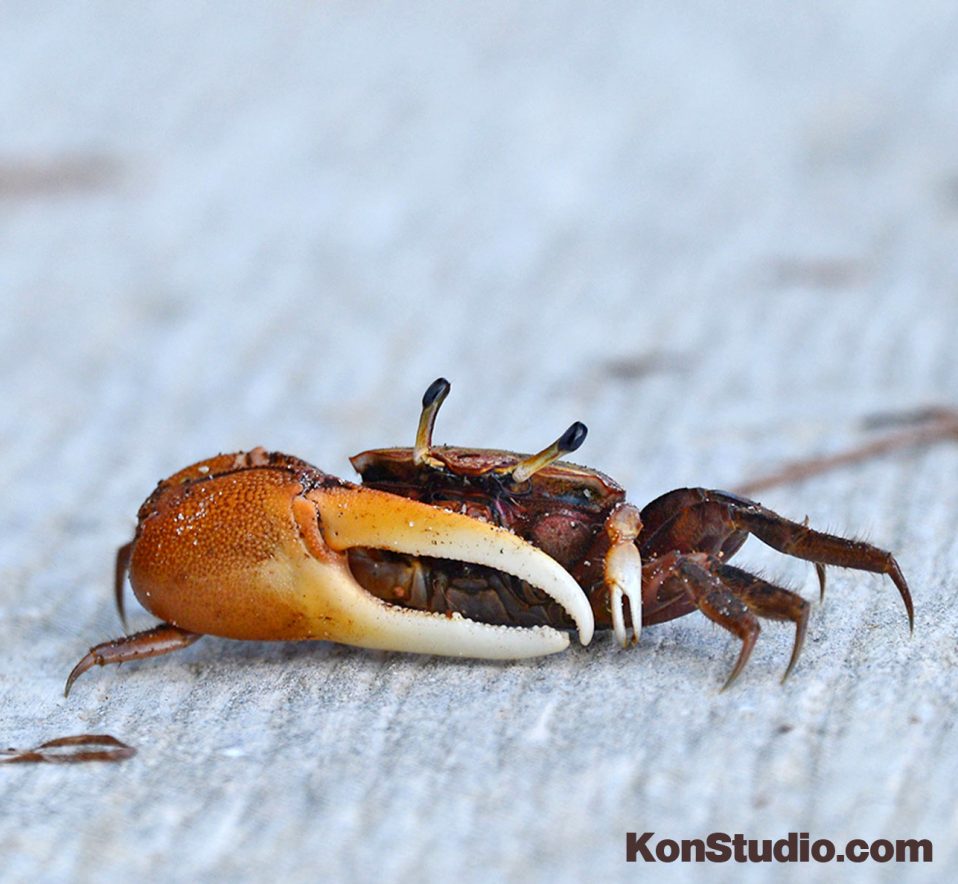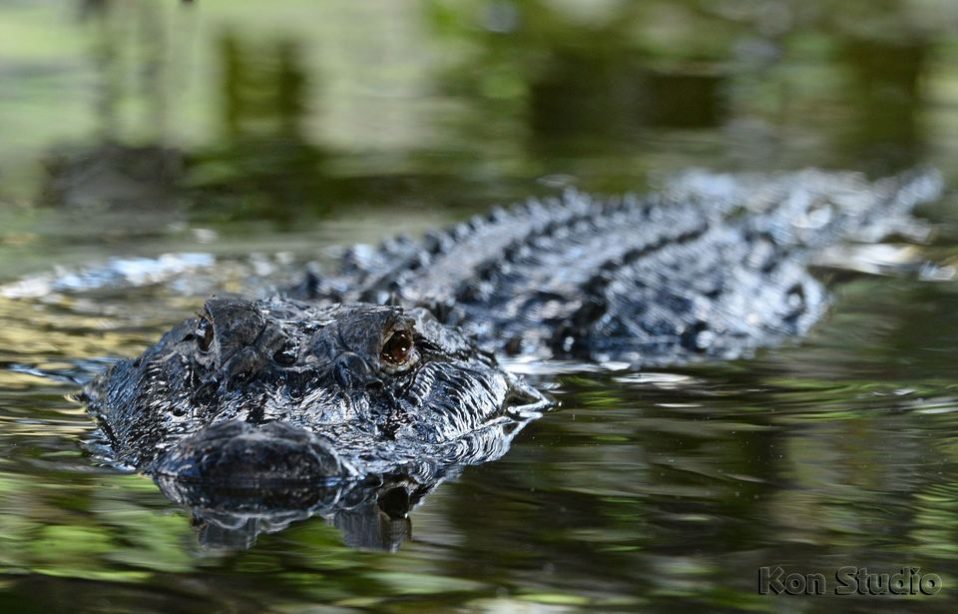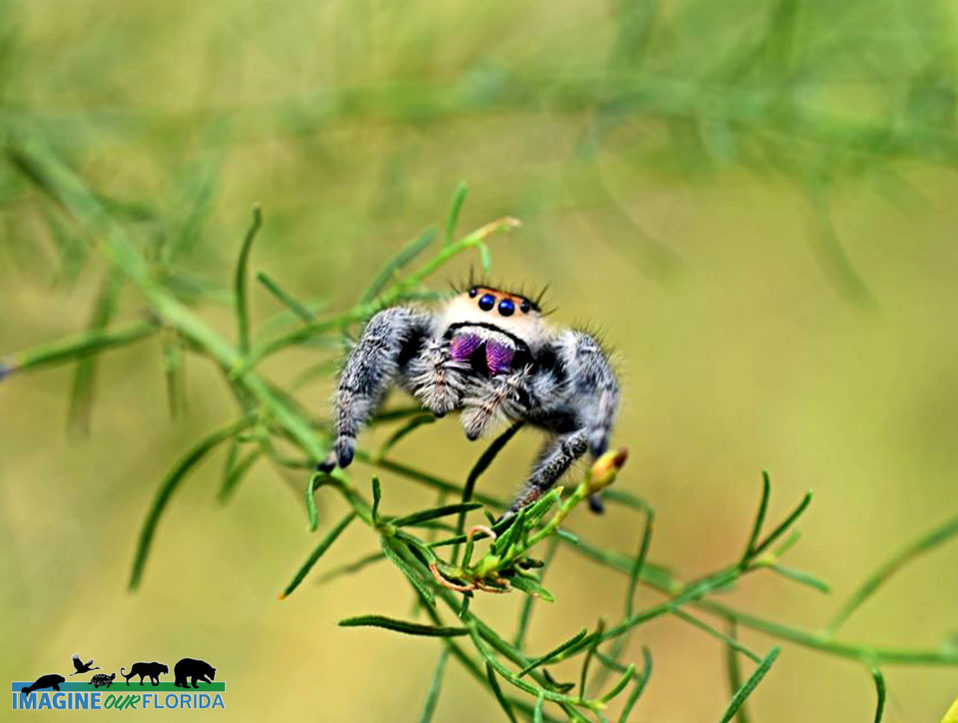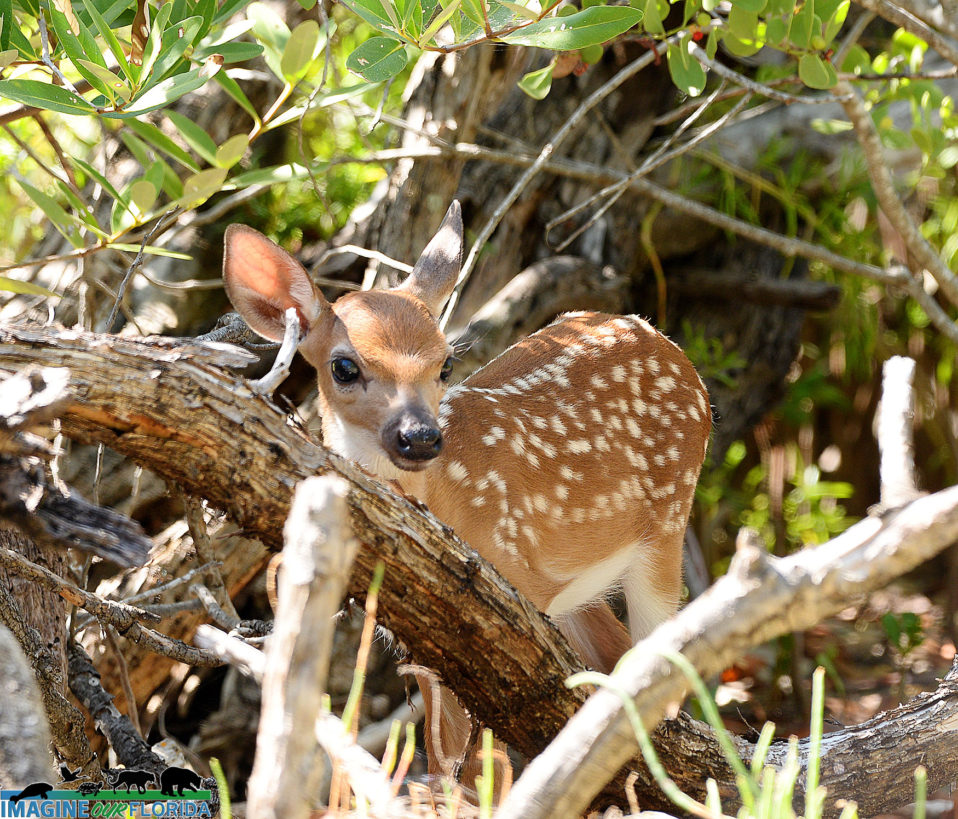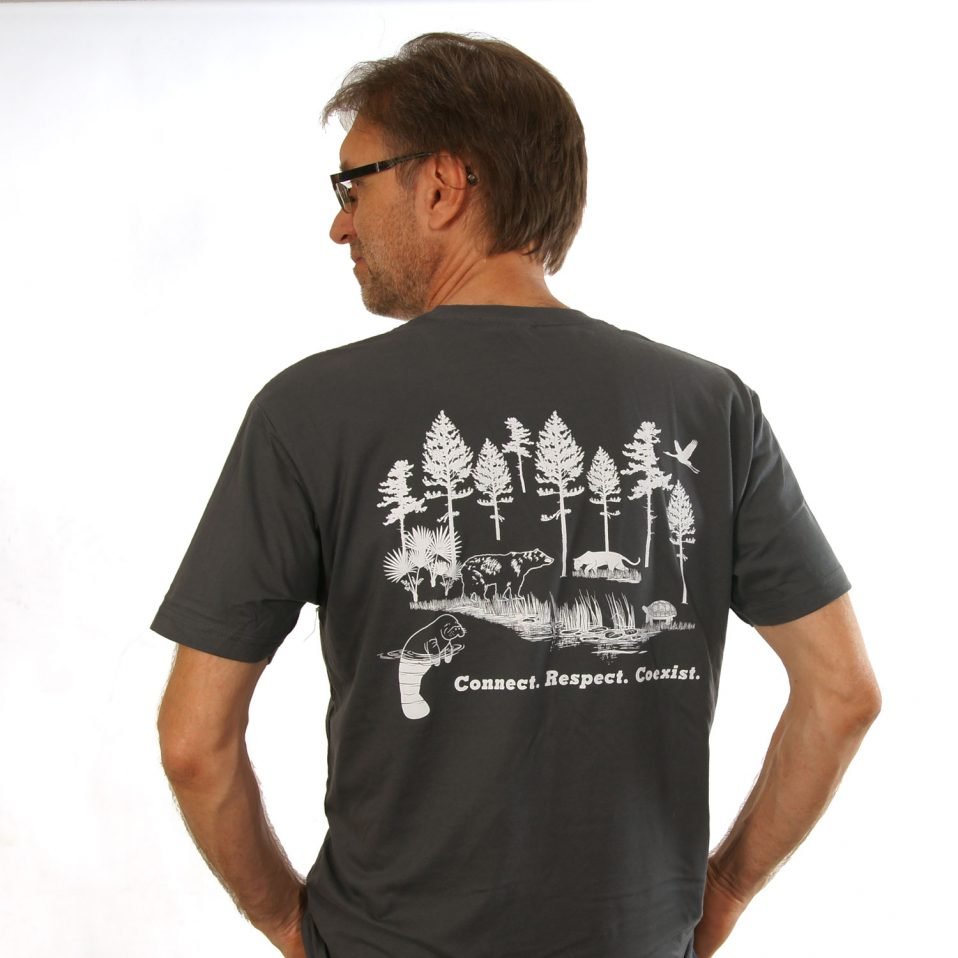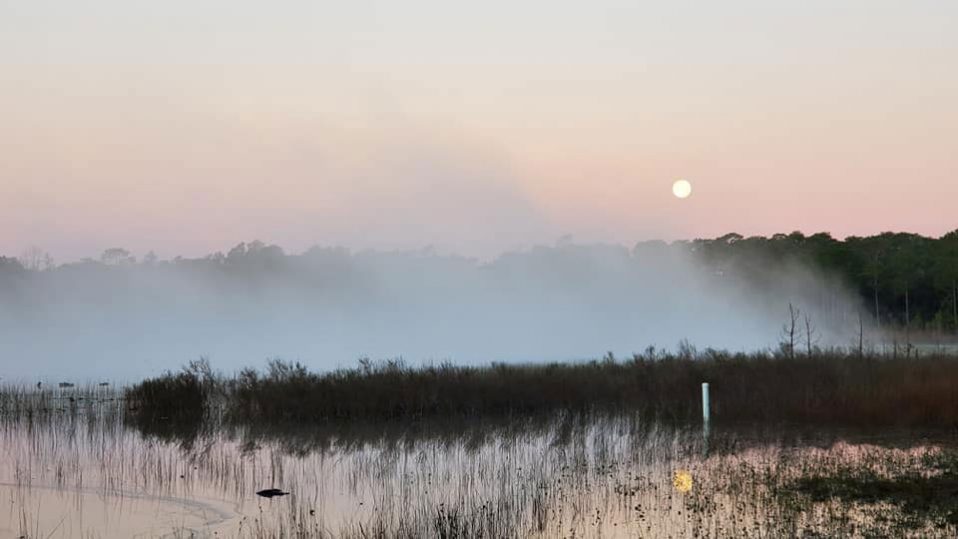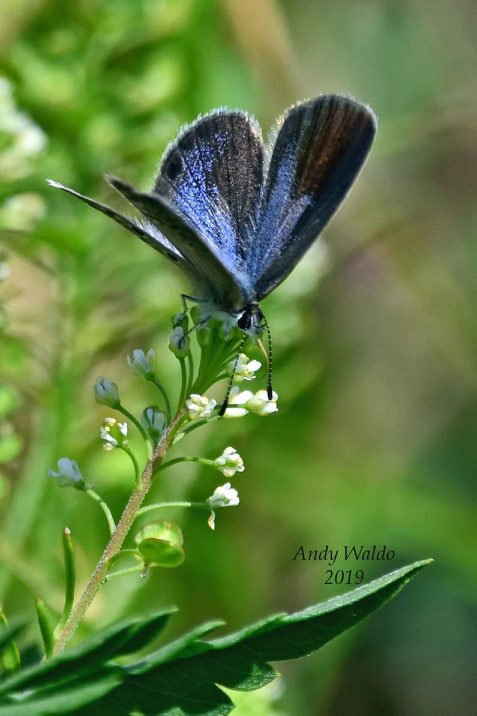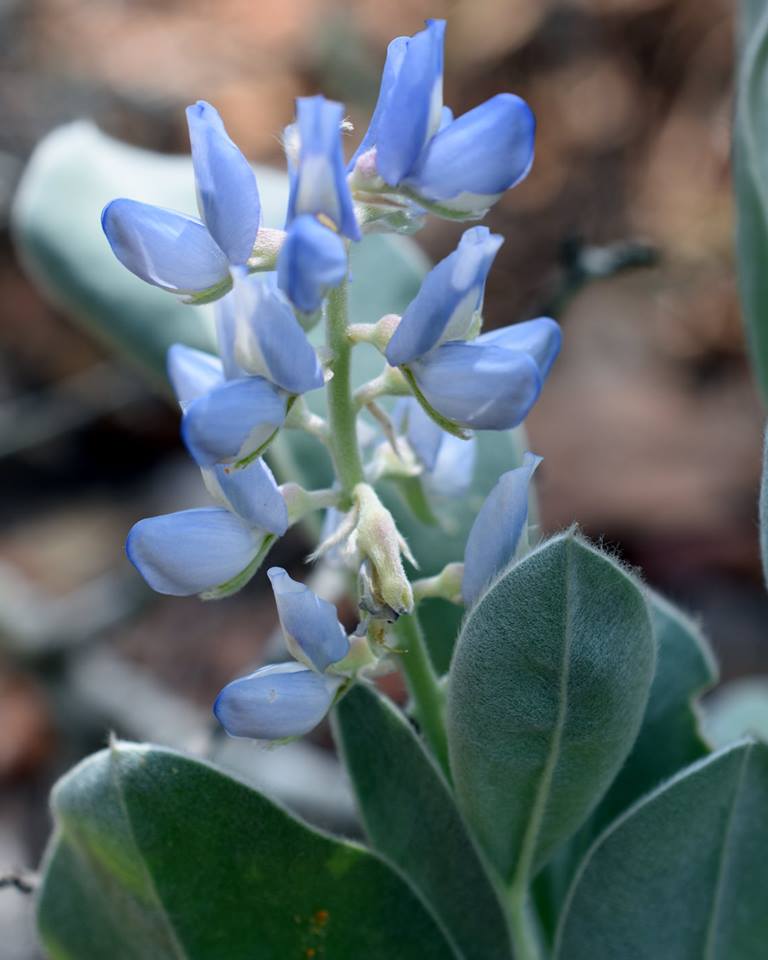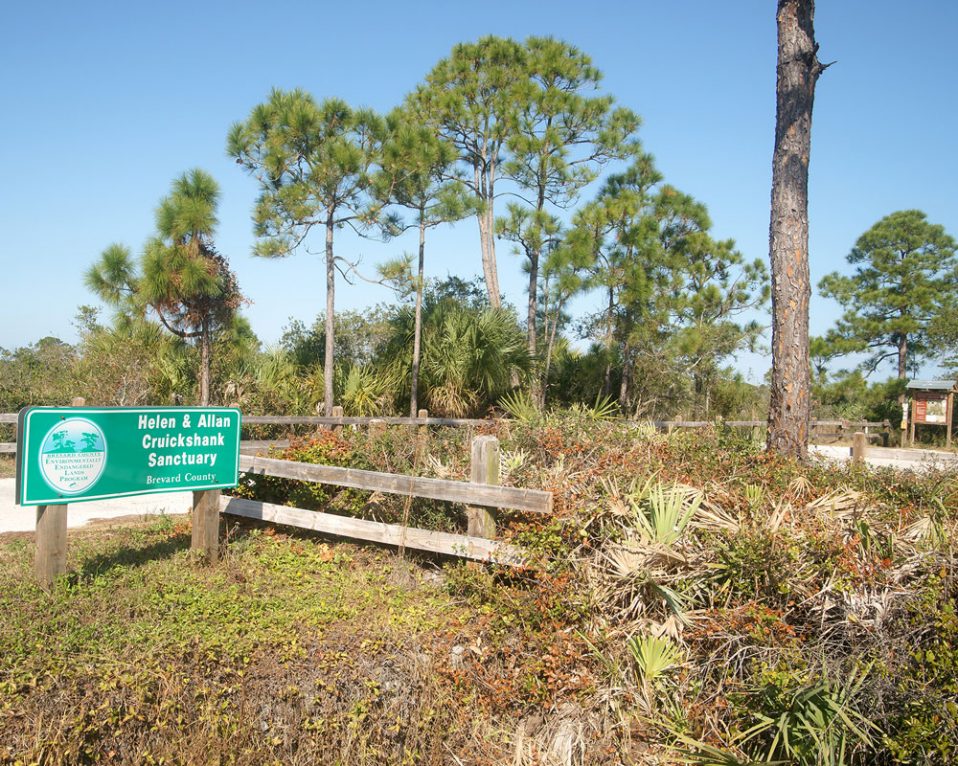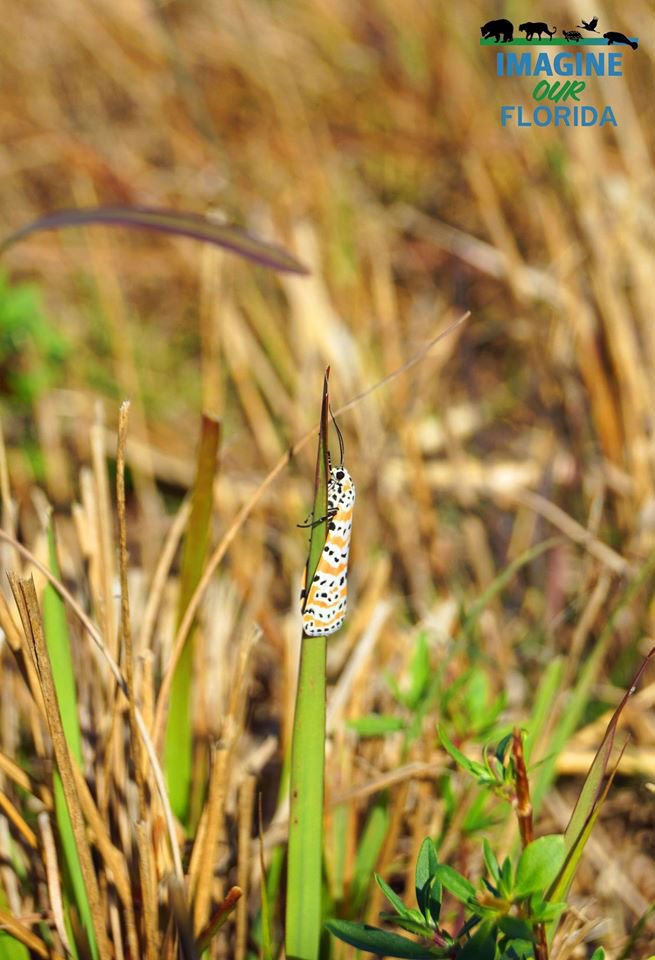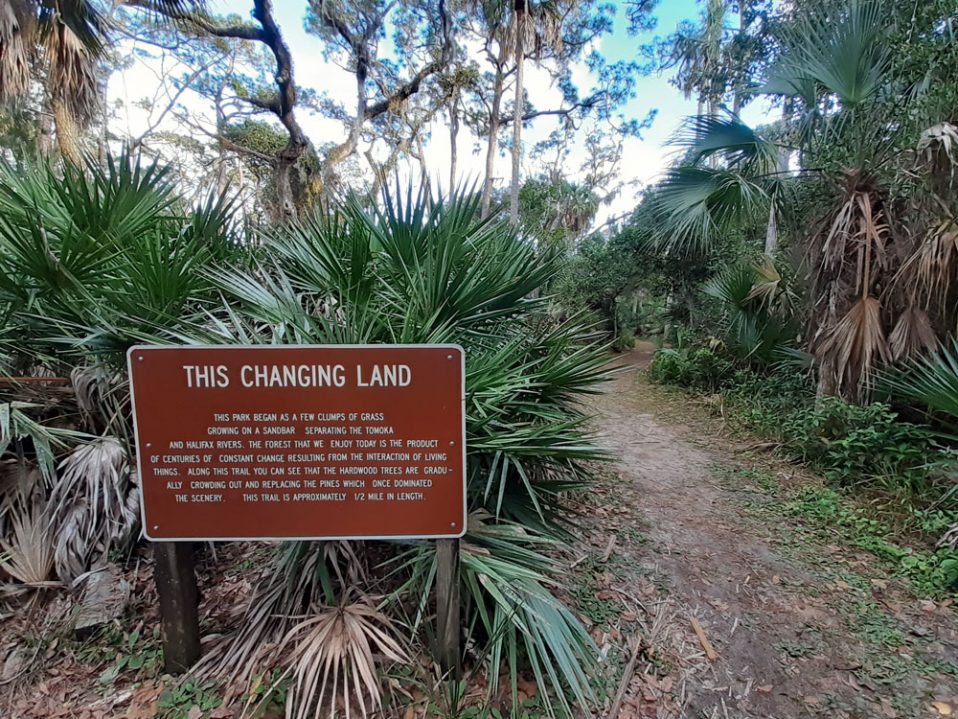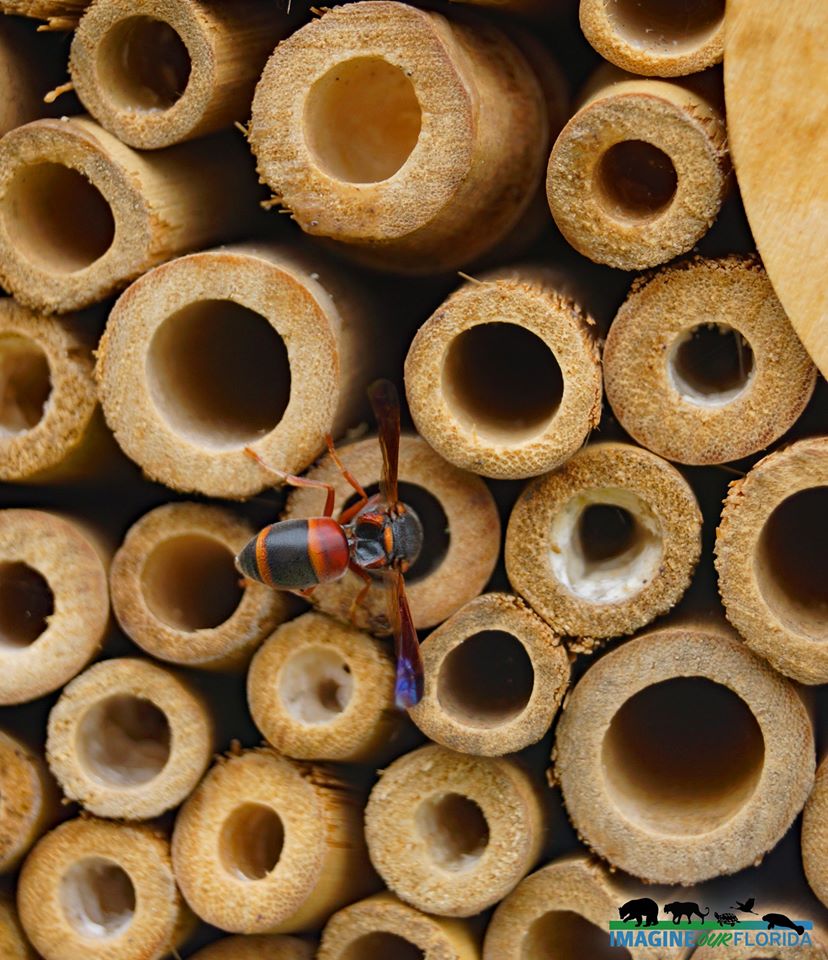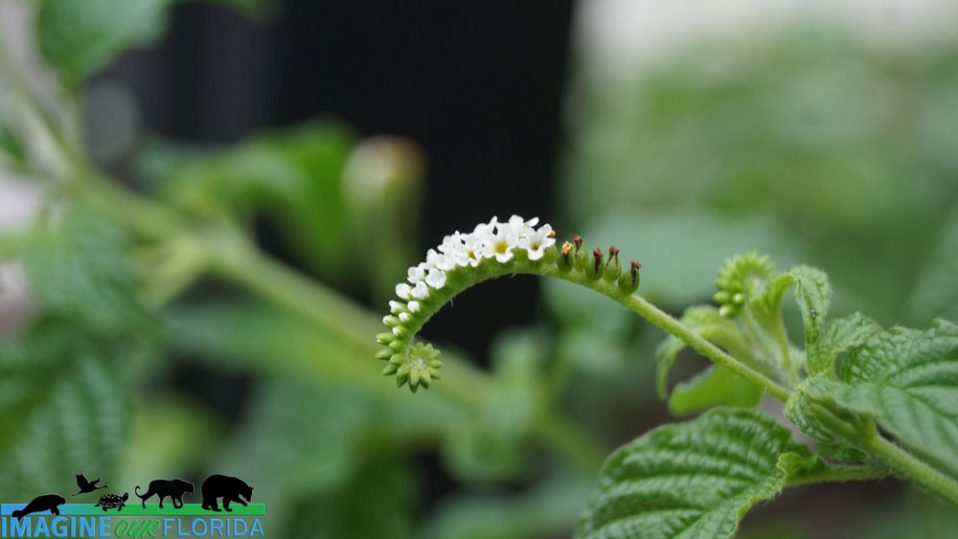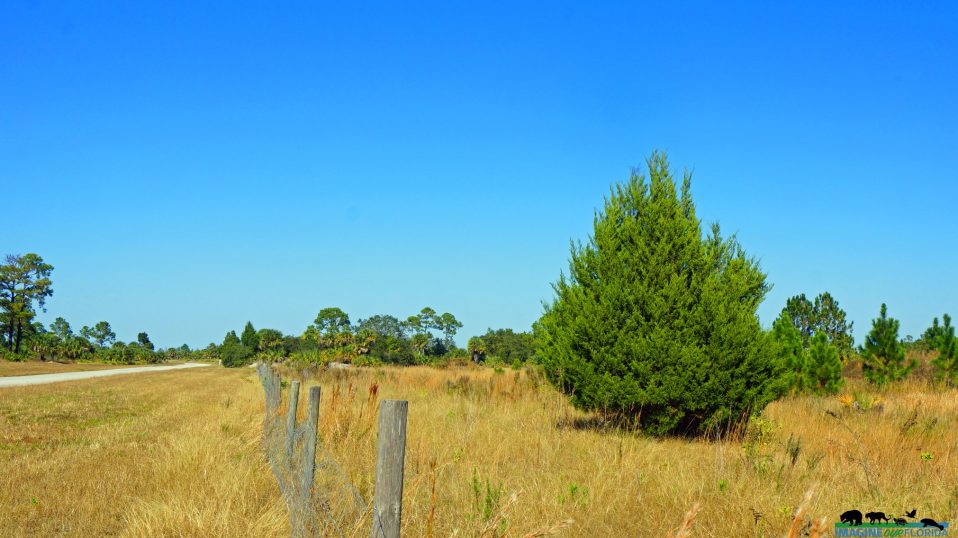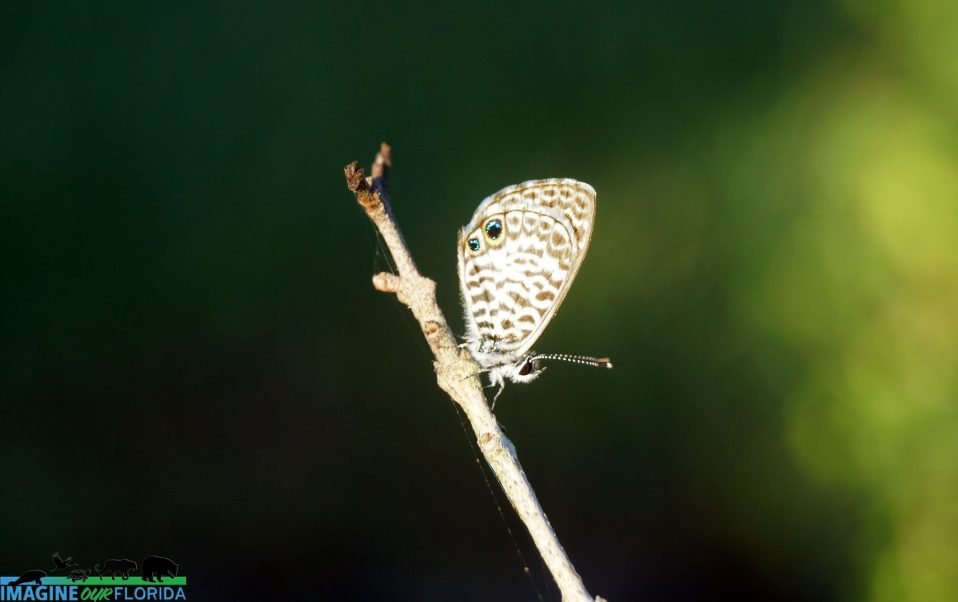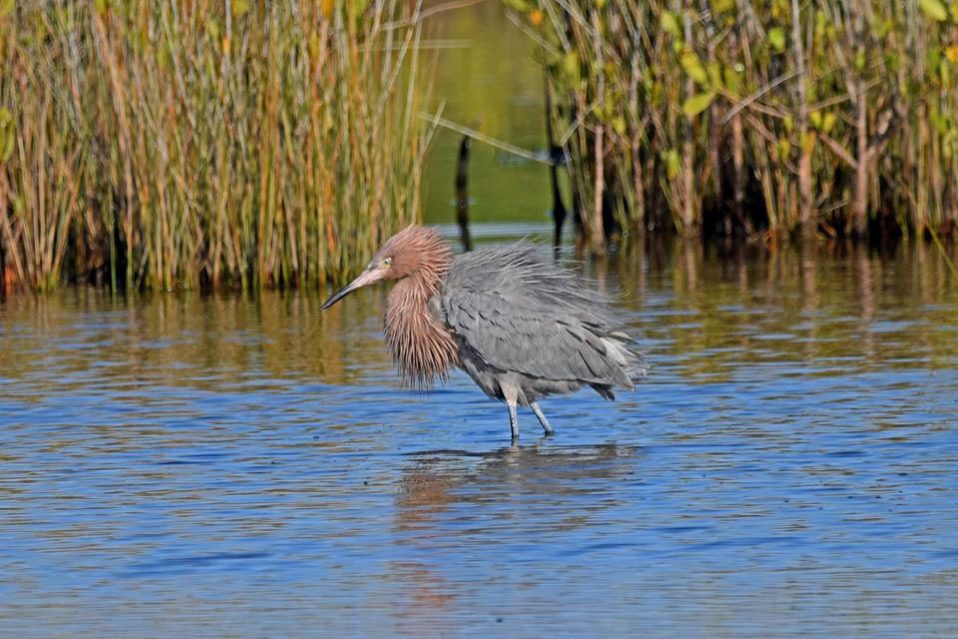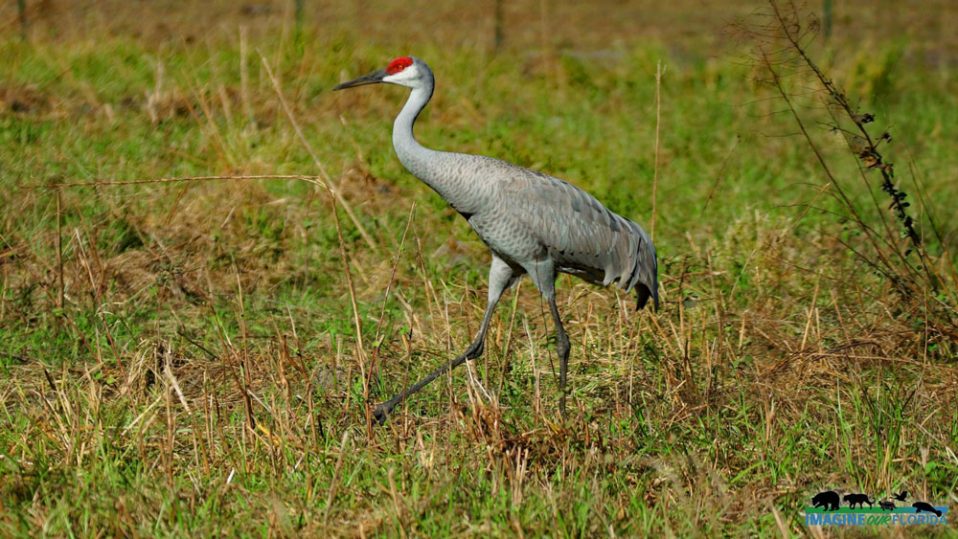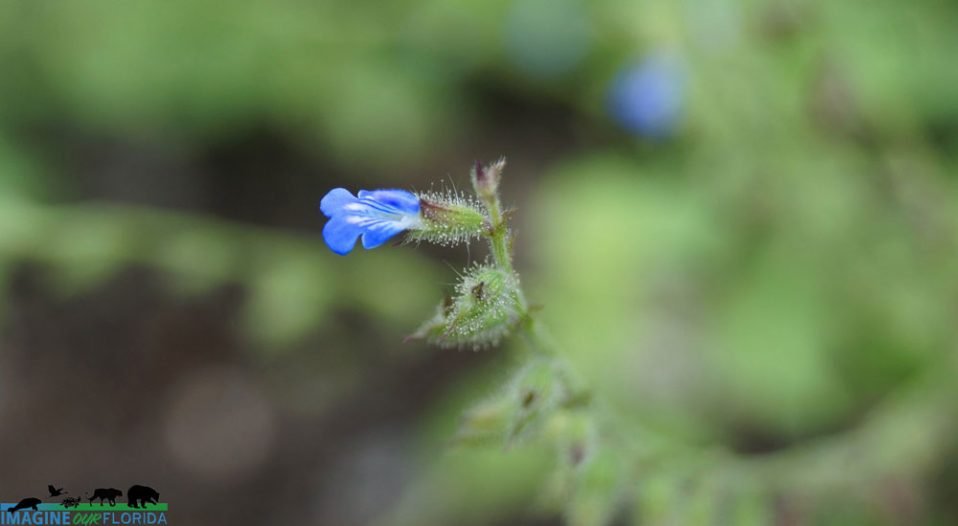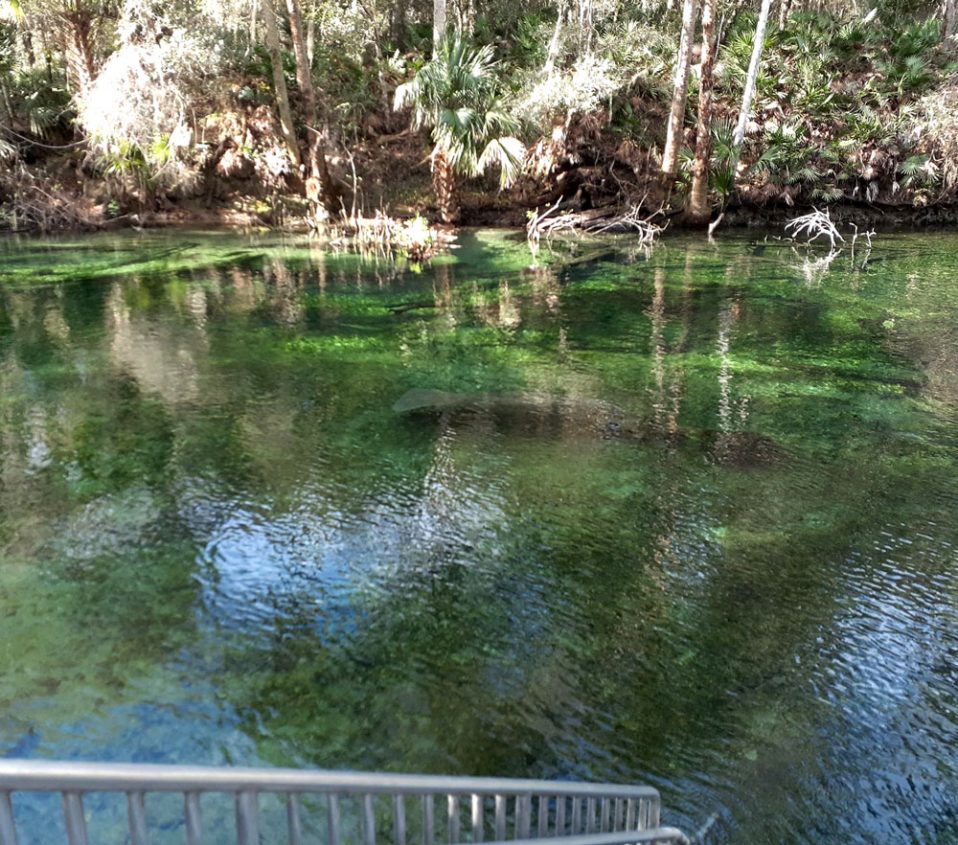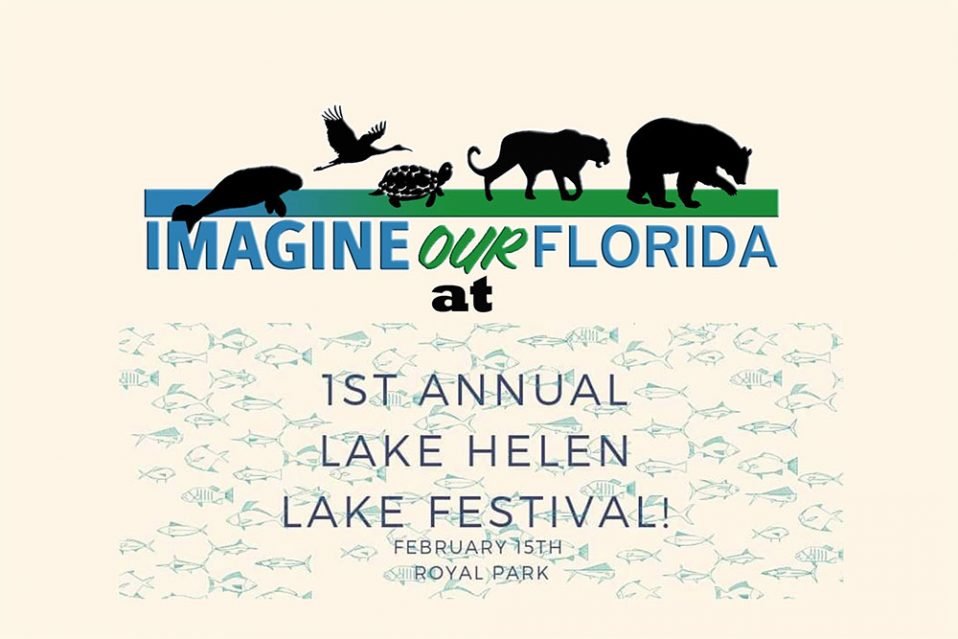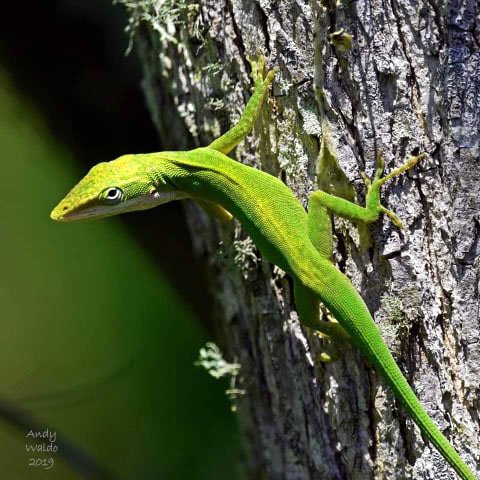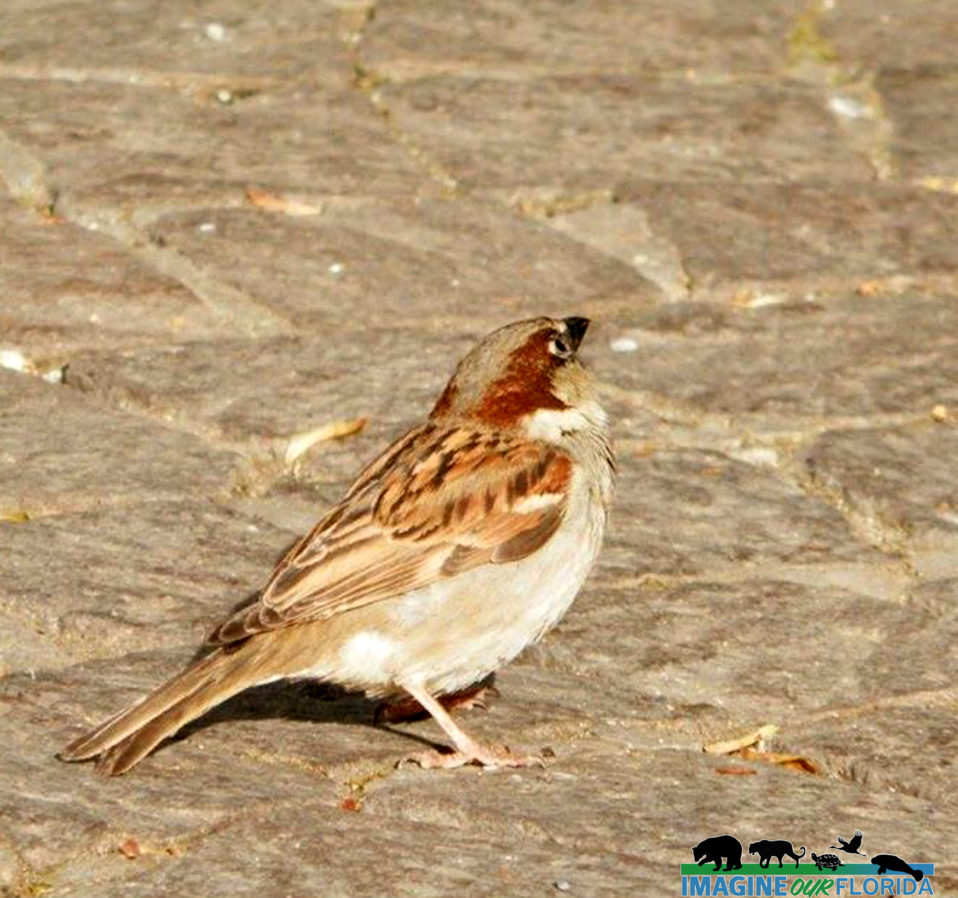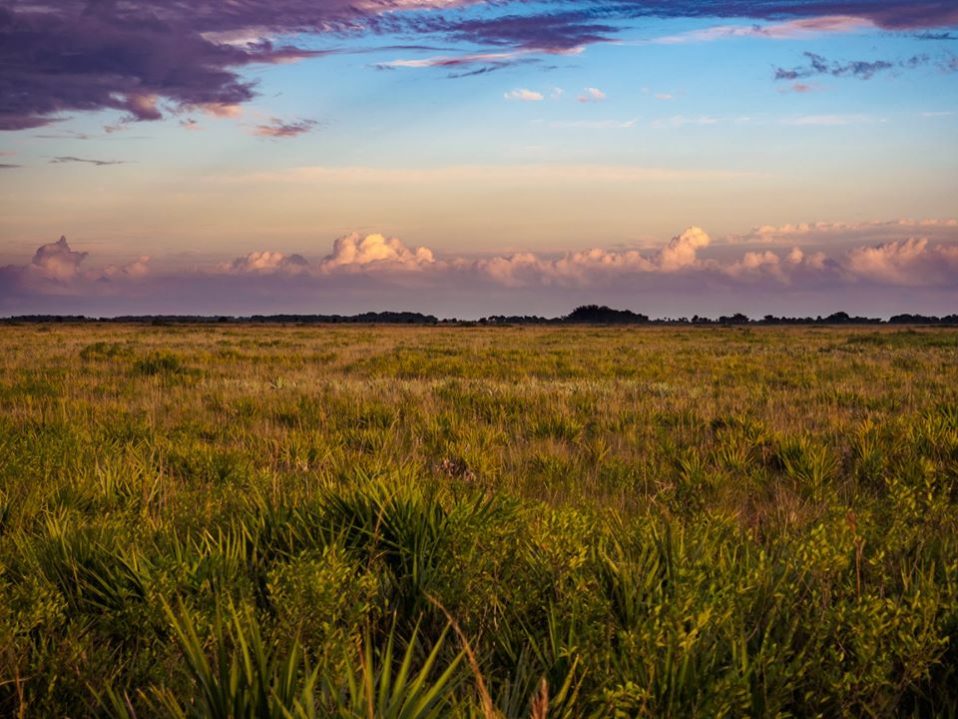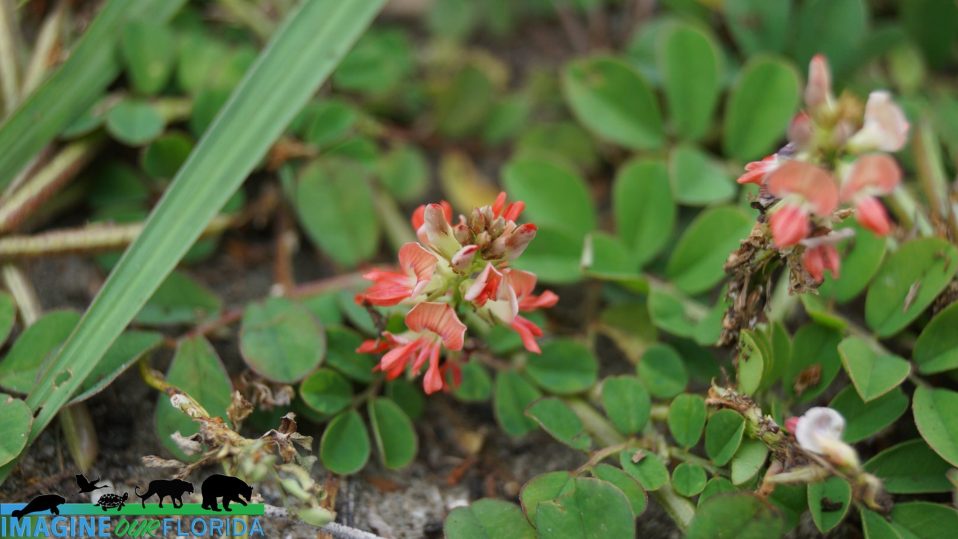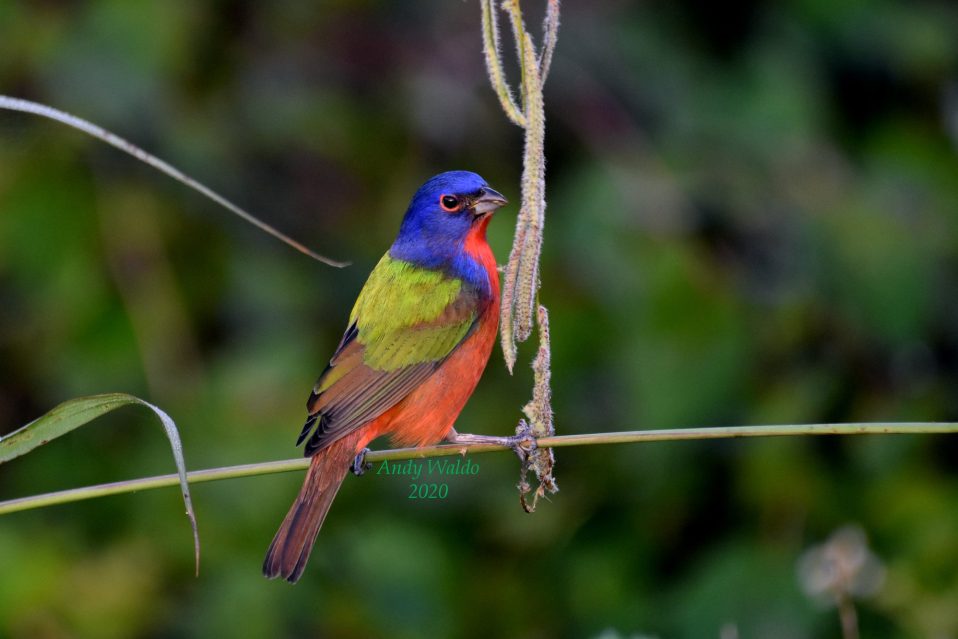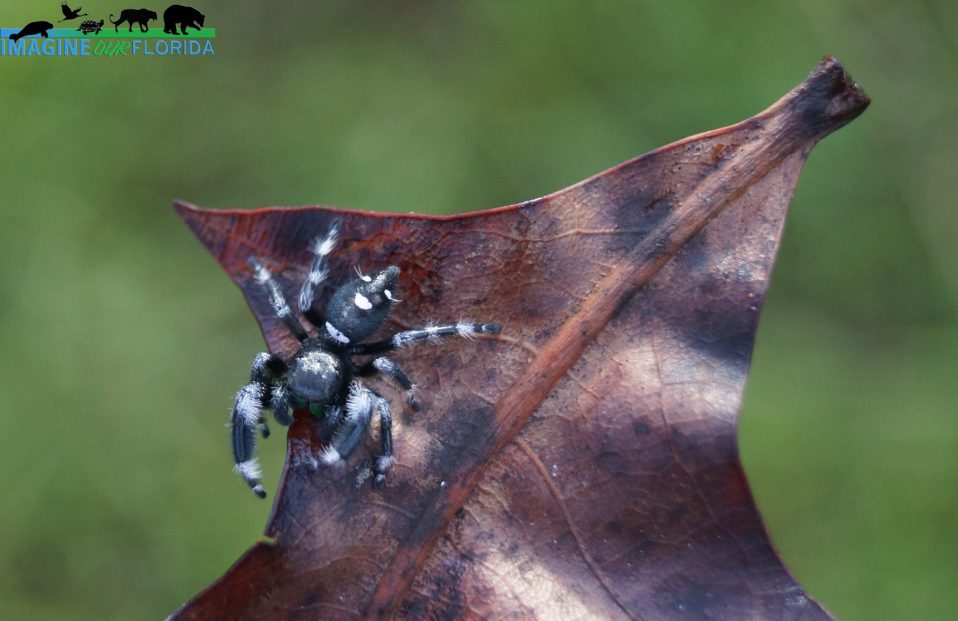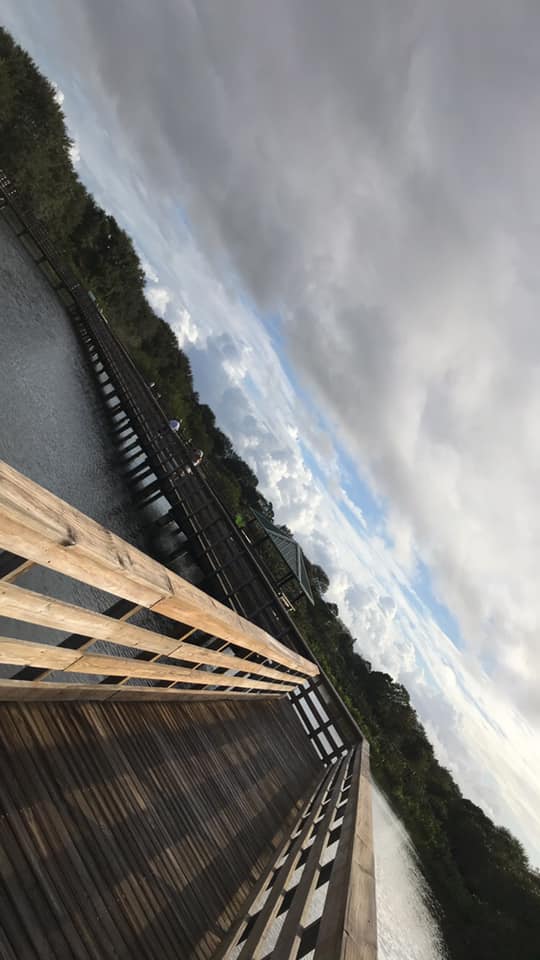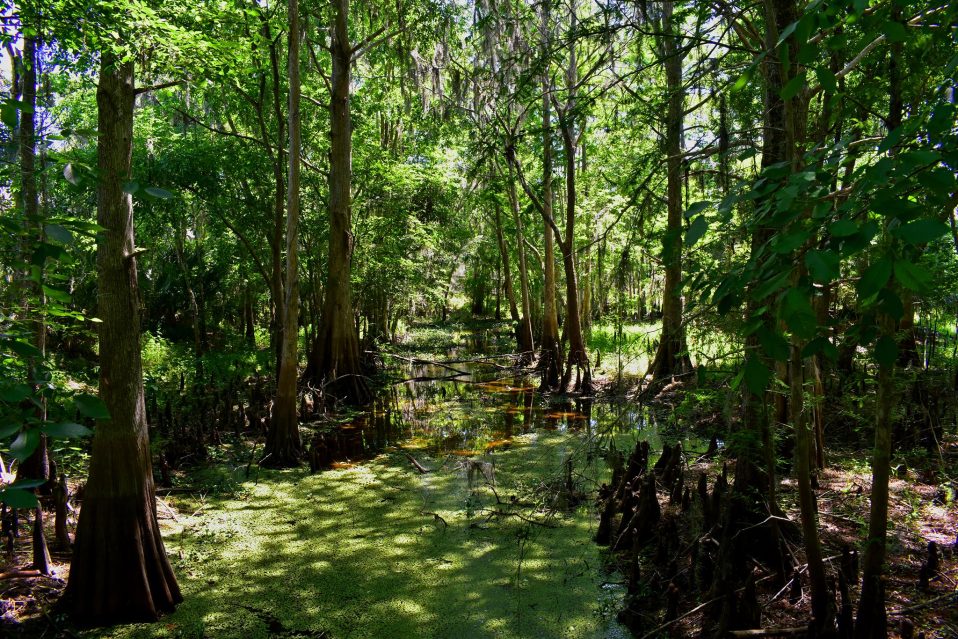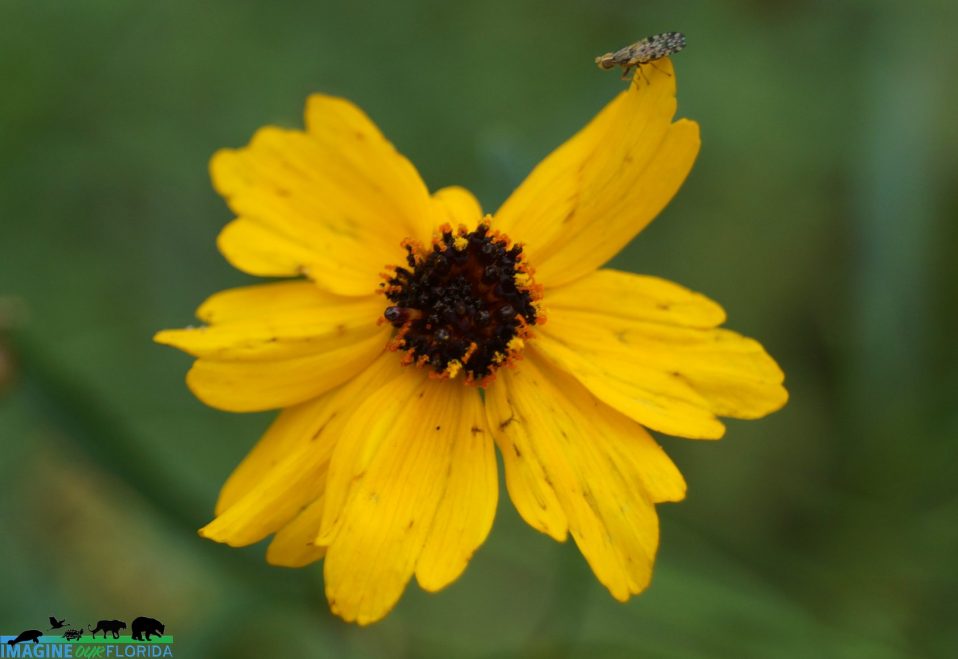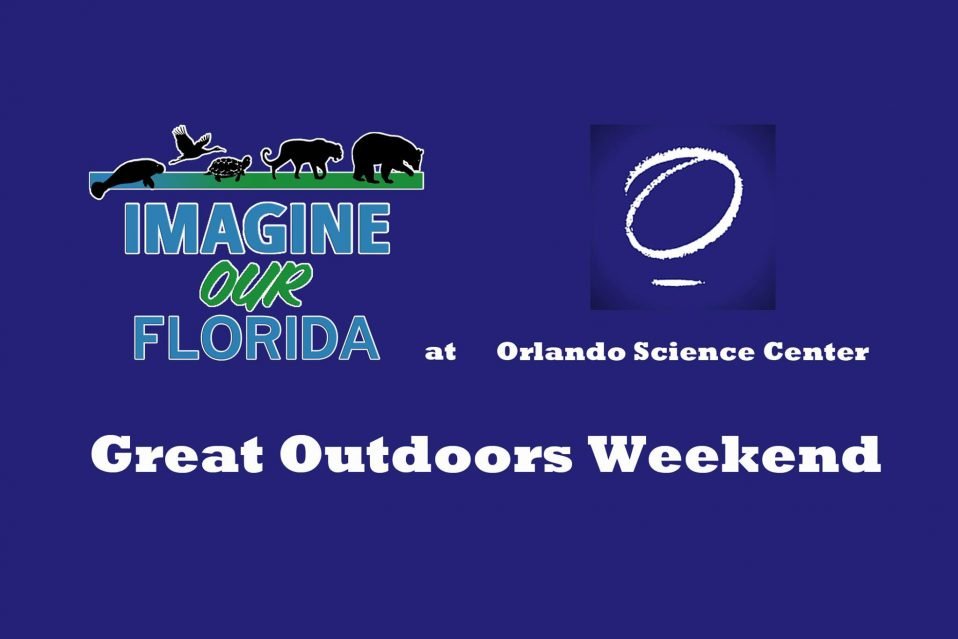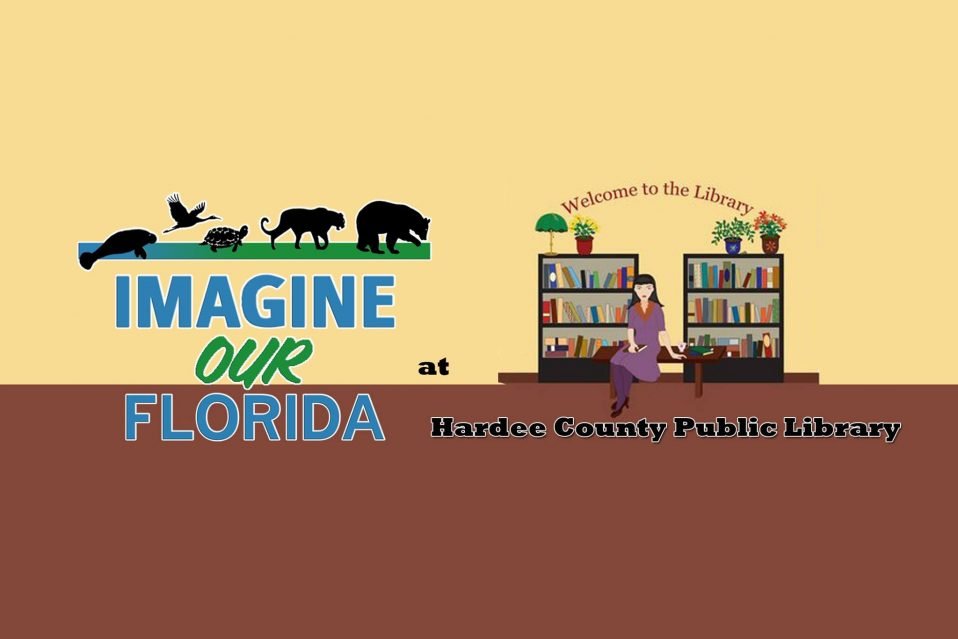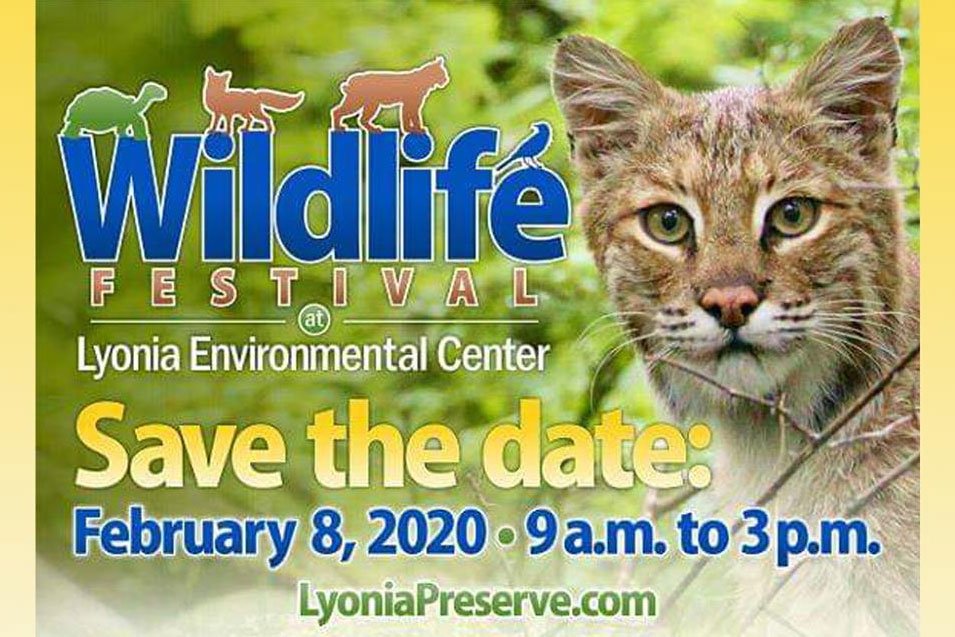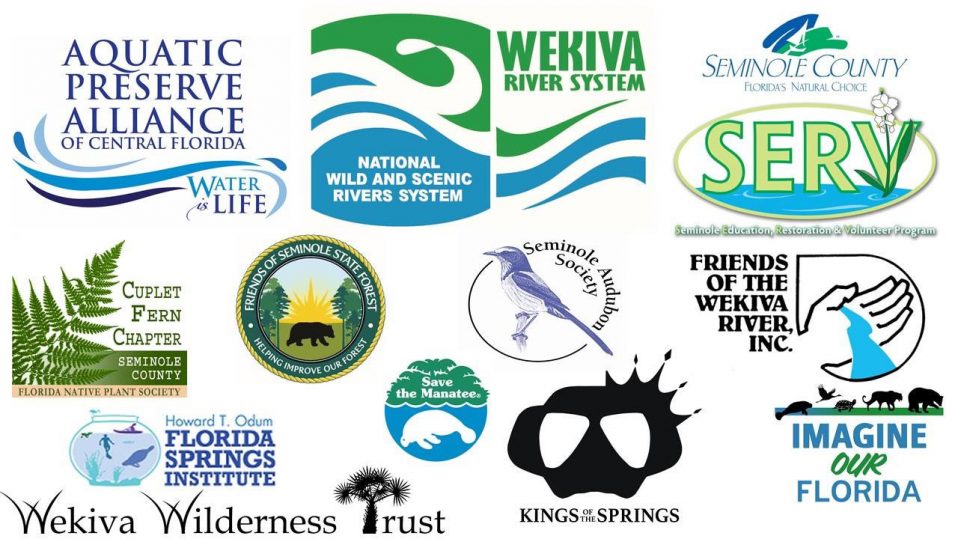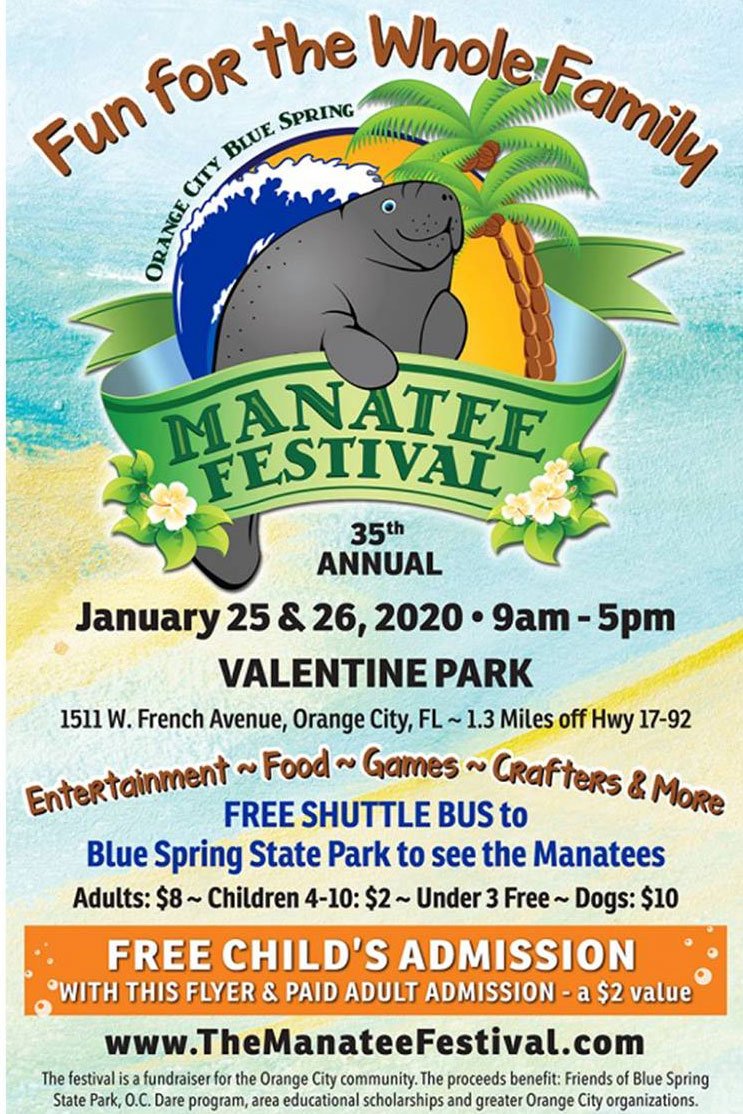Devil’s Millhopper Geological State Park Visit a miniature rainforest at Devil’s Millhopper Geological State Park. When the limestone beneath it collapsed, a 120-foot deep sink was created. Since the 1880s, Devil’s Millhopper has captured the imaginations of visitors who marveled at this natural wonder located in Gainesville. The state purchased the site in 1974. When the steps into the sinkhole were completed in 1976, Devil’s Millhopper Geological State Park was designated a National Natural Landmark. The history of Devil’s Millhopper has been passed down over generations. Oral history tells us that the Civilian Conservation Corps constructed the limestone entrance and a stairway into the sinkhole in the 1930s. How did Devil’s Millhopper get its name? In the 1800s, grain was ground in a gristmill. A funnel at the top of the mill, known as a hopper, held the grain as it was fed into the grinder. Fossils and bones of animals were found at the bottom of the sinkhole. Legend has it that the Devil used the Millhopper to capture the animals. A few remaining Catface pines remind us of the turpentine industry from long ago. Natural history abounds in the sink as researchers have discovered marine shells, shark teeth, and the fossils of extinct land animals. Today, Devil’s Millhopper is a welcome reprieve from the hustle and bustle of everyday life. A nature trail loops around the 500-foot rim of the sinkhole. Let your senses absorb the sights, sounds, and smells as you meander down the stairs into the rainforest. Take in the multiple shades of green as you slowly descend into the rainforest. Listen for the sounds from the treetops as their leaves rustle in the wind, and birds sing their melodies. Hear the water trickle through creeks and over waterfalls before disappearing into the limestone. Feel the temperates drop as you near the bottom of the sink and travel under the canopy of the lush trees. Look for grey treefrogs, fox sparrows, and golden-banded skippers as well as rabbits, squirrels, and a plethora of reptiles and amphibians. There are Saturday guided walks with a park ranger and a picnic area. Dogs on a six-foot leash are welcome. For more information: https://www.floridastateparks.org/parks-and-trails/devils-millhopper-geological-state-park Photo Credit: Aymee Laurain and Bobby Putnam
Scrubs
Scrubs are the remains of an archipelago that existed over 25 million years ago (Bostick, et al. 2005). Today, these ecosystems are characterized by low-quality sandy soil and are dominated by sand pines. The primary soil type is entisol which allows water to drain well and replenish the aquifer (The Nature Conservancy 1991). Plant species within the area are fire-adapted (Abrahamson, 1984). Fire regiments are typically every 20 to 80 years and are facilitated by resin from sand pines, which are highly flammable (Menges and Kohfeldt, 1995). As a result, a fire rapidly spreads through the system and climbs to the treetops, creating what is referred to as “crown fires.” The heat from these fires facilitates a serotinous response, opening of sand pinecones. This heat is necessary for the release of seeds (Brendemuehl, 1990). Following fire regiments, a large and diverse collection of seeds are dispersed to the understory and can remain dormant for several years (Carrington ME, 1997). Most sand pine scrub fires occur between February and June, with approximately 80% occurring during this time (Cooper, 1973). Historically, the primary means of fire ignition was lightning (Komarek, 1964.) Now, management practices include prescribed burns and mechanical harvesting of pines, which are recommended between March and May (Main and Menges, 1997). Conservation efforts are necessary to maintain a healthy habitat for wildlife and to prevent extinctions, but there are other values that make conservation of these areas so important. Scrubs produce a relatively small economic value, but it is important that practices for harvesting sand pines are sustainable. One sector that has been working on best management practices for sustainable use is the timber industry. An average of 40,000 acres a year of timber is produced from scrubs (U.S. Department of Agriculture, 2012). Sand pines are mostly used for wood pulp. To produce sufficient pulp, the trees need to be at least 35 years old. Alternative growth rotations are necessary to ensure a sustainable harvest that has led to a cost-effective strategy of preparing the ground for seeding. This strategy includes clear-cutting, roller chopping, seeding, and 35 years of growth (Hinchee and Garcia, 2017). Photo: Pine pulp at a paper mill in Pensacola 1947. References: Abrahamson W. 1984. Species responses to fire on the Florida lake wales ridge. American Journal of Botany 71. Bostick, K. Johnson SA, and Main MB. 2005. Florida geological history. UF/IFAS Extension. Brendemuehl R.H. 1990. Pinus clausa (Chapm. ex Engelm.) Vasey ex Sarg., Sand Pine. Silvics of North America 1:294-301. Carrington ME. 1997. Soil seed bank structure and composition in Florida sand pine. American Midland Naturalist 137(1). Cooper, R.W. 1973. Fire and sand pine. Sand pine symposium proceedings. General technical report SE-2. Southeastern Forest Experiment Station, USDA Forest Service; Marianna, Florida. 207 Hinchee J and Garcia JO. 2017. Sand Pine and Florida Scrub-Jays—An Example of Integrated Adaptive Management in a Rare Ecosystem. Journal of Forestry 115:230-237 Komarek EV Sr. 1964. The natural history of lightning. Proceedings of the Tall Timbers fire ecology conference 8. Tall Timbers Research Station; Tallahassee, Florida. The Nature Conservancy, Archbold Biological Station, Florida Natural Areas Inventory. 1991. Lake Wales/Highlands Ridge Ecosystem CARL […]
Lower Wekiva River Preserve State Park
Immerse yourself in Nature along the Wekiva River and Blackwater Creek at Lower Wekiva River Preserve State Park. Located in Sanford, Seminole County, the wetlands and blackwater streams are home to sandhill cranes, wood storks, river otters, turtles, fish, alligators, and Florida black bears. Stroll along the Sand Hill Nature Trail. Interpretive signs guide you as you admire the beauty of the native plants and enjoy the antics of the wildlife. Lower Wekiva River Preserve State Park is a wonderful outdoor space to bike, jog, or walk. Be sure to stop along the way for some birding. Paddle through the park on the Wekiva River, which has been designated a National Wild and Scenic River. Launch your paddleboard, canoe, or kayak at Katie’s Landing, where you will find picnic tables, grills, and restrooms. Equestrians appreciate the 26 miles of multi-use trails at Fechtel Tract, where they can ride through rainy-season creeks and streams, hydric hammocks, and open pastures. Water troughs, stalls, a coral and a mountain block is available for your horse. Stay the day, or spend a night or more at one of the primitive campsites. Grills and picnic tables are also available for you. Be sure to carry proof of a negative Coggins test. Pets on a six-foot handheld leash are welcome, with the exception of primitive camping areas. For more information: https://www.floridastateparks.org/parks-and-trails/lower-wekiva-river-preserve-state-park Photo Credit: Andy Waldo
Saltwort
Saltwort, Batis maritime, is also known as turtleweed or beachwort. A highly salt-tolerant shrub, Saltwort, is found in saltwater marshes and mangroves swamps. This long-lived perennial produces greenish-white flowers in late spring and is a host plant for larval and adult Great Southern White and Eastern Pigmy Blue butterflies. Some folks use Saltwort in salads as a salty herb. Saltwort should be planted in sandy soil in an area with full sun or light shade. It grows 1-4 feet tall and has been used as a groundcover. Be sure to purchase yours from an accredited Florida Native Plant nursery. Photo Credit: Aymee Laurain
Cedar Key
If you are looking for a place to escape the hustle and bustle of life, look no further than Cedar Key. A place where the locals greet you with friendly smiles, where shorebirds frolic in the waters, ospreys soar overhead, and a multitude of habitats are waiting to be explored. Your trip begins on Highway 24 in Levy County, where you drive from the mainland on low bridges, over picturesque channels, and salt marshes onto Cedar Key. A pencil factory was once located on Cedar Key, where the cedar trees supplied the wood for the pencils. The first Florida coast-to-coast railroad ended at Cedar Key before it was rerouted to Tampa. Shell mounds give us a look into the lives of the indigenous people who called Cedar Key home long ago. Today, about 800 permanent residents welcome visitors to their unique island. Cedar Key is a Nature Lover’s paradise, where visitors can stroll along nature trails, birdwatch, and paddle in the Gulf. The federally protected sanctuaries lure both shorebirds and migratory birds. Go on a coastal guided tour. Kayaks, paddleboards, and motorboats are available for rent to explore the Gulf of Mexico. Campgrounds provide space for your RV or tent. Saunter along the Cedar Key Railroad Trestle Nature Trail, a 1,700 ft path of old Fernandina Cedar Key rail line. Let the cedars and pines shade you as the songbirds serenade you with sweet melodies. Watch for a beautiful variety of wildflowers with butterflies flitting about. At Cemetary Point Park, there is an easy walk along a 1299 foot boardwalk through mangroves. Cedar Key Museum State Park Nature Trail is a short stroll where you will see gray squirrels playing, woodpeckers in search of food, mocking birds tweeting, and green tree frogs resting. The swamps, marshes, and wetlands are home to American avocets, ibises, roseate spoonbills, herons, egrets, pelicans, and more. Dolphins play in the Gulf. Thousand of birds visit during the fall and winter migration including, rare white pelicans. With its laid-back Old Florida vibe, Cedar Key is a perfect addition to your list of places to visit. Photo Credit: Dan Kon
Key Deer
Key Deer (Odocoileus virginianus clavium) are members of the North American White-tailed Deer family. They are the smallest species and are endangered. Found only in the Florida Keys, these beautiful animals were poached and suffered from habitat loss, leaving only a few dozen left in the wild. In 1967, Key Deer were listed as endangered. The protections afforded them under the listing, as well as the establishment of the Key Deer refuge, have brought their population up to nearly 1,000. Big Pine Key and No Name Key are home to 3/4 of the population. Key Deer dine on over 150 species of native plants. Adult females weigh about 65 pounds, and adult males weigh about 85 pounds. During the rut, the males lock horns as they compete. Breeding takes place in the fall. Between late spring and early summer, does give birth to one white-spotted fawn. When startled, Key Deer will raise their tails, exposing their white fur. Humans can be a threat to Key Deer. When visiting The Keys, drive slowly, especially at night and in the early morning. Keep them wild. Resist feeding Key Deer unhealthy human food. Photo Credit: Aymee Laurain and Dan Kon
Ladybug
Ladybugs (Coccinellidae), aka Lady Bettles, a worldwide symbol of good luck, are best known for their voracious appetite for aphids. As omnivores, they dine on whiteflies, mites, mealybugs, scale insects, and mildews and can devour up to 5,000 aphids in their lifetime. Ladybugs live two to three years and grow between 1/3 and slightly over 3/8 of an inch. Female ladybugs lay golden eggs on the underside of leaves, often near an aphid colony. In a few days, the eggs hatch, and the larvae will eat between 350 and 400 aphids within two weeks before becoming adults. Ladybugs’ strikingly bright colors make them easily identifiable but unappealing to predators. A fluid secreted from the joints in their legs also makes them taste bad. Ladybugs will outsmart their predators by secreting the foul smell while playing dead. When temperatures fall, Ladybugs enter diapause and live off their stored reserves for up to nine months. When the temperature warms to 55°, they resume everyday life. As they take flight, their tiny wings beat about 85 times per second. Did you know Ladybugs went to Outer Space? A space shuttle carried four ladybugs and a jar of aphids as part of a zero-gravity experiment. Ladybugs did not need gravity to dine on the aphids. It is not a good idea to purchase Ladybugs. Most that are for sale have been wild-caught. No studies have been done to determine whether or not any harm is being done to the Ladybug population in the area where they are caught. This can result in more pesticide use when ladybugs are not present. Ladybugs are not tested for disease before shipment so that they could introduce disease-carrying pathogens to native Ladybugs in your area. Ladybugs introduced to your garden will fly away if there are insufficient food sources. The best way to attract some of Florida’s 98 species of Ladybugs to your landscapes is to avoid chemicals. Learn to identify the larvae and leave them alone to eat the harmful pests in your garden. Photo Credit: Andy Waldo
Withlacoochee State Forest
Withlacoochee State Forest has been named one of the “10 Coolest Places You’ve Never Been in North America” by the World Wildlife Fund. Managed by the Florida Forest Service, the Withlacoochee State Forest is located on U.S. Highway 41 approximately seven miles north of the town of Brooksville and 50 miles north of Tampa and is a nature lovers paradise. Hike, bike, or horseback ride on miles of trails, or simply drive through the forest. Paddle the winding Withlacoochee River, Little Withlacoochee River, and Jumper Creek, all of which have been recognized as Outstanding Florida Waters. Notice the variety of trees at Withlacoochee State Forest. Discover southern magnolias, oaks, maples, gums, slash pine, longleaf pine, pond cypress, bald cypress, and hickory. Blooming blazing stars, goldenrod, thistle, and more will greet you along the way. Withlacoochee State Forest is teeming with wildlife. The forest is part of The Great Florida Birding and Wildlife Trail and is designated a Florida Scenic Trail. Listen and look for fox squirrels, white-tailed deer, gopher tortoises, rabbits, gray squirrels, wild turkeys, sandhill cranes, hawks, bald eagles, and owls. Croom Motorcycle Area provides 2,600 acres of off-road facilities for motorcycle and ATV enthusiasts. For those who want to take their time and explore all of Withlacoochee State Forest campgrounds are available. There are several primitive campgrounds for those who want a more rustic experience. The Tillis Hill Day Use Area is a perfect place for larger gatherings. A pavilion, commercial-sized grill/smoker, and dining hall are available for cooking and feeding your guests. There are 3 pavilions and numerous picnic tables waiting for you to enjoy your picnic at McKethan Lake. Leashed pets are allowed in some areas. Be sure to stop at the Withlacoochee State Forest Visitor Center for maps, current conditions, and more. For more information: https://www.fdacs.gov/…/State-Fo…/Withlacoochee-State-Forest Photo Credit: Aymee Laurain
Seminole State Forest
Seminole State Forest, located in Eustis in Lake County, boasts 18 different ecological communities, each with its own unique animals and plants, 15 springs, the Black Water Creek, and the Wekiva River. Sand pine scrub measuring 4300 acres provides a home for Scrub-Jays, Eastern Indigo Snakes, Hooded Pitcher Plants, and the iconic Florida Black Bear. Acquired under the Conservation and Recreation Land, Save Our Rivers, Preservation 2000, and Florida Forever programs, Seminole State Forest is managed by the Florida Forest Service. A hiker’s paradise awaits you at Seminole State Forest. There are more than 34 miles of hiking trails maintained by the Florida Trail Association. The National Scenic Trail crosses thru a 16-mile expanse of the Seminole State Forest and runs from Rt. 46 to the Ocala Forest. The North Sulphur Island Loop Trail is 8.5 miles and the Lower Wekiva Loop Trail is 10.4 miles. There are 25 miles of equestrian trails and 25 miles of open roads and trails for bicyclists. Explore Black Water Creek in your canoe or kayak. Drive-in access for automobiles requires a permit. Camp at one of the 5 primitive campsites, cook your dinner on the fire ring, and eat at the provided picnic table. Three additional walk-up campsites are located on the Florida National Scenic Trail. Pets are welcome when on a leash. Seminole State Forest is located in the Wekiva River basin and has 2 entrances. The Bear Pond Trailhead is located off of State Road 46, approximately 5 miles west of Interstate 4. Cassia Trailhead is located off of Brantley Branch Road, 0.1 miles east of State Road 44 in Cassia. For more information: Seminole State Forest / State Forests / Our Forests / Florida Forest Service / Divisions & Offices / Home – Florida Department of Agriculture & Consumer Services For more information: https://www.fdacs.gov/…/Our-Forests/S…/Seminole-State-Forest Photo Credit: Andy Waldo
Bottlenose Dolphin
With their never-ending smiles, Bottlenose Dolphins (Tursiops truncatus) easily capture our hearts. These large mammals grow to lengths of 10 to 14 feet and can weigh as much as 1,100 pounds. Their powerful bodies allow them to reach speeds of over 18 miles an hour. They can live to be 50 years old. Bottlenose Dolphins can be found inshore and offshore, including in estuaries. They are easy to spot as they surface two to three times a minute to breathe. Bottlenose Dolphins live in a community called a pod. Here they communicate with each other with an elaborate system of squeaks and whistles. Their speech allows them to work as a group to help a sick or injured dolphin, encircle a school of fish for a community dinner, and guard the pod against a shark attack. Using echolocation, Bottlenose dolphins make 1,000 clicking noises per second. The sounds of the clicks travel through the water until it bounces off their prey. When the sound returns, the dolphin can expertly determine the shape, size, and location of their next meal. Each day an adult dolphin can eat 20 pounds of flounder, mullet, pinfish, sheepshead, and marine invertebrates. Feeding a dolphin or swimming with a dolphin can seem harmless. It is not. In fact, it is against federal law. Human interactions with these magnificent animals can cause them to be drawn to humans, thus putting them at risk of boating accidents, entanglement in fishing nets, and consuming food that jeopardizes their health. Dolphins will pass these dangerous behaviors to their next generation. Grab a camera, and sit back and enjoy them playing and leaping in their natural, wild habitat.
Everglades National Park
Everglades National Park Here are no lofty peaks seeking the sky, no mighty glaciers or rushing streams wearing away the uplifted land. Here is land, tranquil in its quiet beauty, serving not as the source of water, but as the last receiver of it. ~ President Harry Truman Everglades National Park is the largest subtropical wilderness in the US. Its 1.5 million acres include swamps, marshes. mangroves, hardwood hammocks, pinelands, sawgrass, and slough ecosystems. It is designated an International Biosphere Reserve, a World Heritage Site, a Wetland of International Importance, and a protected area under the Cartagena Treaty. Once measuring 11,000 square miles, the Everglades contained a slow-moving sheet of water which balanced the ecosystem in southern Florida. Colonial settlers saw the area as farmland. Developers found it suitable for development. In the early 1900s, the wetland was being drained for development. Years of human interference in this natural landscape severely damaged the ecosystem and imperiled the animals and plants who once thrived there. Everglades National Park was established in 1947 at the insistence of scientists and conservationists to conserve the remaining natural landscape. Animal and plant species found only in the Everglades became protected. Many of the Everglades’ ecosystems are fire-dependent, therefore, a fire regime is in place. Prescribed burns not only assure that the animals and plants will survive but also thrive in their homeland. In 1977, Congress named 86% of the park the Marjory Stoneman Douglas Wilderness in honor of her relentless work on behalf of protecting the Everglades. There are 21 protected species in the wilderness and 1/3 of the area is submerged. Everglades National Park provides boundless opportunities for research. Current research includes the study of invasive plants and animals as well as wildlife and hydraulic monitoring. Located on the edge of the Atlantic ocean that is experiencing sea level rise, the Everglades is the perfect place to study the changes already caused by Climate Change as well as future changes that are certain to occur. Everglades National Park is waiting for you to explore the ecosystems and discover the endemic and legally protected animal and plant species. Look for abundant alligators, white-tailed deer, and bobcats. Discover rare and endangered species such as American Crocodiles, Florida Panthers, and West Indian Manatees. There is plenty to explore and discover at Everglades National Park. Guided tours, boating, and hiking are wonderful ways to learn about the park. Camping sites are available for RV’s and tents. For the more adventurous, Marjory Stoneman Douglas Wilderness offers primitive camping complete with dark night skies for stargazing. Temperatures average 53°F to 77°F from December through April. May through November is the wet season when the humidity and temperatures are high. There are 4 entrances, each with their own unique areas to explore. Be sure to click on the link below to plan your trip. For more information:https://www.nps.gov/ever/index.htm Photo Credit: Aymee Laurain
Blue Passion Flower
Blue Passion Flowers (Passiflora incarnate), also known as Maypops, are native to Florida and easy to grow in your yard. They are host plants for Gulf Fritillary butterflies and attract a variety of bees and butterflies as well as hummingbirds and bats. Look for Blue Passion Flowers along roadsides and in citrus groves or anywhere there is dry soil. A Blue Passion Flower vine is a must-have for your butterfly garden. The stunning 3-5 inch blooms only last for a day, however, they bloom summer through fall. Plant this vine along a fence or let it climb up your arbor or trellis. The Maypop will die back after frost but will pop up again in May. Photo Credit: Andy Waldo
River Lakes Conservation Area
River Lakes Conservation Area is an Upper St. Johns River Basin Project and is overseen by the St. Johns Water Management District and the U.S. Army Corps of Engineers. Together, the organizations reclaimed drained marshlands, replumbed existing canals, and created new reservoirs. Today, the restored wetland habitat helps control flooding, improves water quality, reduces freshwater discharges to the Indian River Lagoon, and provides a clean water supply to Melbourne. The restored River Lakes Conservation Area, located 15 minutes west of the Viera, delights outdoor enthusiasts. Hike, bike, bird watch, discover wildlife, or launch your boat or paddleboard. The area includes 3 lakes: Winder Lake, Poinsett Lake, and Washington Lake. Picnic pavilions and restrooms are provided at Washington Lake. There are 3 boat ramps on the property. Primitive camping sites and shelters are available for those who want to spend the night or a week. Explore the 7 miles of trails through hardwood and palm hammocks, open vistas, and grasslands. Wildflowers, wood storks, bald eagles, sandhill cranes, and river otters are residents at River Lakes Conservation Area. Dogs are welcome and must be on a leash. For more information: https://www.sjrwmd.com/lands/recreation/river-lakes/ Photo Credit: Andy Waldo
Pygmy Rattlesnake
Pygmy rattlesnakes (Sistrurus miliarius) are found throughout Florida. They are found in various habitats in the wild and are the most common venomous snake to make an appearance in a Florida yard. At only 18 inches long and with a skin color that allows them to camouflage easily, Pygmy rattlesnakes are seldom seen. They have a small rattle that sounds like a buzzing insect. Like all snakes, the Pygmy Rattlesnake prefers to retreat when encountering a human. However, this feisty snake won’t hesitate to attack if provoked. Pygmy Rattlesnakes give birth to three to nine live young in late summer. Mice, nesting birds, lizards, insects, frogs, and other small snakes make a menu full of meal choices.
Brahminy Blind Snake
The Brahminy Blind Snake (Indotyphlops braminus) is also known as the Flower Pot Snake because it hitchhiked from Asia to Florida in shipments of potted plants. All Brahminy Blind Snakes are female. Reproduction occurs when the cells in the egg begin to divide. A single snake can produce eight genetically identical babies. This tiny snake is often mistaken for an earthworm. On closer inspection, you will see that she has no segments, and her eye sockets are covered with scales. She may even stick out her tongue while you are holding her. Look for Brahminy Blind Snakes in your garden under rotting wood, leaf litter, and mulch. They pose no known threat to natives. Their favorite dinner of termites and ant pupae can be found when they burrow into moist, loose soil. https://www.youtube.com/watch?v=ty1DnxHpVqA&feature=youtu.be
High School Standards – Climate Change Lesson Plan
Click on links below Lesson Plan PowerPoint Presentation
Indian River lagoon
—- From Sea to Shining Sea… —- One of the best advantages of living in Florida is that, if we travel far enough in either a Westerly or Easterly direction, we will find…water! And, one really cool thing about that is when the water seems to glow, as if by magic. On a summer evening in the Indian River Lagoon, a natural magic illuminates the wake of a boat, the splash from a paddle, or creates beautiful blue flashes of frenzied schools of mullet. If you run your fingers through the water, you can see it fall in gorgeous blue-green luminescent droplets… What is causing the lagoon to glow? Bioluminescence! Tiny dinoflagellates (Pyrodinium bahamense) – or bioluminescent plankton – create light through biochemical reactions. When excited or stimulated, these plankton become little flashlights in the water, much like fireflies do on land. This evening, the plankton are lighting our way, as we kayak along the Indian River and into the lagoon. Originally named the “Rio de Ais,” after the Ais tribe of Native Americans who made their home along the East coast of Florida, the lagoon is, in actuality, a grouping of five lagoons, which comprise the most biodiverse lagoon ecosystem in the Northern Hemisphere, with over 10,000 species of plants and animals – thirty-five of these threatened or endangered. The lagoon is rife with game fish, such as tarpon or snook, which grow to epic sizes because there are very few predators in the lagoon. It is also host to all three types of mangroves, which provide filtration and nutrition to the ecosystem. We are told by our guide that, due to development, the mangrove population has been reduced by 85%. In addition, the water level in the system is rising due to increased runoff from the city. And there is also the danger from algae blooms, which form as a result of deforestation, pollution and high temperatures. Surely, these things are serious indications of danger to our natural ecosystems. However, they do not detract from the magic we are witnessing this evening; the beautiful blue glow serving as a reminder of the uniqueness and intricacy of this environment, one we must cherish and protect. If You Go… If you are looking for an educational, but interesting and fun adventure to share with family or friends, consider taking a bioluminescence tour! BK Adventure offers environmentally-friendly guided eco-tours. For more information, they can be reached at: info@bkadventure.com | www.bkadventure.com | (407) 519-8711 To help ensure an enjoyable experience, we suggest wearing a long-sleeved shirt, long pants, and closed shoes, and taking along some mosquito repellent, as well as a change of clothes, as you will likely get wet – but, that’s part of the fun! Submitted by IOF Advisor Arlene Cuellar *Bioluminescence photos courtesy of BK Adventure*
John B. Sargeant Conservation Park
John B. Sargeant Conservation Park Named after a member of the Hillsborough River Basin Board of the Southwest Florida Water Management District, John B. Sargeant Conservation Park is located in Thonotosassa. Meander through a wetland forest on the quarter-mile boardwalk. Stop by the overlook to see the Flint Creek meet the Hillsborough River. Enjoy the flowing river from the rest area at the end of the boardwalk. For more adventurous hikers, the 6.7-mile Old King Trail winds from the trailhead at John B. Sargeant Park to the Model Dairy trailhead at Hillsborough River State Park. Launch your boat at the John B. Sargeant boat ramp. Immerse yourself in the river life as you paddle the Hillsborough River. The Hillsborough River State Canoe Trail will take you on a journey through hardwood trees where lilies bloom and birds sing. Seventeen Runs offers the opportunity to explore a hardwood swamp, its unique plants, and the wildlife who thrive there. Be prepared to get some wonderful photographs since John B. Sargeant Conservation Park is on the western section of Great Florida Birding and Wildlife Trail. Picnic tables, covered pavilions, and restrooms are provided for your convenience. Bring your dog. Just be sure she/he is on a six-foot leash. For more information: https://www.swfwmd.state.fl.us/recreat…/john-b-sargeant-park Photo Credit: Aymee Laurain
Forked Bluecurls
Forked Bluecurls, Trichostema dichotomum, are native to Florida and a member of the mint family. Bees and other pollinators are attracted to their aromatic blue-violet flowers. They are often found in thickets and dry pinelands. Look for blooms in August and September. Because they propagate easily from seeds, Forked Bluecurls will thrive in your wildflower garden and may need to be controlled to leave room for other wildflowers.
Paper Wasp
Wasps get a bad rap. They sting, and they not as glamorous as a bee that makes honey. Wasps matter a lot because they play an important role in a healthy environment. Paper Wasps (Polistes dominulus), also known as Umbrella Wasps, are predatory and are at the top of the invertebrate food chain. Along with other wasps, Paper Wasps protect lower invertebrate species and plants. They work as generalist pollinators, like bees, to move pollen from one plant to another. Paper wasps are social and will create a nest each year. The queen will emerge from the ground where she spends the winter and will build a nest using chewed wood pulp. The first generation of wasps she produces consists of worker wasps who feed on nectar. She will then concentrate on laying more eggs. The worker wasps feed the larva masticated caterpillars, flies, and other residential and agricultural pests. Vegetable gardeners love these flying predator Paper Wasps since they provide free and natural pest control. Like a bee or spider, the sting can be life-threatening to those who are allergic. However, Paper Wasps usually do not attack unless they are provoked or feel threatened. Unlike the honey bee, the Paper Wasp’s stingers are smooth and can sting more than once. Running and quick movements can be mistaken as an attack on the wasp. When you encounter a Paper Wasp, raise your hands slowly to protect your face, and walk away slowly. According to Seirian Sumner, a senior lecturer in Behavioral Biology at the University of Bristol, ‘They may be a nuisance on a sunny day – but a world without wasps would be an ecological and economic disaster.’ Photo Credit: Dan Kon
Crandon Park – Key Biscayne
Located on the barrier island of Key Biscayne, Crandon Park is a hidden gem just waiting to be explored. Connected to the mainland by a causeway, Crandon Park was acquired by Miami-Dade County from the heirs of Commodore William John Matheson in 1940. The gift came with the stipulation that the land must be used as a public park, and in 1947, Crandon Park was ready to receive its first guests. Crandon Park is a nature lover’s paradise. Its unique fossilized mangrove reef, two and a half miles of state historic highway, protected wetlands, estuaries, coastal hammocks, Great Florida Birding and Wildlife Trails, and spectacular shoreline provide countless opportunities to be engulfed in nature. The earliest known inhabitants of Crandon Park were the Tequesta Indians. Hurricane Andrew exposed three archaeological sites, one of which appears to indicate the sites of poles used by the Tequesta as supports needed for their thatched homes. In 1513, Juan Ponce de León included Key Biscayne in his chart of The New World. Commodore William John Matheson purchased 1700 acres of land in Key Biscayne in 1908, which later became Crandon Park. He used the land to build a coconut plantation and introduced the Malay Dwarf coconut, now the most common coconut in Florida. In 1948, the Zoological Gardens were established on the southern 53 acres of Crandon Park. By 1967, Crandon Park was renowned worldwide for the first successful birth of an Aardvark. The Park also successfully watched over the birth of two Indian elephants and, in 1973, the hatching of two Southern Bald Eagles. Today, Crandon Park is a Nature Lover’s delight. Wildlife freely roams in and out of the doorless zoo structures. Saunter on one of the nature trails and visit the Nature Center. Look for shorebirds, songbirds, hawks, butterflies, wild plants, coontie, and beach peanut. Bike through the Key Biscayne Archaeological Zone on a designated path. Immerse yourself in an EcoAdventure where you can bike, hike, or learn about Sea Turtles. Soak up the sun at the two-mile beach, bring your snorkel, and explore the underwater living world. Launch your boat, kayak, paddleboard, wakeboard, or kiteboard. The internationally known Crandon Marina offers a dive boat operation. Enjoy a round of golf or a game of tennis. Bring a picnic lunch to enjoy in a Pavillion, eat at one of the restaurants or concession areas, or rent a cabana for a family get-together. A boardwalk to the fossilized reef and wheelchair beach accessibility is provided. For more information: http://www.miamidade.gov/parks/crandon.asp Photo Credit: Ileana Rodriguez-Ramirez
Flamingo (American)
American Flamingo The American Flamingo (Phoenicopterus ruber) stands 3-5 feet tall with a wingspan of up to 50 inches. The bright pink color comes from a diet of snails, crustaceans, crabs, and algae. Without this specific diet, they would turn gray. The most unusual thing about Flamingos is their tongues. The tongue is encased in the lower jaw and does not move. It squeezes mud through structures in the bill called lamellae. Lamellae act as a strainer to extract insects, brine shrimp, algae, and other small prey. There has been some debate on whether or not Flamingos are native to Florida. If they are spotted, they are usually considered escapees from captive flocks. During the 1800s, flamingos were considered native to Florida. John James Audubon came explicitly to see Flamingos on his 1830 visit to Florida. By the 1900s, Flamingos had almost completely vanished. They were hunted for food, skin, and feathers. Flamingos are wading birds and can be found around a water source. They have very long, thin necks and legs. Their heads are small, and their bills are large, heavy, and have a crook. Young flamingos have straight bills, but the crook develops as they age. The Flamingo stands on one leg to conserve heat as their legs have no feathers. Conserving heat is also why they bury their heads in their feathers. It also makes it easier to stand on one leg and reach down into the water with their bills to catch prey. American Flamingos are monogamous. The flock will mate simultaneously so the eggs will hatch collectively. The flock protects the young from predators. The mated pair will make a mound of mud, and the female will lay one egg, which is between 3 to 3 1/2 inches long. It hatches in 27 to 31 days. Hatchlings are born white and turn pink within two years. Both parents produce a crop of milk in their upper digestive tract, which they feed to the young until they begin to eat solid food. Florida has removed Flamingos from the non-native list. Hopefully, flamingos will regain their native species’ status and become subject to federal and state protections. Conservation efforts to protect Flamingos will be necessary to ensure these birds continue to survive even as they face increasing threats from habitat loss, pollution, and invasive predators. This historical population is in the very beginnings of a recovery. When we work together, we will ensure American Flamingos will not become extinct. Photo Credit: Paul Waller Natureboy Photography and Lynn Marie
Florida National Scenic Trail
The Florida National Scenic Trail is a congressionally designated National Scenic Trail. The USDA Forest Service is the administrator of the Florida Trail, charged with planning routes, overseeing the development, and establishing partnerships to complete the trail. The trail is approximately 1,500-miles long and is intended to offer a continuous, permanent non-motorized recreation opportunity for hiking and other compatible activities. Over its length, it showcases the incredible biodiversity, history, and rich culture of Florida. Its termini lie in Gulf Islands National Seashore to the North and Big Cypress National Preserve in the South.” ~ Florida Trail Association Images of Florida Trail in Oviedo courtesy of IOF contributor Jonathan Holmes Find a Florida National Scenic Trail near you: https://www.floridatrail.org/florida-national-scenic-tra…/…/
Twoleaf Nightshade
The FLEPPC, (Florida Exotic Pest Plant Council), considers Twoleaf Nightshade to be a category II invasive exotic plant. FLEPPC defines Category II invasive exotics as those that have increased in abundance or frequency but have not yet altered Florida plant communities. It is recommended that you remove Twoleaf Nightshade when you discover it in your yard. Twoleaf Nightshade, (Solanum diphyllum), attracts bees, butterflies, and birds. It is an upright shrub that grows 3-6′ tall and has alternating leaves with one larger than the other on mature plants. White to lavender fragrant flowers produce fruit that is orange when ripe. Native to Mexico and Central America, the Twoleaf Nightshade is an exotic that relies on birds to play an important role in seed dispersal. These shrubs can be found in disturbed areas, flood plains, roadsides, hardwood forests, hammocks, and a shady spot in your yard.
Ocala National Forest
There are plenty of wild spaces to explore in the 387,000 acres that make up Ocala National Forest. More than 600 lakes, springs, and rivers make it a water lover’s paradise. As the southernmost forest in the continental United States, it is home to the world’s largest contiguous sand pine scrub forest. Middens left behind by the earliest inhabitants of the Ocala National Forest are proof of the Timucuan making their homes in the forest. From 1890 – 1920, timber and turpentine from the Ocala forest supported the local communities. However, the land was not managed well, and deforestation, overburning, and other practices led to the demise of the industry and loss of property values. President Theodore Roosevelt proclaimed the Ocala Forest the first National Forest east of the Mississippi in 1908. In the 1930s, the Civilian Conservation Corps was created as part of the New Deal. People happy to return to work constructed a dining hall, campgrounds, a mill, cabins, swimming areas, and monuments. These structures still exist today. When the sea retreated 25 million years ago, it left behind Big Scrub. The plants and animals who live in the sand pine scrub depend on fire to thrive. Look for gopher tortoises and scrub jays. Backpackers will enjoy the 72-mile section of the Florida Trail, complete with designated campsites along the way. There are multiple shorter trails throughout the forest and equestrian trails. Watch for wild turkeys, white-tailed deer, alligators, and bald eagles. Many iconic Florida Black Bears live in the Ocala National Forest, along with threatened Eastern Indigo Snakes and endangered Red-cockaded Woodpeckers. Cool off when you dip in one of the four springs with a year-round temperature of 72*. Bring your snorkel to see what lies beneath the water. For a closer look, dive into one of three magnitude springs. Explore the wilderness by kayaking or canoeing through a waterway. Hike or bike through the scrub and discover the wildlife who make their homes there. Spend a night, a day, or a week when you camp at a primitive or developed campsite, in your RV, or in one of the cabins. Plan your trip to the Ocala National Forest. For more information: https://www.fs.usda.gov/main/ocala/home Photo Credit: Aymee Laurain, Dan Kon
Ruby-throated Hummingbird
Ruby-throated hummingbirds (Archilochus colubris) are the most common hummingbirds found in Florida. Black-chinned and rufous hummingbirds occasionally visit Florida in the winter. You can observe Ruby-throated hummingbirds at the edges of woods and in city parks. They are common in flower gardens where they seek out their favorite tubular flowers. With their long bills and tongues, hummingbirds are equipped to reach the delicious nectar that lies deep within the flower. Females produce 1-2 broods each year. After the male courtship, the female builds a nest surrounded by a leafy cover. Be sure to look for these tiny nests before trimming your shrubs. The incubation of two eggs takes 11-16 days. The busy mother hummingbird may begin to build a second nest while continuing to feed her young ones in the first nest. The babies take flight at 20-22 days old. Take a few minutes to watch a Ruby-throated Hummingbird sip nectar from a flower in your garden. Their tiny wings beat more than 50 times per second as they hover while feeding. Can you spot a hummingbird snatching a tiny insect from the air or a leaf for dessert? Source: Audubon, UF Photo credit: Andy Waldo
Scarlet Rosemallow
Scarlet Rosemallow, Hibiscus coccineus, is native to Florida and can be found in swamps and wetlands along lakes and streams. Also known as Marsh Hibiscus, the scarlet flowers on this water-loving shrub appear in late spring and summer and only last for a day. Hummingbirds and butterflies are attracted to the beautiful crimson wildflowers. Bonus: Scarlet Rosemallow can be grown in your home garden in an area that receives plenty of water.
IOF Window Decal
We have had many people ask for an Imagine Our Florida window decal/bumper sticker that is smaller than our regular sized bumper stickers. Here it is! These decals have a dimension of 5″ x 2″ and look great on anything including car windows. A donation of $5 gets you one of these decals to proudly display. All of our sales and donations goes into creating new programs, displays, educational opportunities, and general funds needed to continue our mission and teach people to Connect. Respect. and Coexist. Thank you for your support.
IOF Wildlife Refrigerator Magnets
Add an IOF wildlife magnet to your refrigerator or your collection. Choose from the Florida panther, Black bear, Tortoise, Wading Birds, or the Manatee. Dimensions are 3-1/8″ tall x 2-1/8″ wide. Strong magnet to hold papers and notes to your refrigerator or anything a magnet will stick to.
Clothing – 2022 IOF Manatee T shirt
100% Preshrunk Cotton. Unisex style. This style/color is being discontinued.
Fred Howard Park
Fred Howard Park There are 155 acres on the Gulf of Mexico in Tarpon Springs where you can revel in the beauty of white sandy beaches and breathtaking sunsets. Named for the former Mayor of Tarpon Springs, who set aside the property for the enjoyment of residents in 1966, Fred Howard Park delights nearly 2 million residents and visitors every year! Explore pine flatwoods, sandhills, wetlands, mangrove estuaries, seagrass beds, and coastal scrub. Discover the wildlife who make their homes there. Watch for eagles, osprey, butterflies, gopher tortoises, fox squirrels, manatees, and dolphins. Stop along the mile-long causeway to sunbathe, then cool off with a quick dip in the Gulf. Paddle your kayak or canoe in the Gulf or experience the thrill of windsurfing. Bring your lunch to enjoy in one of 9 picnic shelters and be sure to stop by the playground for a nostalgic ride on the swings. For more information and a map of the park click here: https://pinellas.gov/parks/fred-howard-park/ Photo Credit: Marc Goldberg
Eastern Cottontail
The Eastern Cottontail (Sylvilagus floridanus) is best known for the white puffy fur on its tail’s underside. Cottontails grow to 14 – 17 inches in length and weigh two to four pounds. Their cotton-like tail is most noticeable when they hop. Cottontails can be found in woodlands, fields, briar patches, bushy areas, and yards. They are herbivores often seen dining on clover, grasses, and other green vegetation. When greens are not available, Cottontails will seek out young woody shoots and bark. You will often see these solitary rabbits in the early morning or evening. Breeding can occur any time during the year but happens most often in February through September. In about a month, the mother cottontail will give birth to a litter of 4 – 7 rabbit kittens. Female Cottontails can produce 3-4 litters each year. Cottontails will stand on their hind feet to look for predators such as hawks, foxes, coyotes, or weasels. When one is spotted, these speedy rabbits can run up to 15 miles an hour and hop distances of up to 15 feet in a single leap.
Dark Flower Scarab Beetle
Dark Flower Scarab Beetles (Euphoria sepulcralis) have white markings on a black or dark brown body that reflects a metallic bronze or green color in the sunlight. They are daytime flyers and can often be found snacking on flowers in yards throughout Florida. “The adults feed on tree sap, a wide variety of ripening fruits, corn, and the flowers of apple, thistle, mock orange, milkweed, dogwood, sumac, yarrow, daisies, and goldenrod.” Ratcliffe (1991). Occasionally, these common beetles are considered pests because they love to munch on the flowers of fruit trees, roses, and corn. Dark Flower Scarab Beetles make tasty dinners for a variety of animals. Grubs, which hatch underground from eggs, are eaten by birds, moles, and skunks. Other animals such as frogs, bats, and birds eat adult beetles. Photo Credit: Aymee Laurain
Hillsborough River State Park
Hillsborough River State Park Nature and history abound at Hillsborough River State Park located just outside of Tampa. Explore one of the 7.3 miles of trails, learn about the Seminole Indian Wars at Fort Foster, and find peace along the waters of the Hillsborough River. Fort Foster was originally built in 1836 to defend the bridge which crossed the Hillsborough River on Fort King Military road. It served as a place to resupply soldiers during the Second Seminole War. In 1936, Civilian Conservation Corps realized the historic significance of Fort Foster and the allure of the Class II rapids located nearby. The Corps opened Hillsborough River State Park to the public in 1938. Today, visitors are invited to explore within the reconstructed walls of Fort Foster complete with blockhouse stairs and cannons. Plan your trip in January to see reenactments at the Fort Foster Rendezvous or in December at the Candlelight Experience. Hillsborough River State Park is designated a Great Florida Birding and Wildlife Trail. There are 4 trails within the park that wind through pine flatwoods, a floodplain swamp, a hardwood and hydric hammock, and a cypress swamp. Hike or bike along the 1.6-mile Wetlands Trail through cypress domes and Flatwoods where you may encounter bobcats, hawks, and a variety of rare plants. Saunter down the Rapids Trail to the swift, flowing Class II rapids on the Hillsborough River. Paddle a kayak or canoe down the Hillsborough River or for the more adventurous, down the rapids. Cool off in the ADA accessible swimming pool. Primitive campsites and 112 campsites for tents or RVs are located in the park. Playgrounds and picnic areas are waiting for you to enjoy. Pavilions are available to rent for reunions and other special events. A poolside cafe, camp store, and bike and canoe rental are located in the park for your convenience. Pets are welcome and must be on a 6′ leash. For more information click here: https://www.floridastateparks.org/…/hillsborough-river-stat… Photo Credit: Aymee Laurain
Rock Springs Run State Reserve
Rock Springs Run State Reserve Plan a trip to Rock Springs Run State Reserve in Sorrento. Explore the 14,000-acre reserve and experience the sights, sounds, and smells of swamps, bay heads, oak hammocks, pine Flatwoods, and sand pine scrub. Stop by the spring/run river system which runs along the perimeter of the park. Look for the many varieties of wildflowers in bloom, red-shouldered hawks, sandhill cranes, indigo snakes, gopher tortoises, Florida scrub-jay, and bear tracks. Visit in the fall and you may see a black bear testing on the reserve’s acorn harvest. Rock Springs Run State Reserve boasts 14 miles of hiking trails for hikers. For cyclists, there are 15 miles of multi-use trails. Equestrians appreciate the nine miles of trails for horse riding. Rock Springs Run Trail Rides offers guided horseback riding. There are 2 primitive campsites accessible by kayak or canoe and Equestrian primitive campsites. The reserve has spots for RVs. The Hammock House, a log cabin with 4 bedrooms is located on the Wekiva River. Bring your family and enjoy a night on the deck and paddle the 2 provided canoes up the Wekiva River. Your pets are welcome by must be on a 6 ft leash. For more information, fees, reservations, and more click here: https://www.floridastateparks.org/…/rock-springs-run-state-… Photo Credit: Andy Waldo
Spiderwort
Spiderwort, Tradescantia ohiensis, is a native Florida wildflower. It grows in wetlands, disturbed areas, and is commonly found in Florida yards. Spiderwort, a clumping perennial, appears in the spring and flowers and produces seeds through mid-summer. Blue, purple or white flowers grow in clusters on stems with grass-like leaves. The flowers only last until mid-day. Spiderwort attracts pollinators and is recognized by pollination ecologists as attracting large numbers of native bees.
Alafia River State Park
Alafia River State Park, located in Hillsborough County, is the place to go for hiking, horseback riding, and mountain biking. Alafia River State Park sits on what was once a phosphate mine known as Fort Lonesome. Mining companies donated the 7,733-acre area to the state. The mining companies changed the landscape and left behind an area with small lakes and steep grades. Alafia boasts elevations high enough to challenge members of the International Mountain Bike Association. Alafia UBC is on-site for bike rentals and repairs. Spend the night or sleep under the stars at Alafia. Family, equestrian, and primitive campsites are available. Host your family or friends for an outdoor get-together. Rent a pavilion for your next party, reunion, or event. There are 20 miles of hilly trails waiting to be explored at Alafia River State Park. Hike, horseback ride, or take a leisurely stroll through the forests. Eat your picnic lunch lakeside or under one of the pavilions. Canoe or kayak on the Alafia River. Discover the many birds, wildlife, and plants who call Alafia home. For more information including what is currently open, click here : –https://www.floridastateparks.org/Alafia Photo Credit: Aymee Laurain
Dewdrop Spider
Tiny Dewdrop Spiders (Argyrodes sp.) are easy to miss. Nature has designed their abdomens to reflect light and appear to be a dewdrop glimmering in the sun. Dewdrop spiders do not spin their own webs. Instead, they perch on the outer edge of a larger spider’s web. Once an insect is captured in the web, the tiny Dewdrop Spider will wait patiently until the host spider leaves the web before moving in to steal a bit of the prey. Dewdrop spiders are aptly known as kleptoparasites. Photo Credit: Andy Waldo
Tiger Creek Preserve
Tiger Creek Preserve at Lake Wales Ridge Tiger Creek Preserve is located on the eastern side of Lake Wales Ridge about five miles north of Frostproof in Babson. It boasts approximately 10 miles of trails within its 4869 acres and is protected almost entirely by the Nature Conservancy in partnership with USFWS and the State of Florida. Lake Wales Ridge was once a beach and sand dune where animals and plants developed to thrive in the island’s sandy soil. Only about 15% of this 2.3 million-year-old scrub ecosystem exists today. Here you will find one of the highest concentrations of endangered and threatened animals and plants in the US. Tiger Creek Preserve contains sandhill habitat as well as scrubby flatwood, pine flatwood, longleaf pine, hammock, and hardwood swamp habitats. Two Blackwater streams wind through the preserve. The streams collect water on higher ground and become black as tannins from leaf litter and other vegetation leaches into the water. The Nature Conservancy protects the habit with prescribed burns and the removal of invasive species. Hike, bike, canoe, or kayak at Tiger Creek Preserve. Look for gopher tortoises, bald eagles, hawks, and the curious Florida Scrub-Jay. Experience the thrill of exploring Florida’s ancient and imperiled scrub and sandhill habitats while discovering some of the 40 endemic invertebrates, more than 40 endemic plants, and 4 threatened wildlife species. For more information: https://www.nature.org/…/places-we-pr…/tiger-creek-preserve/ Photo Credit: Andy Waldo
Florida Tasselflower
Florida Tasselflower Despite its name, Florida Tasselflower (Emilia fosbergii), is not native to Florida. They are very adaptable and can be found in sunny or shady areas and are commonly found in yards in peninsular Florida. Also known as Flora’s Paintbrush, this dainty little plant is most often considered a weed. They can reach heights of 2-3 feet and may produce 50 or more florets. Seeds are spread by the wind from their dandelion-like seedheads. As a member of the aster family, Florida Tasselflower is an annual and may bloom year-round. Bees, wasps, and butterflies are attracted to their pink, red, or purple flowers. Note: USDA considers the Lilac Tasselflower, Emilia sonchifolia, to be native. https://plants.usda.gov/core/profile?symbol=EMSO
Lake Woodruff National Wildlife Refuge
Lake Woodruff National Wildlife Refuge was purchased by US Fish & Wildlife Service through the Federal Duck Stamp Program. It was established in 1964 as a migratory bird refuge. Located in Volusia County near DeLeon Springs, the 22,000-acre refuge is bordered by the St. John’s River and includes swamps, marshes, uplands, hammocks, and creeks. Look for bears, bobcats, manatees, otters, raccoons, opossums, and rabbits. Gopher tortoises, alligators, lizards, snakes, turtles, salamanders, toads, and frogs may cross your path. There are 230 species of birds at Lake Woodruff National Wildlife Refuge. How many songbirds, shorebirds, wading birds, and hawks will you see? The refuge boasts the 2nd largest pre-migration roost of swallow-tailed kites in the United States. For more information click here: https://www.fws.gov/refuge/Lake_Woodruff/ Photo Credit: Alex Clark Swallow-tailed Kite – Andy Waldo.
Swallow-tailed Kite
Swallow-tailed Kites (Elanoides forficatus) arrive in Florida in early March. They begin their breeding rituals high in the sky. The mated pair will build a nest of sticks, Spanish moss, and lichen near the top of a tall tree. Here they will share the task of incubating 1-3 eggs for about a month. After hatching, the mother Swallow-tailed Kite will stay at the nest with the young and feed them the food that the father brings for all of them. After a few weeks, both the male and female will leave the nest to bring food back to their hungry chicks. The little ones will begin exploring the tree at about 5 weeks and will make their first flight at 5-6 weeks. These striking raptors are hard to miss with their black forked tails, and brilliant white heads contrast their ebony bodies. They are most often found gliding through the sky over forests near rivers or open pine forests near marshes and prairies. When you see a Swallow-tailed Kite soaring through the sky, watch as they twist their tail and swoop near trees and over lower plants. They will often snatch an animal off of a branch or leaf without slowing down. Their favorite foods include lizards, snakes, birds, frogs, and dragonflies. In early July, Swallow-tailed Kites will gather in large communal roosts. They are dependent on lowland forests to supply the nourishment and calories they need before embarking on their 5000-mile journey to the tropical forests of southern Brazil, where they will spend the winter. Photo Credit: flying Andy Waldo Photo Credit: close up, Don Faulkner / CC BY-SA (https://creativecommons.org/licenses/by-sa/2.0)
Florida Scrub-Jay
Florida Scrub-jays (Aphelocoma coerulescens) is the only species of birds endemic to Florida. These social birds are charismatic, vocal, and friendly. They thrive in sand pine and xeric oak scrub, scrubby flatwoods, sand dunes, and sandy deposits along rivers. Scrub-jays dine on lizards, toads, frogs, mice, insects, and bird eggs. Acorns add protein, and Scrub-jays have been known to bury some to be used during the winter months. Florida Scrub-jays are cooperative breeders. Both the mom and dad, as well as grown offspring, feed and protect the young. Breeding takes place from March through June. Nests are built from palmetto fibers and twigs and are only 3-10′ above the ground. An average clutch of 2-5 eggs produces new chicks in about 18 days. The babies fledge in another 18 days and remain with their family for a year. A scrub-jay family lives in a 24-acre area. The family will take turns being the “look-out” bird while the rest forage for food. If a predatory bird such as a hawk is sighted, the “look-out” bird will call to the family, and they will all take cover. If the threat is at ground level, the family may join together in attacking a snake or other predator. Sadly, Florida Scrub-jays have been declared Threatened under the Endangered Species Act and classified as Vulnerable to Extinction by the International Union for Conservation of Nature. There are only about 8,000 Scrub-Jays left in Florida. The U.S. Migratory Bird Treaty Act protects Florida Scrub-jays. Over the last 200 years, humans have claimed Scrub-jays well-drained habitats for development and agriculture. A history of fire suppression caused much of their remaining habitats to become overgrown and unlivable. Because development has caused forests to become fragmented, when young birds leave their family home, they have a hard time finding a suitable habitat where they can settle down and start their own family. This fragmentation has caused isolation between families, and thus, each group of Scrub-jays has adapted by developing their own unique vocalizations. Photo Credit Dan Kon
Black Point Wildlife Drive
Black Point Wildlife Drive Located in the Merritt Island National Wildlife Refuge, Black Point Wildlife Drive is a 7-mile one-way road where visitors may view wildlife by hiking, from their bike, or the comfort of their cars. Restrooms are located at Stop 9. The entrance to the Allan D. Cruickshank Memorial Trail is also located at Stop 9. It is a 5-mile walking trail complete with an observation tower. Leashed dogs are permitted to explore the trail with you. The Wild Birds Unlimited Trail is located at Stop 4. It passes between two ponds in full sun but is only 1/2 mile out and back. Wildlife at Black Point Wildlife Drive thrives in and near the ponds, marshes, canals, and Pine Flatwoods. Look for birds including wading birds, shorebirds, and migratory birds. Raptors, alligators, turtles, river otters, bobcats, opossums, armadillos, snakes, and more call Black Point home. Animals are most active in the early morning and late afternoon. Take time to explore as you make your way slowly through Black Point Wildlife Drive. Stop to admire the beauty of the animals who live there. Discover how they hunt, eat, play, and rest in their peaceful, natural habitat. Note how the sun shimmers off the waters and makes the colors of wildflowers more vibrant. Leave your cares behind, and for a time, immerse yourself in Nature and all her glory. Photo Credit: Dan & Nancy Kon For more information: https://www.fws.gov/…/Merri…/Black_Point_Wildlife_Drive.aspx
Garden Flea Hopper
The Garden Flea Hoppers (Microtechnites bractatus) are tiny little insects that lay eggs in plants’ stems. After about 14 days, the eggs hatch, and little green nymphs emerge. As they grow, they turn black, and their wings expand. These small pests tend to damage soft stem plants such as this scarlet salvia (Salvia coccinea). Luckily, parasitoid wasps are effective at keeping these little bugs from causing too much damage. Other insects have been suspected of managing their populations, but there is not much research to determine their effectiveness. Photo credit: Aymee Laurain
Your Neighborhood
In Your Neighborhood Get outside. Stroll through your neighborhood. Connect with Nature. Listen to the leaves rustling in the wind and the birds chirping among the branches. Admire the beauty of a dead tree or limb while considering the wildlife who depend on them. Look for tiny wildflowers peeking from under a shrub. Pause for a few minutes and immerse yourself in the busy life of a bug or an ant colony. Our wild friends are as curious about us as we are of them. When you meet one, cherish the moment. Inhale deeply. Exhale all of your negative thoughts. Let your cares be swept away on the wings of a bird soaring with the wind. Photo credit: Dan Kon
Green Springs State Park
Green Springs State Park Note: Visit the website or call first to see if your local park is open. If it is, be sure to adhere to safe social distancing practices. Green Springs Park covers 31 acres of pristine nature and has one of Florida’s few green sulfur springs. Visitors can enjoy paved and natural trails, scenic overlooks, a playground, and picnic pavilions. There are also public restrooms that are maintained and plenty of parking. No swimming or fishing is allowed. Green Springs Park has played an important role in Volusia County’s history that dates back to early native settlers. In 1841 a hotel was built at the end of the springs and is known as one of Florida’s first health spas. It later (1883) became a large estate for a wine importer and steamboat baron. Green Springs Park offers nature trails and scenic overlooks. This park is also a trailhead to both the Spring-to-Spring Trail and the East Central Regional Rail Trail. The East Central Regional Rail Trail begins at Green Springs and travels 5.7 miles to State Road 415 in Osteen. Location: 994 Enterprise/Osteen Road, Enterprise Open daily: Sunrise to sunset Admission: Free For more information, click here: https://www.volusia.org/…/ecological…/green-spring-park.stml Photo and Story by Melanie Lulue
Red-headed Woodpecker
It’s spring in Central Florida. While sauntering through a pine savannah, you catch a streak of red out of the corner of your eye. When you look that way, it’s gone. You catch another glimpse, but just as fast, it’s gone. Finally, it lands on a pine tree. It’s a beautiful red-headed woodpecker! These fascinating little birds are sexually dimorphic, which means males and females have different appearances. The female is a plain brown and grey color while the male is a vibrant black, white, and red. They are monogamous and will stay together for years. The red-headed woodpecker is a resident of open forests from Canada to Florida and west to Texas. They reside year-round in Florida in pine forests with open forest floors, in orchards, and tall trees in neighborhoods. Red-headed woodpeckers are cavity nesters and require dead trees or limbs where they excavate their nests. They prefer open areas, including recently burned sites. Both will take part in creating the nest, however, most of the handwork is done by the male. Both the male and female incubate 4-5 eggs and share feeding the young. Food is plentiful for this omnivorous bird. Red-headed woodpeckers dine on insects, spiders, earthworms, as well as fruit, seeds, and berries. In the fall, these smart woodpeckers gather nuts and store them in crevices and holes for winter nourishment. Sadly, these birds have experienced over a 70% decline in population since the 1960s. With tree removal becoming a more common practice in urban areas and forest management, these birds are left with few places to raise their young. If you have a dead tree in your yard that isn’t causing a safety problem, you may consider leaving it be. Perhaps you will get some lovely new neighbors who will entertain you for hours. Photo Credit: Andy Waldo
Carolina Wren
Quietly sit outside, and you will likely see a pair of busy Caroline Wrens. They are common in backyards and open woods. Listen, and you will hear their song, often with the male producing resonant melodies while the female chirps along. Carolina Wrens (Thryothorus ludovicianus) dine on caterpillars, beetles, grasshoppers, crickets, spiders, larvae, and other insects, as well as fruit, seeds, and berries. They use their bills to search for food while hopping or flying on or near the ground. They forage together near the safety of shrubs or bushes in gardens, thickets, brush piles, barks of trees and limbs, and may occasionally stop at your birdfeeder for a treat. Mated for life, Carolina Wrens will defend their permanent territory. They work together to construct their nest where they will raise 3 broods of 4-8 young each year. Their nests can be found in tree holes, branches, stumps, and brushes. They can also be found in mailboxes, window boxes, garages, artificial wreaths hung on your front door, and a variety of other human-provided safe nesting spots. The couple builds the nest out of twigs, leaves, and weeds with a side opening and oftentimes, with a domed roof. The female lines the nest with soft materials of grass, moss, feathers, animal hair, and/or snakeskin. The male brings meals to the female while she incubates the eggs for two weeks. Both parents feed the chicks for two weeks before they leave the nest. Has a Carolina Wren pair claimed your yard as their permanent territory? Photo Credit Andy Waldo
Leafless Beaked Lady Orchid
Leafless Beaked Lady Orchid, Sacoila lanceolata, is a threatened Florida native found in pastures, pine flatlands, and most often, on roadsides. These striking red beauties with hints of white and fine hairs were apparently gifted to IOF Directors Dan & Nancy by a seed-dispersing bird. Lady Orchids bloom on a leafless stem from mid-March through June and will reach heights of 8 – 24 inches. Bonus: Hummingbirds in search of nectar are attracted to Lady Orchids.
Your Yard
Connect with Nature in your own backyard. Walk around and appreciate what is blooming, the little crawling critters, and the pollinators flitting or buzzing from flower to flower. Sit on the ground, play in the dirt, and meet what life abounds there. Grab a lawn chair, and sit in your front yard. Be still and listen to the birds. Look up to see who is perched in the trees and who is soaring overhead. Be one with Nature or ask a family member or friend to join you. Two sets of eyes on the lookout for wildlife is a good thing and the benefit from socializing will be a much-needed reprieve. Photo credit: Andy Waldo
Southeastern Blueberry Bee
Here’s something to buzz about. These Southern Blueberry Bees (Habropoda laboriosa) use a technique called “buzz pollination,” in which their buzzing allows tightly held pollen on the anthers of rabbiteye blueberries to loosen. These bees are most active in spring and are easily recognized by their large size and loud buzzing. Of course, they don’t just eat blueberry pollen. Here they are on some scarlet milkweed. You can attract these and other native bees by using native flowering plants in your landscaping.
Other Insects
Arachnids
Mammals (Land)
IOF Custom T-shirt
All new Next Level brand lightweight custom t-shirt. Heavy metal color. Double sided. Imagine Our Florida’s logo on front and custom artwork on back highlighting the Florida black bear, Florida panther, manatee, gopher tortoise, and sandhill crane.
Clearwater Lake Recreation
Clearwater Lake Recreation Pack a picnic lunch and spend the day at the beach at the Clearwater Lake Recreation area. Located at the southeastern edge of the Ocala National Forest near Paisley, Clearwater Lakes serves as a peaceful respite from the stresses of everyday life. Hike, bike, or camp in the pinewoods and scrub habitats. Canoe on Clearwater Lake or enjoy the swimming beach. There are 42 shady camping sites along the lake where you can pitch your tent or hook up your trailer. Rent a canoe or bring your own canoe or kayak and paddle on the peaceful Clearwater Lake. Hike the 1.3 mile Clearwater Lake Nature Trail Loop. Interpretive signs will guide you on a leisurely stroll through oak scrub, pine flatwoods, and a freshwater marsh. Rest on one of the benches as you take in the sights and sounds of Nature. The 22- mile Paisley Woods Bicycle Trail Loop runs between Clearwater Lake Recreation Area and Alexander Springs Recreation Area. Park your car at Clearwater Lake Recreation Area and begin your backpacking hike through the Ocala Forest on the 62-mile Florida Trail. Whether you are spending an afternoon or a few days, Clearwater Lake Recreation Area is a place where people of all ages can immerse themselves in Nature and learn to connect, respect, and coexist with our wild friends and within our shared ecosystems. National Parks and Coronavirus: https://www.nps.gov/aboutus/news/public-health-update.htm For more information: https://www.fs.usda.gov/recarea/ocala/null/recarea/… Photo Credit: With gratitude to IOF Contributor Jonathan Holmes. Images captured early Feb 2020
Ceraunus Blue Butterfly
Take time to stop and look at the little things. With a wingspan of only 1 to 1 3/16 inches, the Ceraunus Blue Butterfly (Hemiargus ceraunus fabricius) is easy to overlook. This tiny butterfly is commonly found flitting just above the vegetation in sunny habitats, including parks, scrubs, along roadsides, and your Florida landscape. Look for the prominent orange-rimmed black marginal spot on the hindwing. Females are usually a darker blue. Tiny blue eggs are laid on the flower buds of herbaceous legumes. The host plant provides food for the larvae with flowers, buds, and new growth. Multiple generations are born each year. Photo Credit: Aymee Laurain, Andy Waldo, Lynn Marie
John C & Mariana Jones Hungryland Wildlife and Environmental Area
John C. and Mariana Jones Hungryland Wildlife and Environmental Area Walk where Native Americans once walked with Mastodons and Bison. Hike where Seminoles escaped to hide from the U.S. Army in the 1800s. The Army cut off food supplies to the Seminoles and the area became known as Hungryland. The Hungryland Slough once was used for grazing cattle. Have your elders ever talked about a real estate scheme that had people buying swampland in Florida? Pal Mar, a part of Hungryland Wildlife Environmental Area (WEA), was divided into several thousand lots by developers. While attempting to drain the area via newly dug canals, the lots were sold to unsuspecting out-of-state buyers. However, the developers failed to obtain the proper permits and Martin County stopped the construction of drainage canals. Considered to be conservation land by the citizens of Palm Beach and Martin Counties, the land was purchased through the Save Our Rivers program in 1994 and 1997 and through the Conservation and Recreation Lands Program in 1999. Johnny and Marianna Jones advocated for the protection of Florida’s fish and wildlife throughout their 61-year marriage. They were passionate about preserving Hungryland WEA and their name was added to honor their efforts. Today, Hungryland WEA is managed by FWC and offers plenty of opportunities to get outside. Hike, bike, or horseback ride along one of the trails. A 6.5-mile and a 2-mile trail are best explored in the dryer months of March-May. There is a 1.5-mile trail on the north end and a 4-mile trail around a citrus grove. As part of the Great Florida Birding and Wildlife Trail, be prepared to observe snail kites, bald eagles, wood storks, limpkins, egrets, and herons. Watch for bobcats, coyotes, turkeys, deer, hogs, alligators, otters, turtles, and snakes. Primitive camping is permitted year-round. In February, the IOF Board of Directors held its annual meeting at Hungryland WEA. Some of the board members camped and the rest made the drive on the day of the meeting. The area is vast and gave us plenty of opportunities to capture the beauty of the land with our cameras. Aymee made a delicious pot of campfire chili. It was a perfect dinner to celebrate IOF’s past accomplishments and to kick off our goals for 2020. For more information: https://myfwc.com/recreation/lead/jones-hungryland/ Photo Credit: IOF Board of Directors J
Sky-Blue Lupine
Sky-Blue Lupine This Florida Native Lupine (Lupinus diffusus) thrives in the dry, sandy soils in sandhill and pinewood habitats, pastures, and on roadsides. Sky-blue Lupine is a pea family member with fuzzy grayish-green leaves and beautiful blue flowers emerging from the central spike. This low-growing shrub blooms from mid-winter through spring. Seeds are dispersed by animals and the wind. Lupines can make a wonderful addition to your native garden. In the fall, plant seeds in well-drained sandy soil in full sun. They will produce flowers early next year. They will reseed at the end of the blooming season, and new plants emerge annually. Photo Credit – Andy Waldo at Lake Wales Ridge
Helen & Allan Cruickshank Sanctuary
Helen & Allan Cruickshank Sanctuary The Helen and Allen Cruickshank Sanctuary is the perfect place to take a hike. Originally part of a large scrub habitat located near the Indian River Lagoon in Rockledge, this 140-acre sanctuary was acquired by the EEL program and is surrounded by development. The Cruickshank Sanctuary is best known for its friendly Florida Scrub-jay population. The 1-mile nature trail through a pine flatwoods habitat offers opportunities to observe a variety of plants and animals who thrive in the sanctuary. Listen for mockingbirds, sparrows, Eastern Towhees, woodpeckers and more. Look up to see birds of prey. Admire the abundance of wildflowers and pollinators along the way. There is not much shade so be sure to wear sunscreen and a hat. For more information and hours: https://www.visitspacecoast.com/…/helen-and-allan-cruicksha… Photo Credit Dan Kon & Andy Waldo
Ornate Bella Moth
Most moths are nocturnal, meaning they are only seen at night but, this beautiful moth, the Ornate Bella Motha (Utetheisa ornatrix), can be seen fluttering in the daytime. A very distinguishing feature of this species of moth is the bright pink color seen when flying. When at rest, this coloring is often covered by the top wings. Their coloration greatly varies, which for a long time confused taxonomists who had multiple names for the species based on their appearance. It turns out they were all a single species. These beauties can be seen through most of the Eastern United States through the Midwest. The eggs are small yellow spheres. The larvae are an orange color with black patches and white spots with many hair-like structures called setae. The pupae are encased in a brown and black sac covered in a light coat of silk. A common native host plant for these moths is the Crotalaria avonensis, a beautiful plant with yellow flowers. These plants produce pyrrolizidine alkaloids, which are toxic to many species, but not the ornate Bella moth. These moths consume the plants and thus become toxic themselves. This toxicity protects them for the short three weeks of their life.
Tomoka State Park
Tomoka State Park Walk where Timucua once walked. At Tomoka State Park there is a half-mile interpretive trail that leads you through a hardwood hammock and past the Timucuan village site of Nocoroco. Watch for common white-tailed deer, threatened gopher tortoises, elusive bobcats, and well-camouflaged rattlesnakes. Search for wild coffee, resurrection ferns, and indigo plants. Look up to see bald eagle nests, woodpecker holes in dead trees, and a variety of other birds. Bring your lunch and enjoy it at a picnic pavilion. Sleep where Timucua once slept. Tomoka State Park has 100 campsites for your RV or tent, all with modern-day conveniences of electric hook-ups and water as well as a grill and picnic table. Invite your family for a reunion at the Tomoka Recreational Hall. You can host your next business meeting or get married in the hall. Go boating where Timucua once canoed. Bring your own or rent a canoe or kayak at the park store. Explore and discover the peacefulTomoka River estuary and basin. The Tomoka River and its tributaries within the park are designated a manatee sanctuary. Be sure to follow speed and idle limits to protect these amazing animals. After all, it is the manatees who keep our waterways clear of vegetation for marine life and boaters. Learn the history of a Timucua village, Nocoroco, and the people who once thrived there. Mount Oswald, a cotton, sugar, and indigo plantation was once located at the highest point in the Tomoka Basin. Observe the preservation of history through restoration at Tomoka Point. Tomoka State Park, located in Ormond Beach, is designated a Great Florida and Birding Wildlife Trail, a Greenway, and a Florida Circumnavigational Saltwater Paddling Trail. For more information, reservations, prices, etc, click here: https://www.floridastateparks.org/Tomoka Photo Credit Alex Clark
Red and Black Mason Wasp
While everyone loves honeybees, wasps get a bad reputation. Although both help as pollinators, both are capable of stinging. Wasps, such as this Red and Black Mason Wasp (Pachodynerus erynnis), can usually be harmless. Mason wasps are solitary, and unless provoked, they couldn’t care less about humans. Females will build nests made out of debris and mud. Each nest contains multiple compartments containing an egg and food source for the larvae to feed on once they hatch. Larval food consists of several garden pests such as cutworms and armyworms. Adults feed on nectar from flowers.
Scorpion-tail
Scorpion-tail Heliotropium angiospermum These delightful little plants are members of the Boraginaceae family which include common forget-me-nots. They can establish well in sandy and disturbed sites and are commonly found in coastal hammocks. They also make an excellent addition to your garden. Scorpion-Tail is a white flower that can grow up to two feet. They are perennial in the southern parts of Florida but are treated as annuals in the northern parts of Florida. They can be used for landscaping as a tall groundcover or small scrubs, though consideration must be taken as they can somewhat become weedy. Propagating them is easy as they are prolific self-seeders. Scorpion-Tail can be placed under full sun or be partially shaded. They prefer sandy soil and have some tolerance for flooding. They are nectar plants for many butterfly species such as Florida whites (Appias drusilla), Miami blues (Cyclargus thomasi bethunebakeri), gray hairstreaks (Strymon melinus), Bahamian swallowtails, Cassius Blues, great southern whites, gulf fritillaries, queens, ruddy dagger-wings, and Schaus’ swallowtails Photo Credit: Aymee, Laurain, Bobby Putnam Author: Destiny Alvarez – Fisheries and Wildlife Sciences, University of Oregon
Weekiwachee Preserve
Weekiwachee Preserve Located in Spring Hill, this 11206-acre preserve is just waiting to be explored. Weekiwachee Preserve provides a perfect habitat for the iconic Florida black bear as well as gopher tortoises, coyotes, bald eagles, and more. Weekiwachee Preserve is a part of a system of conservation lands. Because of public ownership, the preserve acts as a buffer from tropical storms and provides flood protection for human developments while the wetlands cleanse surface water before spilling into the Gulf. The southernmost hardwood hammock in western Florida thrives within the preserve. Experience pine-covered sandhills, dense hardwood swamps, and freshwater and saltwater marshes. Watch cattails sway in the breeze as you gaze into the lake. Refracting limestone particles from the limestone pit in which the lake is located create brilliant blue water. Hike or Bike on the 5.5 miles of paved and unpaved trails. There are another 4.3 miles of marked, scenic woods trails to explore on foot. Birdwatch on the west section. Launch your boat, kayak, or canoe on one of the lakes. Bring your sunscreen. Be sure to look for bear paw prints in the white sand! For more information, click here: https://www.swfwmd.state.fl.us/recreat…/weekiwachee-preserve photo credit: Aymee Laurain
Cassius Blue
Cassius Blue (Leptotes cassius) is a common but beautiful little butterfly. It can be found in scrubs, open fields, or residential areas. They lay their eggs on flowers rather than leaves. Larvae feast on the leaves and seeds. They are small butterflies and can often be mistaken for a dried leaf. This little one was resting on a Simpson stopper and enjoying the sun.
Merritt Island National Wildlife Refuge
Merritt Island National Wildlife Refuge In 1962, NASA purchased 140,000 acres of land located adjacent to Cape Canaveral. The John F. Kennedy Space Center was built complete with launch pads. In 1963, U.S. Fish and Wildlife Service (USFW) and NASA entered into an Interagency Agreement. This agreement allowed USFW to establish the land that was unused by NASA as the Merrit Island National Wildlife Refuge. Established to provide habitat for wildlife diversity, migratory birds, and endangered and threatened species, Merrit Island National Wildlife Refuge consists of scrub, pine flatwoods, hardwood hammocks, saltwater marshes, freshwater impoundments, and coastal dunes. Over 1,500 species of plants and animals including 15 federally listed species make their homes here. Walk, hike or drive the many trails at Merrit Island National Wildlife Refuge. Stroll along the boardwalk located behind the Visitors Center. The 1/4 mile loop winds through a native butterfly garden, an oak hammock, and a wetland prairie, all with a view of two freshwater ponds. Take a walk on the 1/2 mile gravel road on the Wild Bird Trail. Hikers will enjoy the 1- mile Scrub Ridge loop, the 1- mile Pine Flatwoods loop, the 2- mile Palm Hammock Trail loop, and the 5-mile Cruickshank Trail loop. Black Point Wildlife Drive is popular with nature lovers and birdwatchers. This one-way 7-mile drive offers loads of opportunities to view and photograph wildlife, migratory birds, and birds who live there year-round. Drive to Haulover Canal and look for old canals and foundations left behind by the people who farmed the lands long ago. Watch for bobcats, otters, and deer. Lizards, snakes, alligators, and turtles make their homes here. 358 species of birds have been recorded at the refuge. Birds of prey include bald eagles, osprey, red-shouldered hawks, and American kestrels. Look for killdeer, Wilson’s snipes, and ring-billed gulls along the shore. Look up to see blue jays, barn swallows, American robins, pine warblers, and more. Blue herons, ibis, and egrets are plentiful. Ring-necked ducks, blue-winged teals, and wood ducks can be seen swimming in the waters at the refuge. Threatened and endangered species such as the eastern indigo snake, scrub-jay, gopher tortoise, wood stork, West Indian Manatee, and Southeastern Beach Mouse find refuge here. Grab some sunscreen and bug repellent. Take a drive, hike, or walk through Merritt Island National Wildlife Refuge. See how a technology giant, NASA, and natural Florida coexist. It is a perfect example of how we too can connect, respect, and coexist with our wild friends and within our shared habitats. For more information click here: https://www.fws.gov/refuge/Merritt_Island/ Photo Credit Andy Waldo
Old Fort King Trail
Old King Fort Trail is an out-and-back trail and is about 10 miles long. It begins at John B. Sargeant Park in Thonotosassa and ends in Hillsborough River State Park. The first part of the trail is approximately 2 miles long and is paved. Once the trail crosses US 301, it becomes an unimproved path with some rough terrain. In some places, it may be muddy or even flooded after heavy rains. Whether walking, running, hiking, biking, horseback riding, or walking your dogs on a leash, you are sure to be greeted by plenty of beautiful wildflowers along the trail. Take some pictures on the wooden bridge. Keep your eyes open for wildlife who cross your path and spend some time birdwatching. Photo Credit: Aymee Laurain
Creeping sage
Creeping Sage (Salvia misella) These blue beauties are quite subtle but get a lot of buzz from the bees. It makes an excellent groundcover and does well in sandy soil. It has a slight aroma that is very earthy but not overwhelming and is a host plant for the fulvous hairstreak. It goes dormant in the winter but quickly returns when temperatures warm up for spring. Do you have an interesting native ground cover in your yards?
Blue Spring State Park
Blue Spring State Park Crystal clear water at a year-round temperature of 72* makes Blue Spring State Park the perfect destination for both visitors and those who make their homes there. Each day, the spring pours 100 million gallons of water into the St. Johns River. Blue Spring State Park was established in 1972. Two years earlier, only 14 wintering manatees were tracked in the spring run. In 1971, Jacques Cousteau filmed a documentary about manatees titled ‘The Forgotten Mermaids.’ This film is thought to have helped convince the state to purchase the land. Ongoing conservation efforts including prescribed fire have restored Blue Spring State Park to its original splendor. Up to 485 manatees now spend their winters in the warm spring waters. Endemic Florida Scrub-Jays, bald eagles, fish, turtles, alligators, and a bounty of other animals live there year-round. As part of the Great Florida Birding Trail, 142 species including merlins, Mississippi kites, Blackburnian warblers, and chestnut-sided warblers have been spotted within the park. Blue Spring State Park offers plenty of opportunities for everyone to get outside. Spend the day hiking or biking. Stroll along the boardwalk through the lush hammock to Blue Spring. Barbeque and picnic near the water. Take a hike along the 4.5-mile Pine Island Trail and look for wading birds, ospreys, kingfishers, Bachman’s sparrows, hairy woodpeckers, scrub jays, and other animals who live within the different ecosystems. Free ranger-guided bird walks are offered in April and October. Swimming, snorkeling, diving, tubing, canoeing, kayaking, and paddleboarding resume when the weather warms and the manatees leave their winter home. Bring your own or rent a canoe or kayak. A guided Kayak Experience is available. Take a guided St. Johns Riverboat Cruise or a Guided Wilderness Escape Segway. Look for middens, commonly known as shell mounds, and other archaeological sites within the park. Visit the Thursby house, built by European settler Louis Thursby in 1872, where steamboat passengers spent the night during their river trips. Today, the historic house is a place to enjoy interpretive exhibits, museum pieces, and, from mid-November until the end of February, the manatee interpretive program. If a day trip is not long enough, bring your RV, pitch a tent, or rent a cabin to be sure you have time to experience all the park has to offer. Get there early since the park reaches capacity quickly. For reservations, rentals, and more information, click here: https://www.floridastateparks.org/pa…/blue-spring-state-park Photo Credit: Alex Clark, Andy Waldo, Dan Kon, Erin James
Green Anole
Green Anoles (Anolis carolinensis) are native to Florida. They are found in natural and suburban areas throughout our entire state. Adult Green Anoles grow to 5-8 inches long. Males have a solid pink throat fan known as a dewlap. Anoles can quickly change from bright green to a dull brown color to blend into their surroundings. Their favorite foods are roaches, beetles, flies, spiders, and other small invertebrates, which makes them beneficial to your garden. You may find these lizards hiding in shingles, under tree bark, or in rotting logs in cool weather. In warmer weather, look for them basking in plants, on fence tops, or on rooftops. Females lay single, round eggs in rotting wood or moist soil throughout warmer months. The tiny lizards emerge from their eggs, looking like miniature adults. The biggest threat to Green Anoles is the introduced Cuban brown anole. Because they are great climbers, Green Anoles move vertically up in their habitat, which allows them to decrease competition by claiming the higher habitat among the trees as their own.
House Sparrow
House sparrows were introduced at various stages throughout New York (Barrows 1889), Maine, Massachusetts, and Nova Scotia. Some of these releases were a sentimental connection to the homeland of many European immigrants. Others were to help control cankerworms or linden moths(Marshall 2014). In some cases, the release of house sparrows failed and the birds died without breeding. One of the more successful attempts was in Nova Scotia. This population spread and the presence of other populations in the U.S. Northeastern states may have helped them thrive. Today, house sparrows have spread throughout all of the United States, most of Mexico, and the southern parts of Canada. They have even made their way to South America. In most regions, they are considered an invasive species due to their aggressive and territorial tenancies. They will even go to such extremes as to damage the nests of other birds. They out-compete many native birds for food and reproduce at a rapid rate making them difficult to control. Oddly enough, many places in Europe are seeing declines in house sparrow populations. The United Kingdom has a 71% reduction since the mid-1990s. This decline has been linked to avian malaria and areas of increased nitrogen dioxide. Italy experienced a 49% decline in house sparrow populations from reductions in nesting sites, reduced food availability, and possible disease. Paris reported a 12.4% reduction by year primarily due to city gentrification. Yet, these birds continue to thrive in North America. One way you can help is by providing a nesting box for house sparrows. If eggs are laid you can simply poke them with a pin to prevent the eggs from further developing. Removing the eggs entirely can cause the female to produce more eggs at a faster rate. Removing an entire nest could force sparrows into more wild landscapes and could pose a greater threat to native birds. While we might never be able to fully eradicate house sparrows from Florida, it never hurts to try and reduce the growing population. House Sparrows are sexually dimorphic with the male having a classic black mask across his eyes. The photos below show a male (Left) and female (Right). Photo credit: Aymee Laurain Reference: Barrows, W.B. (1889). “The English Sparrow (Passer domesticus) in North America, Especially in its Relations to Agriculture”. United States Department of Agriculture, Division of Economic Ornithology and Mammalogy Bulletin (1). https://royalsocietypublishing.org/doi/10.1098/rsos.182197 https://www.theguardian.com/…/pollutionwatch-city-sparrows-… https://www.researchgate.net/…/230139769_Recent_declines_in… Malher, F. and Maintigneux, P., 2019, The House Sparrow in Paris: decline and monitoring, AGIR pour la biodiversité.
Kissimmee Prairie Preserve State Park
Kissimmee Prairie Preserve State Park “This park is like nothing else in Florida. Being able to see the stars at night in unbelievable detail was absolutely worth the trip.” Jonathan Holmes, IOF Contributor There is a place in Florida that is world-renowned for stargazing. Designated as a Dark Sky Park due to the absence of light pollution, the stars and planets can be enjoyed the way nature intended. Located in Okeechobee, Kissimmee Prairie Preserve State Park is part of the headwaters to the Everglades and is the largest remaining dry prairie ecosystem in Florida. Once spanning coast to coast and from Lake Okeechobee to Kissimmee, the prairie has been reduced to a mere 10% of its original expanse. Throughout the years, humans have altered the prairie to suit their needs. The State Park is working to restore the land to pre-European influence. Over 70 miles of ditches and canals have been restored to swales and sloughs. Old plow lines are slated for reconditioning, and a cattle pasture will be restored to native shrubs and grasses. As a fire and flood dependent ecosystem, these efforts will allow the prairie to thrive once again. The most famous resident of the prairie is the Florida Grasshopper Sparrow. Critically endangered, the sparrows rely on a healthy prairie ecosystem for survival. Crested Caracaras, Burrowing Owls, Wood Storks, Swallow-Tail Kites, and White-Tail Kites find refuge at the park. Watch for Bald Eagles, White-tailed Deer, and Indigo Snakes. Native wildflowers are abundant. Look for Blazing Stars, Yellow Bachelors Buttons, Meadow Beauty, Pipewort, and Alligator Lilies. There is plenty to do at Kissimmee Prairie Preserve. Hiking, horseback riding, and biking are wonderful ways to experience Nature up close. Camping, primitive camping, and equestrian camping are offered for those who want to spend the night. A ranger-led prairie buggy tour and an astronomy pad are spectacular ways to enjoy the park. For reservations, times, fees, and more click here: https://www.floridastateparks.org/…/kissimmee-prairie-prese… Photo Credit – Jonathan Holmes
Creeping Indigo
Creeping Indigo Indigofera spicata Creeping indigo is an invasive plant that originated in Africa. This plant is particularly concerning due to its toxicity. It is highly toxic to cows, horses, and donkeys. Symptoms include a wide range of abnormal behavior such as mouth ulcers, dehydration, heavy breathing, high temperatures, rapid heartbeat, foaming of the mouth, pale mucous membrane, light sensitivity, lethargy, odd gait, pressing their head into a corner, etc. Any abnormal behavior should be brought to the attention of a veterinarian. This plant can spread rapidly and is difficult to remove due to its strong taproot. If you spot these popping up in your garden remove them before they become overwhelming.
Viera Wetlands
– Viera Wetlands – One mile of shoreline, wildflowers, and birds draw over 200,000 people each year to the Ritch Grissom Memorial Wetlands which is commonly known as Viera Wetlands. Named in honor of a long-time Brevard County employee and awarded a grant by the Florida Wildflower Foundation, the wetlands are a popular destination for ecotourists, birders, photographers, and wildflower enthusiasts. There are 200 acres to explore at Viera Wetlands. Walk or bike around the berms. Enjoy the scenery from your car as you leisurely drive no more than 10 mph along the one way, unpaved road. (The road is occasionally closed to vehicles when too wet.) Revel in the beauty of wildflowers along the banks of the lakes and ponds. Notice the different plants in dry areas as well as those in wet areas. The plants work together to stabilize the soils without the need for fertilizers and irrigation. What pollinators will you discover? Birds abound at Viera Wetlands which is included in the Great Florida Birding Trail. Get a better view of the wetlands from the observation tower. Keep your eyes open otters, marsh rabbits, and raccoons who make their homes there along with an abundance of amphibians and reptiles. Look for beautiful butterflies and striking Painting Buntings. For more information, click here: https://viera.com/attractions/viera-wetlands… -Photo Credit – Andy Waldo
Regal Jumping Spider
Regal Jumping Spiders (Phidippus regius) are cute little fuzzy spiders typically found around immature woodland habitats. They can also be found hanging out on your windshield. Black and white features identify males. Females are grey or brown in color. These spiders may be expert jumpers, but they also produce a dragline in case they miss their target. Males perform a romantic dance to woo the females. They show off their handsome leg fringe and bright metallic green chelicerae. If the lady is impressed, they will cohabitate in dried leaves such as old palm fronds. When the mating time arrives, the male does another type of romantic dance that is different from his courtship dance. During this dance, he shows off his dance moves and then plays a game of peek-a-boo with the female through the tent-like web. Once the female allows him in, he softly pets her several times before mating occurs. Quite the charmer, isn’t he? When it comes time to lay eggs, the female will produce several nests under pine and oak trees. Several hundred eggs can be laid during this time. Babies will consume small invertebrates. While they may strike fear into other insects, they are relatively harmless to humans. Rough handling of the spiders may prompt a bite that can sting for several minutes before subsiding.
Wakodahatchee Wetlands
Wakodahatchee Wetlands “Nice morning walk warm-up. I loved seeing all the Florida pond apples. A plethora of water birds. Definitely bring your camera when you stop here.” Bobby Putnam Located in suburban Delray Beach, Wakodahatchee Wetlands is the perfect place for a morning walk. A 3/4 mile boardwalk makes it easy to stroll leisurely through 3 of the wetland’s ponds. There are benches and gazebos to sit and enjoy the views. Interpretive signs will help you learn about the history and ecology of the wetlands as well as water purification. Wakodahatchee Wetlands, a Seminole Indian word meaning “created waters,” was built by Palm Beach County Water Utilities Department to act as a natural filter for about 2 million gallons per day of treated reclaimed water. While cleansing the water, the wetlands provide a home for an abundance of wildlife. Forested wetlands, marsh areas, ponds, and islands have been designed to attract an abundance of birds and other wildlife. Part of the Great American Birding Trail, Wakodahatchee Wetlands boasts sightings of178 species of birds. Raccoons, rabbits, otters, frogs, turtles, and alligators call these wetlands home. Native plants are used as buffers to hide human neighborhoods. Grab your camera and take a ride to Delray Beach. Wakodahatchee Wetlands is open to the public from sunrise to 6 p.m. (depending on the season), seven days a week. For more information, visit: http://www.visitdelraybeach.org/pla…/wakodahatchee-wetlands/ Photo Credit – Bobby Putnam
Bobcat
The Florida Bobcat (Felidae Rufus Floridanusare) is one of two predatory cats native to the Florida region. Despite being the only two native wild cats to Florida, Bobcats and Florida Panthers diverged from two different lineages. Bobcats are a species of lynx. The lynx line diverged from a common ancestor 7.2 mya. The Puma lineage which the panther diverged from did not appear until 6.7 mya. Twice the size of domestic cats and weighing 12-28 pounds, Bobcats are often mistaken for the larger endangered Florida Panther. Florida Bobcats are immediately identifiable by their short tails or bobs. Fringes of fur outline the sides of their heads. Their tails have white on the underside and black markings on the top side. They have spots of white fur on all parts of their body which can range in color from reddish-brown to grey. Female bobcats require approximately 5 square miles of range while males require 15 to 30 square miles. The mating season occurs from August to March with the peak time occurring in February and March. The den can consist of a hollow tree, cave, rock outcropping, or other open shelters. Dense shrub thickets and saw palmetto provide cover for private dens. One to four spotted or mottled kittens are born in the early spring. Coyotes effectively regulate the Bobcat population when they prey on cubs. Florida Bobcats live up to 14 years. Bobcats can swim and climb trees with ease, two factors that prevent them from falling prey to natural enemies besides human hunters. Bobcats usually hunt at night but can often be spotted during the day. Dinner consists of birds, carrion, rats, rabbits, raccoons, opossums, and squirrels. Towhees, thrashers, catbirds, and other ground-dwelling birds provide winter treats. Florida Bobcats play an important role in the ecosystems they inhabit by helping to control their prey animals’ populations. This native species is abundant in Florida and can be found in forests, swamps, and hammocks. Though bobcats are stealthy, elusive, and show no interest in people, they are often seen in suburban yards and even city streets from time to time. Bobcats typically do not approach humans but will do so if fed and taught to associate people with food. When living with Bobcats, we must do our part—secure chickens and other small pets in an enclosed pen. Domestic cats and dogs should not be left alone in your yard or on a screened porch. Always walk your dog on a leash. With just a little common sense, we can truly coexist with these magnificent cats. Connect Respect Coexist Photo Credit – Lynn Marie
Black Bear Wilderness Area
Black Bear Wilderness Area Hiking the 7.1-mile loop trail along the St. John’s River in Seminole County’s Black Bear Wilderness Area will provide a great opportunity to view many of Florida’s native species. The trail system in this 1600 acre Wilderness Area winds through a Hydric Hammock, Wet Prairie, and Cypress Swamps. Because it is established on levees, it stays dry most of the year. However, it can experience flooding during the wet season since it is located within the St. Johns River’s floodplain. Blue Blazes will show you the way along this remote trail and boardwalks provide a dry passage over wet areas. The Black Bear Wilderness Trail plays an important role in connecting the Ocala National Forest with the Wekiva / St. John’s basins. Look for River Otters, American Alligators, White-tailed deer, and Swallow-tailed Kites. We hope you are the lucky ones who get to see a Florida Black Bear in the wild.
Leavenworth’s tickseed
Leavenworth’s tickseed Coreopsis leavenworthii The Leavenworth’s tickseed is an endemic flower that provides food for several pollinators. It can usually be found in pine flatwoods where the soil is dry but can adapt to other regions. Here we have pictures with a species of fruitfly, Dioxyna picciola, and a Green sweat bee, Agapostemon splendens. Most flowers are produced in spring but flowers can be found year-round. Have you spotted these beauties anywhere around the state?
Orlando Science Center Great Outdoors Weekend
Come experience the Orlando Science Center on the Great Outdoors Weekend. See many educational projects along with Imagine Our Florida’s ‘Outdoors in Florida’ s program.
Imagine Our FLorida at Hardee County Public Library
Imagine Our Florida’s new Manatee Display will be up from Feb 7th thru March 13th. Library Hours: Monday 10:00 – 18:30 Tuesday 09:00 – 17:30 Wednesday 09:00 – 17:00 Thursday 09:00 – 17:00 Friday 09:00 – 16:00 For more information: https://www.govserv.org/…/811…/Hardee-County-Public-Library… 315 N 6th Ave, Wauchula, FL 33873
Thundering Spirit Pow Wow
Please join us for traditional Native American culture including drumming, dancing, crafts, and food. Bring the whole family and spend the day! Don’t forget to bring chairs and/or blankets to sit on. -Thundering Spirit Family Renningers Mount Dora Flea Market and Antique Center 20651 US Highway 441, Mount Dora, Florida 32757
2020 Lyonia Wildlife Festival
Imagine Our Florida is proud to be apart of the 2020 Lyonia Wildlife Festival Some of the activities besides educational experiences at many booths like IOF include: Eco-Buggy Tours 9 a.m., 10:30 a.m., noon and 2 p.m. Explore Lyonia Preserve from the comfort of our 25-passenger buggy. The tours will last one hour. Spots are limited; please visit our sign-up table to reserve your seat. Wildlife Presentations 10 a.m.: Alligators Noon: Birds of Prey 1:30 p.m.: Sharks 2:30 p.m.: Snakes of Florida These one-hour educational programs will be presented in the auditorium. The Alligators and Birds of Prey programs will feature live animals. Guided Hikes 8 a.m., 10 a.m., 11:30 a.m. and 1 p.m. Enjoy a 45-minute stroll through Lyonia Preserve with an experienced guide. Wear closed-toe shoes. Please visit our sign-up table to register. T-Shirt to Tote Bag Craft Program 10 a.m. and noon Have fun repurposing a T-shirt into a handy tote for groceries and more. All materials will be provided. Space is limited; please visit our sign-up table to reserve your seat. All scheduled programs are free!
Volunteer Wekiva
Join us at Wilson’s Landing to learn about exciting volunteer opportunities with many different organizations around the river system! Volunteers are a critical part of all our activities. Come meet some of the organizations that are active in our community to find out what they are working on and how you can help! Demonstrations and sign up sheets will be on-site, so you can sign up for upcoming volunteer events. Volunteers needed for macroinvertebrate sampling, water quality measuring, creative writing, editing, social media, photography, creating 360° video, manatee counts and more! Family-friendly!
2019 Imagine Our Florida Annual Report
Transparency is the best policy for a 501(c)(3) organization. See how we have grown.

